
- Last Updated On
- August 20, 2023

How Much Money Should I Bring to Canada: A Practical Guide

Getting ready for an adventure and scratching your head, wondering, “How much money should I bring to Canada?
Setting the right budget for a new destination can sometimes feel like trying to solve an intricate puzzle.
This piece will help you put together those monetary pieces, from the ins and outs of local currency to smart budgeting for transport and stay.
How do we bring simplicity to travel planning?
It’s all about keeping key considerations front and center – your preferred payment method, getting a handle on taxes and duties and being up to speed on health and safety guidelines.
Tuck these insights into your planning kit to ensure a smooth and unforgettable Canadian escapade.
So, are we all set to unravel Canada?
Let’s roll.
Key Takeaways
- Understand local currency regulations and suitable payment methods for hassle-free transactions
- Budget appropriately for transportation, accommodation, and potential taxes and duties
- Ensure you have sufficient proof of funds if required for immigration or crossing the border
How Much Money Should I Bring to Canada: Understanding Currency Regulations
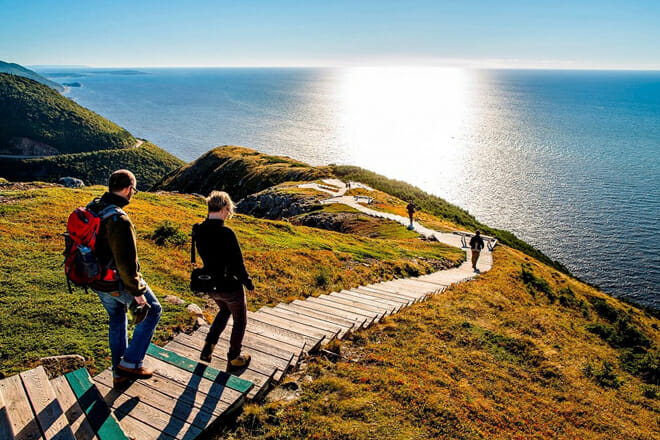
First things first, let’s get familiar with the basic rules.
You can bring as much money as you want into Canada, whether in cash or other monetary instruments (like traveler’s cheques, money orders, or bonds).
However, there’s one important detail to remember: if you have CAN$ 10,000 or more in your possession, you must declare it to the Canada Border Services Agency (CBSA) .
Filling out a declaration form is an essential step when arriving at the border with a large sum of money.
The CBSA officer will ask you to complete the necessary paperwork, where you’ll need to provide information about the amount and type of currency you’re bringing.
The purpose of this form is to prevent issues such as money laundering and financing of terrorist activities.
So, keep in mind that honesty is the best policy when it comes to declaring your money!
Now, let’s talk about spending money in Canada.
Since the cost of living varies between cities, it’s a good idea to do some research on the prices you can expect for accommodation, food, and activities.
Generally, you can use your credit or debit cards at most places, but it’s always a smart move to carry some cash for smaller purchases or emergencies.
Remember to factor in the exchange rate when planning your budget, as the Canadian dollar’s value fluctuates in relation to foreign currencies.
Alright, here’s a quick rundown of the important points we covered:
- You can bring unlimited money into Canada but must declare amounts of CAN$ 10,000 or more.
- Complete the required CBSA form for currency declaration.
- Research the costs of your Canadian destination for budgeting purposes.
- Keep some cash on hand, even if using cards for most transactions.
With these tips in mind, you’re ready to enjoy your trip to Canada, fully prepared to navigate the ins and outs of currency regulations.
Methods of Payment
When visiting Canada, you might wonder about the best methods of payment to use while exploring this beautiful country.
Well, fear not! I’ve got you covered with a quick rundown of some popular and convenient payment options.
Cash is always handy to have when traveling, especially for small purchases or tipping service staff.
Ensure you have some Canadian dollars on hand for these situations.
You can exchange your currency for Canadian dollars at a local financial institution, as well as some hotels and airport kiosks.
But let’s be honest – we live in a digital world, and credit cards are our trusty companions.
In Canada, most businesses accept major credit cards like Visa, Mastercard, and American Express.
So, feel free to use your credit card for larger purchases, hotel bookings, and dining experiences.
Just remember to double-check with your bank regarding any transaction fees when using your card internationally.
Now, don’t forget about the convenience of debit cards.
Canada has a vast network of ATMs where you can withdraw Canadian dollars directly from your bank account using your debit card.
You’ll find ATMs in shopping centers, banks, and even some convenience stores.
However, it’s a wise idea to check with your financial institution about any withdrawal fees or exchange rates that may apply.
To give you a quick comparison of these payment methods, I’ve put together a handy table:
So, there you have it – a concise guide to the most common payment methods in Canada.
Just remember to budget wisely, stay vigilant of any fees, and always have a backup option.
Taxes and Duties
When you’re planning a trip to Canada, it’s essential to know what to expect in terms of taxes and duties.
The Canada Border Services Agency (CBSA) collects these fees on imported goods on behalf of the Canadian Government.
So, let’s dive into the details.
First things first – when you arrive in Canada, you must fill out a CBSA declaration card to inform them of all the goods you obtained while outside of Canada.
I know paperwork isn’t the most fun aspect of travel, but this step is a must.
Now you might be wondering, “What items am I going to pay duty and taxes on?”
Well, you’ll be happy to know that Canada offers a duty and taxes estimator for your convenience.
This tool can help you get an idea of what you might owe when bringing goods into the country.
Some common items that may be subject to duty and taxes include:
- Farm equipment
- Equipment used in contracting, construction, or manufacturing
- Vehicles intended for business use
- Items bought while traveling
- Leased or rented items
However, Canada also offers something called “personal exemptions,” which allows you to bring specific quantities of goods into the country duty-free and tax-free.
The amount of time you spend in Canada determines your personal exemptions.
For example, if you’re in Canada for 24 hours or more, you may claim up to CAN$ 200 worth of goods duty-free as your personal exemption, and all goods must be with you when you arrive.
If you’re in Canada for 48 hours or more, you may claim up to CAN$800 worth of goods duty-free.
Of course, no vacation would be complete without a visit to the duty-free shop.
While you still need to declare your duty-free purchases, they’re exempt from taxes and duties as long as you stay within your personal exemptions.
When it comes to paying duty and taxes, remember that fees may vary depending on your personal exemptions and the value of the goods you’re importing.
It’s always smart to be prepared, so set aside some cash or have a credit card handy for unexpected fees.
Budgeting for Transportation and Accommodation
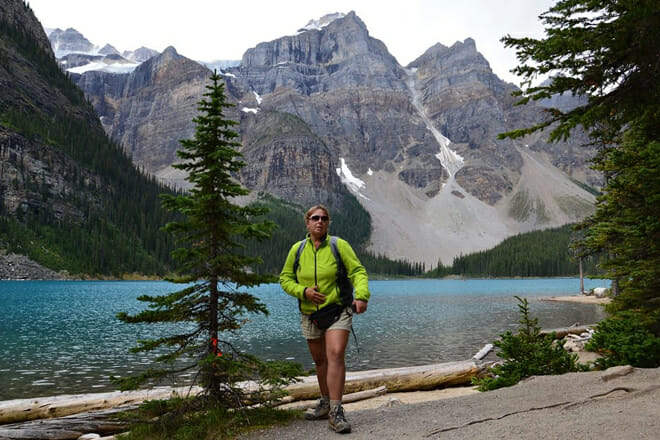
When planning your trip to Canada, figuring out your transportation and accommodation budget is crucial.
Let’s dive into some tips for smart spending during your Canadian adventure.
First, consider the type of transportation you’ll need during your stay.
Are you planning to rent a car, use public transit, or perhaps even hop on a bike to explore the city?
The average cost of local transportation in Canada can be around CA$ 30 per day.
If you’re traveling as a family, weigh your options carefully to find the most affordable (and fun!) mode of transport.
Next, let’s talk about accommodation.
The best hotels in Montreal might be a bit pricey, but there are also budget-friendly options available.
For families visiting Toronto, check out the best family hotels in Toronto that offer kid-friendly amenities and space for everyone.
Canada offers a wide range of accommodation choices, from budget hotels and hostels to luxurious stays.
Your overall costs will depend on the type of lodging you choose and the city you’re visiting.
The average hotel price in Canada for a couple is CA$ 256 per night.
However, if you’re willing to be a bit flexible and creative, you can likely find more budget-friendly options.
Here are some budgeting tips for your stay in Canada:
- Look for off-season deals or promotions to get better rates on your accommodation.
- Booking your stay well in advance can also help you save money on accommodation costs.
- Consider using home-sharing platforms or staying in a vacation rental to cut down on expenses.
- Opt for accommodations that offer complimentary breakfast, as this can help save on meal costs during your stay.
By carefully planning your transportation and accommodation budget, you’ll be able to enjoy your Canadian trip without breaking the bank.
Traveling with Goods
When packing your luggage, it’s crucial to know the restrictions and rules about what you can bring across the border.
First off, be aware of the items you’ll need a permit for, such as firearms and explosives.
Canada has strict rules surrounding these, so double-check the regulations before trying to bring them in.
You can find more details on restricted and prohibited goods online.
When it comes to food, plants, animals, and related products, there are several restrictions.
Some items may require a permit or be outright prohibited.
As someone who’s traveled to Canada, I can’t stress enough how important it is to adhere to these guidelines.
My personal advice?
Do some research, plan ahead, and double-check your items before embarking on your journey.
This way, you can enjoy your family trip without any worries.
Remember, Canada is an incredibly welcoming and beautiful country teeming with incredible adventures awaiting you and your loved ones.
Crossing the Border

Now that we discussed how much money you need to declare to the Canada Border Services Agency, let’s talk about your interactions with border officers.
While you might be a bit nervous, remember that they’re just doing their job to keep everyone safe.
Make sure to have your passport ready and answer their questions truthfully.
If you’re a member of a Trusted Traveler Program, like the NEXUS program, your border crossing process will be even smoother with access to expedited lanes.
An additional tool that can help streamline your entry process is the Primary Inspection Kiosk.
These user-friendly kiosks allow you to complete your declaration electronically, saving you time and hassle.
Courier shipments and Automated Border Clearance Kiosks are also available to help speed up the process for frequent travelers and those with eligible goods.
Health and Safety Regulations
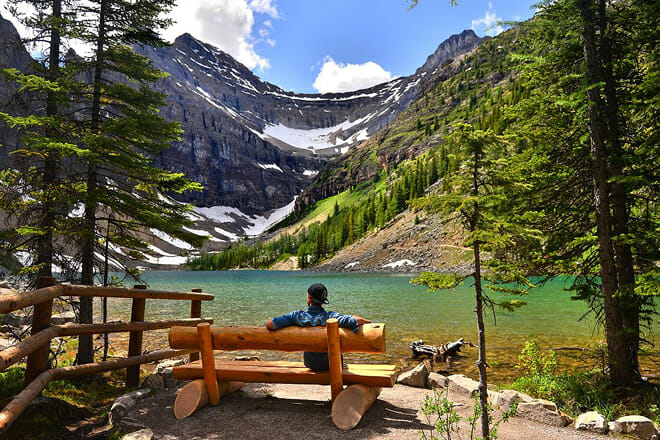
When planning a family trip to Canada, it’s essential to be aware of the health and safety regulations.
This knowledge will help you have a seamless and enjoyable experience.
If you’re packing health products or prescription drugs, make sure they’re in their original packaging and labeled correctly.
This is to avoid any mix-ups or misunderstandings at customs.
Remember, if you’re unsure whether an item is allowed, it’s better to be safe than sorry.
Check what you can bring to Canada for more information.
Did you know that certain cultural objects are also subject to regulations?
To protect Canada’s vibrant cultural heritage, it’s important to ensure that any souvenirs or artifacts you bring adhere to these rules.
Check before buying or transporting such items.
Traveling may expose you and your family to communicable diseases.
In case you feel unwell or suspect you’ve been exposed to a disease, always alert a quarantine officer upon arrival.
They are trained professionals who can provide guidance on the steps to take.
Here’s a quick rundown of tips for a healthy and safe trip:
- Pack all health products and medications in their original containers.
- Be aware of regulations concerning cultural objects.
- Stay vigilant regarding communicable diseases and contact quarantine officers when necessary.
Parting Words

Taking into account the diverse offerings of Canada, from its cosmopolitan cities to its tranquil natural beauty, it’s evident that costs can fluctuate depending on the kind of traveler you are.
The question, “How much money should I bring to Canada?” doesn’t have a one-size-fits-all answer, rather, it depends on your travel style and your plans.
Whether you’re craving poutine in the lively streets of Toronto, soaking up arts and culture in Montreal, or seeking the whispering wilderness of the Rocky Mountains, your budget will need to accommodate.
Generally, though, think in terms of C$200 per day for a moderate budget, allowing for accommodation, meals, transportation, and some attractions.
Naturally, a more luxurious trip will command a higher price, while budget-savvy adventurers could make do with less.
So pack your bags and your wallet accordingly; Canada’s charm is awaiting your discovery.
Related: Travel Cost Canada
Frequently Asked Questions
How much does a 1-week stay in canada usually cost.
A 1-week stay in Canada can vary depending on your preferences and travel style, but you can expect to spend around CAD 800-1,500. This includes accommodation, meals, transportation, and some sightseeing.
What Is The Average Price Of A Meal In Canada?
In Canada, the average price of a meal at an affordable restaurant is around CAD 15-25, while a regular fast-food meal might cost you around CAD 10-15.
What Is The Recommended Spending Money For 2 Weeks In Canada?
For two weeks in Canada, we recommend budgeting about CAD 1,600-3,000 to cover your expenses, including accommodation, food, transportation, and leisure activities. This is just a rough guideline, and individual budgets will definitely vary.
What Is The Best Way To Carry Money In Canada?
The best way to carry money in Canada is to use a combination of credit cards, debit cards, and some cash. Most establishments accept cards, and ATMs are widely available. However, it’s always a good idea to have some cash on hand for smaller purchases or businesses that don’t accept cards. Just make sure to keep your money safe and secure!

Nomadic Matt's Travel Site
Travel Better, Cheaper, Longer
Canada Travel Guide
Last Updated: November 21, 2023
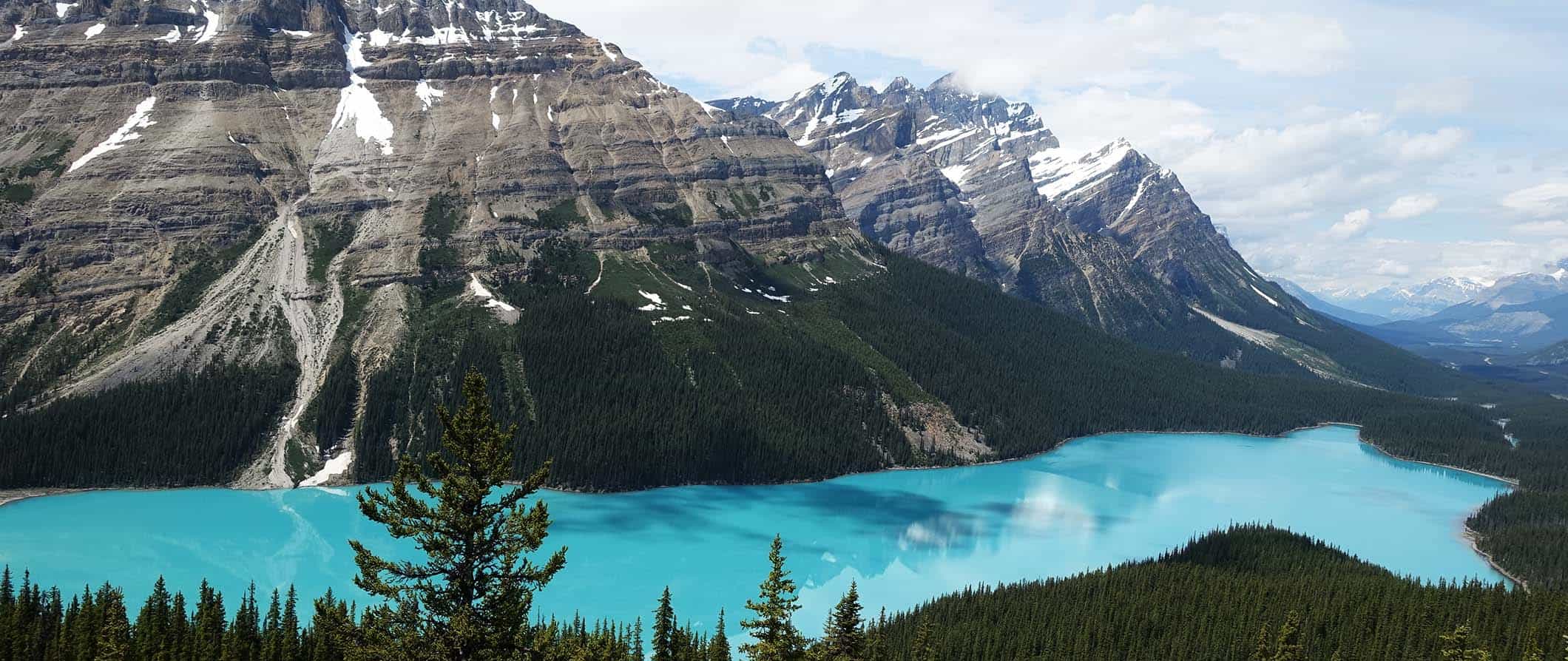
Canada is often skipped over on many round-the-world trips owing to its proximity to the US, poor flight connections, and few budget cross-country travel options.
But those people miss out on so much! Canada is one of the best countries in the world for RVing and road trips and it’s brimming with outdoor activities for all levels. Backpacking Canada is an amazing experience.
I love my friendly neighbor to the north and believe Canada is a really underrated destination. There’s a reason everyone around the world loves Canadians after all.
To top it all off, it’s also easy to get a working holiday visa here so you can stay longer and make money while you explore (there are huge seasonal industries across the country).
This travel guide to Canada can help you plan your trip, save money, and make the most of your visit to this friendly natural wonderland!
Table of Contents
- Things to See and Do
- Typical Costs
- Suggested Budget
- Money-Saving Tips
- Where to Stay
- How to Get Around
- How to Stay Safe
- Best Places to Book Your Trip
- Related Blogs on Canada
Click Here for City Guides
Top 5 things to see and do in canada.

1. Tour Toronto
Toronto is often considered the most multicultural city in the world, as over half of the city’s population is foreign-born. It’s an awesome, hip, artsy city. Don’t miss Kensington Market for good eats and cool shops, and there are plenty of tasty eats to be found in the city’s massive Chinatown as well. If you want to play tourist, head up the CN Tower for the best views of the city. For a bit of swimming in the summer, check out some of Canada’s easily accessible beaches on Lake Ontario where you can go kayaking, windsurfing, stand-up paddle boarding, and more. And if you’re traveling with kids, don’t miss the nearby amusement park Wonderland.
2. Explore Jasper and the Columbia Icefield
The Icefields Parkway connects Banff and Jasper in Western Canada and is one of the most scenic drives in the country (if not the world). Stop along the way at the Columbia Icefield, an enormous icefield that feeds into eight glaciers. You can travel onto the 10,000-year-old Athabasca Glacier where you can hike around and even drink from the crystal-clear icy glacial water. If you’re not squeamish about heights, walk out to the cliff-top glass-floored Skywalk to get a spectacular panorama of the entire area. It’s easy to reach via an enormous bus or opt for a hiking tour where you can walk the glacier. There’s even a restaurant at the top that’s a bit expensive but worth at least a coffee for the view.
3. Road trip the Maritimes
Newfoundland, Prince Edward Island, Nova Scotia, and New Brunswick make up Canada’s east coast. If you want to spend your days hiking, relaxing by the ocean, and whale watching, this is the place to do it. Nova Scotia is sometimes considered the most beautiful province with rolling hills leading to lush green coastal cliffs over frothy shores. There are colorful little fishing villages like Lunenburg, a UNESCO World Heritage Site considered one of the “Prettiest Painted Places in Canada.” It boasts delicious fresh seafood and friendly locals to chat with. Be sure to set aside a few days for an incredible road trip on the 298-kilometer (185-mile) Cabot Trail around Cape Breton and spend in the Highlands National Park where you can hike, camp, or fish. The east coast is stunning and sees very few tourists compared to other areas of the country.
4. Hang out in Montreal
Montreal offers a look at the French side of the country. Old Montreal is thriving with culture and a mix of old and new architecture within its European-style cobblestone streets, the Notre Dame Cathedral, museums, and river cruises. The other side of Montreal is extremely modern with an underground city and mall, funky jazz clubs, and amazing cuisine, which make this the hippest and most romantic city in the country. It’s also cheaper than most of the other large cities in Canada. Don’t forget to try the poutine and bagels when you visit!
5. Have fun in Vancouver
Other things to see and do in canada, 1. celebrate the calgary stampede.
During July, over 1 million people descend on Calgary for this multi-day rodeo, drinking festival, and carnival where everyone gets to be a cowboy. It’s a lot of fun, and you’ll meet tons of people from around the world. It’s one of Canada’s premier events so book early — prices rise and accommodation disappears fast! Also, wear cowboy boots and a hat if you want to fit in.
2. Hit the slopes
The mountains in Canada offer great skiing and snowboarding during the winter. Banff is a popular mountain town known for its excellent trails. It’s quite busy during the winter as locals and visitors alike hit the slopes, but it’s popular for a reason. While Banff is the most popular place to go, there are tons of other great skiing destinations in the country. Sunshine Village, Whistler Blackcomb, Lake Louise, Kicking Horse, and Mont Tremblant are just a few to check out (they stretch from British Columbia to Quebec so you’ve got lots of choices).
3. Discover Vancouver Island
Take a few days off from Vancouver to explore nearby Vancouver Island . Eat delicious seafood, hike, spot some whales (lots of orcas live near here), shop, and lounge on the beach. This is a place to just sit and relax. Since it is so close to Vancouver, it’s a popular getaway with the locals during the summer. Victoria, the capital of British Columbia, is located on the island. It’s a quiet but gorgeous little city worth a couple days of exploring. From here you can also visit places like Tofino, where the bustling surf community has evolved into a fun hippie town. If you’d rather hike an incredible yet challenging trail, the West Coast Trail is famous for its rugged beach and rainforest trails, man-made ladders through the trees, and rare wildlife.
4. Hike the rainforest
Hike the Pacific Rim National Park for a wonderful look at some temperate rainforests on Vancouver Island. It’s one of the most popular parks in Canada, home to Western Red Cedars, Pacific Silver Firs, and tons of wildlife including deer, wolves, bears, and cougars. The Long Beach area is one of the most accessible places for hiking, but the sand dunes behind Wickaninnish Beach on the South Beach Trail are also worth the trek.
5. Explore Calgary
Often skipped over by travelers since it’s not on the coast, Calgary actually has a lot to offer when it comes to free and low-cost activities. Have a picnic in one of its many parks, go rollerblading, watch a hockey game, or head up to the top of the surrounding peaks. There’s great hiking, kayaking, skiing, water rafting, and camping here and you can easily rent a bike and explore the city via its many bike paths. Although it’s been long dismissed as an oil town, it’s one of the liveliest cities in Canada.
6. Visit the galleries of Toronto
Toronto has some of the best museums and galleries in the country, so take a day or two to admire the art of the city. The Royal Ontario Museum (ROM) and the Art Gallery of Ontario (AGO) are the two most famous art museums, but there are a plethora of smaller, specialty galleries too, like the Textiles Museum of Canada and the Museum of Contemporary Art. Galleries often offer discounts on certain days of the week, so check before you go to save some cash.
7. Take a road trip
This huge country is best explored by car or RV. It’s the ideal way to find yourself in tiny little towns, majestic mountains, amazing countryside, and plenty of off-the-beaten-track places. If you have a lot of time, this is your best and cheapest option to see the country. The Trans-Canada Highway stretches from coast to coast, making a road trip relatively easy to plan. Just keep in mind that the weather can be unpredictable (especially in the winter). Of course, you’ll have to keep your eyes peeled for wildlife and you’ll want to be prepared for long stretches of driving without any rest stops or gas stations. However, it’s worth it — the changing landscapes and scenic vistas are out of this world! you could easily spend weeks or months touring the country and still barely scratch the surface. For the best car rental prices, use Discover Cars .
8. Stroll the nation’s capital
Ottawa is a very easy city to explore on foot. Home to museums, art galleries, and plenty of shops, it’s a charming city worth visiting for a couple days. You can take a tour of Parliament Hill (the historic buildings where the Canadian government operates) or cross the Ottawa River and visit Quebec (the great Museum of Civilization is just across the bridge). The Canadian War Museum and the National Gallery of Canada are two must-visit museums in Ottawa. Also, don’t miss the busy Byward Market, and be sure to check out the craft breweries in Westboro. Try a beavertail (a sweet pastry with sugary toppings) when you’re here!
9. Get off the beaten path in Nova Scotia
The locals boast that Nova Scotia is home to the friendliest people in Canada. They might be right. That, combined with over 100 beaches, picturesque lighthouses, great sailing, mouth-watering seafood (this area of Canada is the main fishing region), and a marvelous coastline, makes Nova Scotia an amazing place to visit in Canada. Plus, the province doesn’t see lots of tourists so it’s far less crowded and unspoiled compared to other regions. It’s perfect for road trips and camping.
10. Admire Quebec City
Quebec City’s Old Town offers cobblestone walkways, well-preserved 17th-century architecture, and the only North American fortress, the Citadel. The historical Quartier Petit Champlain is stunning and gives you an authentic French feeling with little cheese shops, bistros, creperies, and boutiques. It’s especially magical in December as it’s fully decorated with twinkling lights, snow-covered canopies, and lined with beautiful Christmas trees. In the warm weather, you can easily lose track of time wandering the streets admiring the flowers everywhere and colorful window shutters and storefronts. Don’t forget to sample the local ice ciders, head out for drinks on Grande Allée, and explore the streets below the stunning Château Frontenac.
11. Visit Kelowna
Warm in the summer and mild in the winter, this glacial valley has some of the best weather in the entire country. It’s no wonder that this is where many Canadians spend their vacations. There’s a marina and a few golf courses, not to mention that the Okanagan Valley is home to Canada’s best vineyards and wineries (a four-hour wine tour costs around 125 CAD). In the summer, Canadians rent fancy houseboats complete with waterslides to vacation on nearby Okanagan Lake. Overall, this is just a gorgeous slice of the country that shouldn’t be missed.
12. Head north to Churchill, Manitoba
This might be a small town in the middle of nowhere, but it also happens to be the Polar Bear Capital of the World, the Beluga Whale Capital of the World, and one of the best places to view the Aurora Borealis. You can ride in a tundra buggy (a special bus raised on giant wheels to keep you out of reach from polar bears) and head out on the open plains to see polar bears in their natural habitats. Mother nature is alive and thriving here. Day tours in a tundra buggy during the summer start at around 250 CAD, including lunch.
13. See the iconic Niagara Falls
This is one of the most visited attractions on the entire continent. You can never imagine how big it is until you see it up close (you never envision so much mist either). To see it up close, on a boat tour and head out into the waterfalls (be prepared to get soaked). Walks runs a daily boat tour that has exclusive access to the best spots and includes access to behind the falls (tours are 107 CAD). The town itself is touristy and cheesy so don’t spend more than a day or two (it’s fun for kids though).
14. Get lost in the Yukon
The Yukon is the perfect place to get your nature fix. The chances of seeing a bear, elk, or deer are incredibly high (or you can tour the Yukon Wildlife Preserve, where you’re guaranteed to see them). Go hiking in Tombstone Territorial Park, soak in a mineral hot pool at the Takhini Hot Springs, or swing by the Sign Post Forest with its unique collection of over 77,000 signposts. Hardly anyone ever visits the Yukon as visitors tend to stick to the major cities in the south of the country. Because of that, you’ll find yourself surrounded by unspoiled nature.
For more information on specific cities in Canada, check out these guides:
- Calgary Travel Guide
- Montreal Travel Guide
- Nova Scotia Travel Guide
- Ottawa Travel Guide
- Quebec City Travel Guide
- Toronto Travel Guide
- Vancouver Travel Guide
- Vancouver Island Travel Guide
Canada Travel Costs
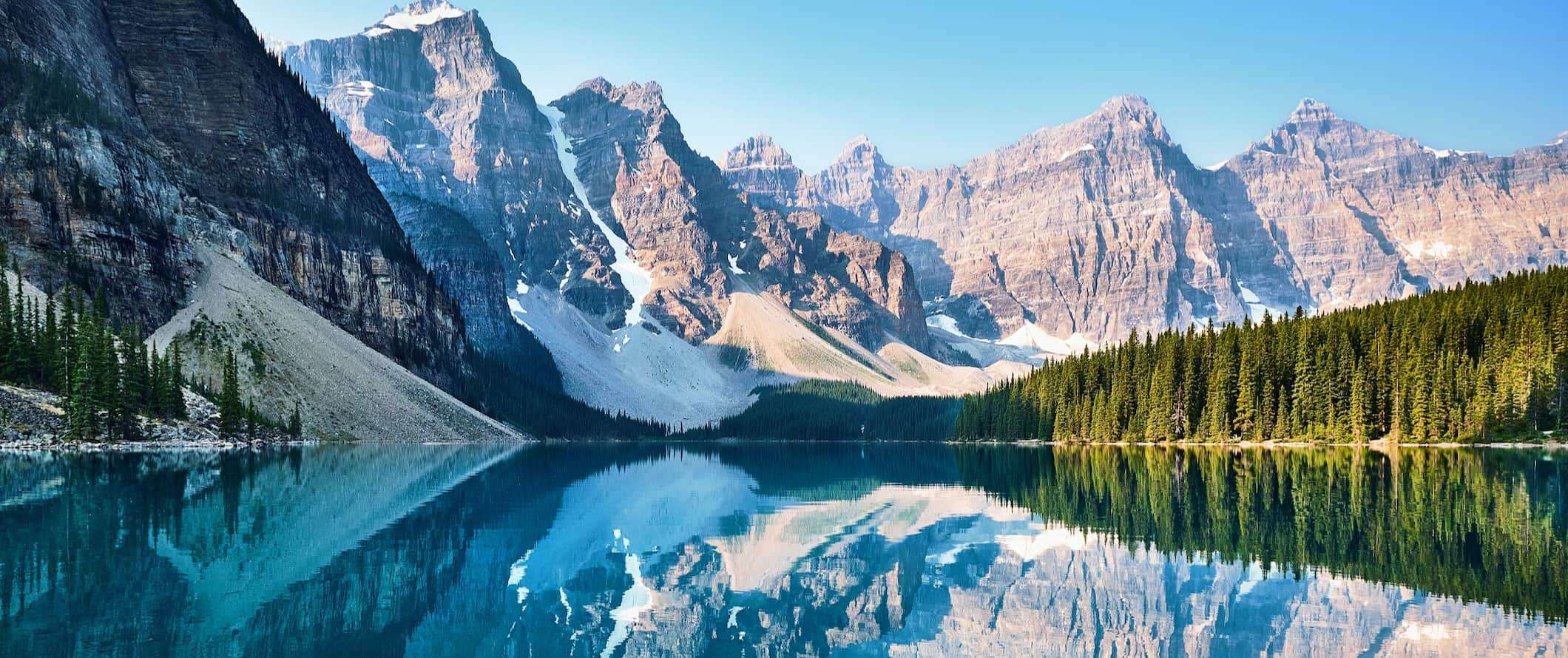
Accommodation – Rates vary a lot depending on what city you’re staying in. On average, you’ll end up paying 35-45 CAD per night for a dorm room at a hostel. Expect to pay at least 90-120 CAD for a budget hotel room. Prices rise drastically in larger cities (notably Vancouver, Toronto, and Ottawa).
Airbnb is available across the country, rivaling budget hotels for price and convenience. Expect to pay an average of 60-90 CAD per night for a private room, while entire homes/apartments start around 100 CAD. Keep in mind that many smaller towns won’t have many options. However, there are usually locally owned hotels or motels that are generally quite cheap. Also, Airbnb prices can double (or triple) when not booked in advance so book early.
If camping is your thing, you’ll have plenty of options across the country. Prices vary depending on the grounds but expect to pay between 25-35 CAD per night for a basic pitch for two people. Many of the major national and provincial campgrounds sell out early in the summer, so be sure to book in advance during the peak season (June-August).
Food – Overall, the food here is a collage of dishes from other cultures, owing to the country’s diverse history of immigration. On the coasts, seafood is king while the prairies have more of a meat and potatoes diet. Be sure to sample some of Canada’s famous staples like poutine (fries with gravy and cheese curds), beaver tails (fried dough with maple syrup), Canadian bacon, and the oddly tasty ketchup chips.
Overall, food can be inexpensive if you stick to cooking for yourself, eating street food, and dining at cheap fast-food places. Cheap sandwich shops and fast food are your best bet, usually costing less than 13 CAD per meal.
Pizzas cost 15-20 CAD while Asian food is usually 10-15 CAD for a main dish.
A meal out at a casual restaurant costs 20-35 CAD for a main dish and a drink. Casual fine dining costs double that.
Beer is around 7 CAD while a latte/cappuccino is around 4.60 CAD. Bottled water costs 2 CAD.
If you cook your own food, expect to pay 50-75 CAD per week for groceries. This gets you basic staples like rice, pasta, veggies, and some meat or fish.
Backpacking Canada Suggested Budgets
How much does it cost to visit Canada? Well, it’s complicated. How much you spend largely depends on where in Canada you’re going to visit. For example, Canada’s biggest cities like Toronto, Ottawa, and Vancouver are considerably more expensive than the smaller ones (like Halifax, St. John’s, and Quebec City). The rural areas are even cheaper but getting around costs more as you may need to rent a car or take expensive buses.
On a backpacking budget, you should plan to spend around 70 CAD per day. This assumes you’re staying in a hostel dorm, cooking all your meals, using public transportation, limiting your drinking, and sticking to free activities like hiking and enjoying nature.
On a mid-range budget of 185 CAD per day, you can stay in a private Airbnb, take buses between destinations, eat out for most meals, enjoy a few drinks, and do more paid activities like visiting museums or taking a food or wine tour.
On a “luxury” budget of 310 CAD per day or more, you can stay in a hotel, eat out for all your meals, drink more, rent a car to get around, and do whatever tours and activities you want. This is just the ground floor for luxury though, the sky is the limit!
You can use the chart below to get some idea of how much you need to budget daily, depending on your travel style. Keep in mind these are daily averages — some days you’ll spend more, some days you’ll spend less (you might spend less every day). We just want to give you a general idea of how to make your budget. Prices are in CAD.
Canada Travel Guide: Money-Saving Tips
Given the size of Canada, there are plenty of ways to save money when you travel, but it varies by region (as I’ve been repeating). The general tips below can help but for specific tips visit our city guides!
- Stay with a local – As Canada is not the most budget-friendly destination owing to its inconvenient size, you’ll be able to cut down on your costs by using Couchsurfing . While not huge in smaller towns, you won’t have a hard time finding a host in the major cities. Just be sure to plan ahead during the summer as that is prime tourist season and it’s much harder to find a host then.
- Enjoy outdoor summer festivals – Since Canadians are stuck indoors all winter, they love to make the most of hot days by packing in lots of festivals into the short summer. Many of these, like Heritage Days (Edmonton), Kits Days (Vancouver), and Caribana (Toronto), are free. Check out upcoming events online by visiting the local tourism board’s website.
- Embrace the outdoors – A vast country with a relatively minuscule population leaves lots of potential for outdoor activities. Rent a pair of cross-country skis or snowshoes in the winter and enjoy the free use of many trails (versus expensive downhill lift passes). In the summer, you can bike, hike, kayak, or canoe. The cost of most equipment rentals is around 25-100 CAD for a day, and you can explore many areas at no further cost.
- Take the bus – Megabus runs in Ontario and Quebec (with connections into the U.S., including NYC). You can find tickets for as little as 1 CAD if booked in advance. This is the most affordable way to get between Toronto and Montreal (or into the U.S.).
- Use ride-sharing services – If you are going to be traveling between cities or provinces, keep an eye out for people sharing their vehicles. Craigslist, Couchsurfing, Kangaride, and Facebook all have ride-share pages for most major cities. If you can find someone traveling in your direction you can tag along and share the cost of gas.
- Eat street food – Every major Canadian city has plenty of street vendors selling hot dogs, sausages, and veggie dogs for as little as 3 CAD. You won’t find a cheaper lunch!
- Take a free walking tour – Most major cities in Canada offer free walking tours. They are a great way to explore and get a feel for each location and its history. Most last a couple of hours and don’t need to be booked in advance. Just remember to tip your guide at the end!
- Buy gas on native reserves – If you are driving around the country, keep your eyes peeled for native reserves — they are the cheapest places to buy gas in Canada. With lower taxes, you’ll find gas prices significantly cheaper than anywhere else. They are also great places to stop and experience the vibrant cultures of Canada’s First People.
- Bring a water bottle – The tap water here is safe to drink so bring a reusable water bottle to save money. LifeStraw makes a reusable bottle with a built-in filter to ensure your water is always safe and clean.
Where to Stay in Canada
Hostels are not that plentiful across Canada, but generally, they’re high quality and clean. Here are my suggested places to stay in Canada:
- The Only Backpacker’s Inn (Toronto)
- The Parkdale Hostellerie (Toronto)
- Cambie Hostel Gastown (Vancouver)
- Samesun Vancouver (Vancouver)
- HI Calgary City Centre (Calgary)
- HI Lake Louise (Banff)
- HI Montreal Hostel (Montreal)
- Alexandrie-Montréal (Montreal)
How to Get Around Canada

Public transportation – Within city limits you’ll find great public transportation networks. Toronto and Montreal are the only two cities in Canada with subway systems (although Vancouver has SkyTrain), but even the smallest Canadian cities have extensive bus routes. It usually costs about 3.25 CAD for a one-way ticket.
Larger cities have passes designed for tourists to make the most of the metro system. For example, Toronto has a daily pass for unlimited travel for 13.50 CAD.
Bus – There’s no singular country-wide bus system here. Instead, regional operators vary per location. Megabus is the cheapest option when it comes to traveling between cities in Ontario and Quebec. Fares can be as low as 1 CAD if booked in advance. Red Arrow is primarily an Alberta coach line. On the east coast, Maritime Bus is the main coach company (except in Newfoundland where it’s DRL Group).
Toronto to Ottawa costs about 30-50 CAD with Flixbus, while Ottawa to Montreal is around 35-50 CAD. A longer ride — like the 13-hour drive from Calgary to Vancouver — costs around 125-165 CAD.
To find bus routes and prices, use BusBud .
Train – There is a train service (VIA Rail) that runs from coast to coast and is very scenic, albeit not cheap. Many train routes are currently suspended or running with limited space due to COVID-19, meaning that journeys take even longer. It takes over 24 hours to get from Halifax to Ottawa, costing about 150-170 CAD. On the other hand, shorter routes like between Montreal and Quebec City (a 3.5-hour journey) are more affordable and start at 36 CAD.
Flying – As your last alternative, you can fly, but since the country has only two major airlines (WestJet and Air Canada) prices are often high. Round-trip flights from Toronto to Vancouver usually start at around 200 CAD when booked early but they can easily cost triple that price. Round-trip from Ottawa to Calgary is around 270 CAD, but again, this is when booked in advance. Expect to pay at least double that price if you don’t book early.
Overall, flying is worthwhile only if you want to see specific cities and have limited time. For shorter routes (like Montreal to Ottawa) you’ll save a lot of money if you just take the bus or train.
Car Rental – If you’re going between provinces or staying a while in the country, consider renting a car for 35-50 CAD per day. This is one of the best, most convenient ways to get around the country — especially if you’re interested in getting out of the cities and into Canada’s wilderness (ideally if you have someone to share the cost with too).
For the best car rental prices, use Discover Cars .
Ridesharing – If you are traveling between cities or provinces, keep an eye out for people sharing their vehicle. Check these websites for rides:
- Couchsurfing
When to Go to Canada
Since Canada is such a large country, climate and temperature vary drastically from coast to coast. Canada has very defined seasons, and winter can be harsh and long in some places. For example, winters in the Northern Territories begin early and end late, and places like Newfoundland and Labrador can experience snow until late May.
On the other hand, winter in the Canadian Rockies is epic and people from all over the world flock to British Columbia and Alberta to hit the slopes around Whistler, Banff, and Revelstoke. Prepare for cold temperatures, though. In some places, like on the prairies, it can get as cold as -40°C (-40°F). In short, only visit in the winter if you’re planning to do winter sports.
Summer in Canada is beautiful, but it’s also the busiest time of year. June to the end of September is the main tourist season, with inflated prices and large crowds. On the other hand, the temperatures are lovely during this time, often in the high 20s°C (70s°F). There are music festivals galore and it’s a great time to hike, bike, and explore the Great Lakes.
Shoulder season is also a fantastic time to visit Canada, although spring (March-June) can be quite wet. Fall (September-October) is highly recommended, as temperatures are still warm enough and the autumn foliage is really something special. Quebec and the Atlantic Provinces are well worth an autumn trek.
How to Stay Safe in Canada
Canada is a safe place to backpack and travel — even if you’re traveling solo, and even as a solo female traveler. Violent attacks are rare and tend to be confined to certain areas (generally where drug and gang violence are a problem). You may encounter petty crime, like theft, around popular tourist landmarks, though that isn’t super common. Nevertheless, always keep an eye on your belongings, especially while taking public transportation, just to be safe.
Solo female travelers should feel safe here, however, the standard precautions apply (never leave your drink unattended at the bar, never walk home alone intoxicated, etc.).
If visiting in the winter, dress warmly. It gets so cold here that people literally freeze to death so take precautions and always keep an eye on the forecast.
If you’re going out hiking, always check the weather beforehand and ensure you have enough water. Bring sunscreen and a hat too. It can get humid here!
Canada’s cannabis legalization has a whole lot of rules and restrictions. The CBC has a great outline on everything you need to know if you’re thinking of consuming cannabis while in Canada.
Scams here are rare, but it never hurts to be prepared. Read about common travel scams to avoid here if you’re worried about getting ripped off.
If you experience an emergency, dial 911 for assistance.
The most important piece of advice I can offer is to purchase good travel insurance. Travel insurance will protect you against illness, injury, theft, and cancellations. It’s comprehensive protection in case anything goes wrong. I never go on a trip without it as I’ve had to use it many times in the past. You can use the widget below to find the policy right for you:
Canada Travel Guide: The Best Booking Resources
These are my favorite companies to use when I travel. They consistently have the best deals, offer world-class customer service and great value, and overall, are better than their competitors. They are the companies I use the most and are always the starting point in my search for travel deals.
- Skyscanner – Skyscanner is my favorite flight search engine. They search small websites and budget airlines that larger search sites tend to miss. They are hands down the number one place to start.
- Hostelworld – This is the best hostel accommodation site out there with the largest inventory, best search interface, and widest availability.
- Booking.com – The best all around booking site that constantly provides the cheapest and lowest rates. They have the widest selection of budget accommodation. In all my tests, they’ve always had the cheapest rates out of all the booking websites.
- Get Your Guide – Get Your Guide is a huge online marketplace for tours and excursions. They have tons of tour options available in cities all around the world, including everything from cooking classes, walking tours, street art lessons, and more!
- SafetyWing – Safety Wing offers convenient and affordable plans tailored to digital nomads and long-term travelers. They have cheap monthly plans, great customer service, and an easy-to-use claims process that makes it perfect for those on the road.
- LifeStraw – My go-to company for reusable water bottles with built-in filters so you can ensure your drinking water is always clean and safe.
- Unbound Merino – They make lightweight, durable, easy-to-clean travel clothing.
- Top Travel Credit Cards – Points are the best way to cut down travel expenses. Here’s my favorite point earning credit cards so you can get free travel!
Canada Travel Guide: Related Articles
Want more info? Check out all the articles I’ve written on Canada travel and continue planning your trip:
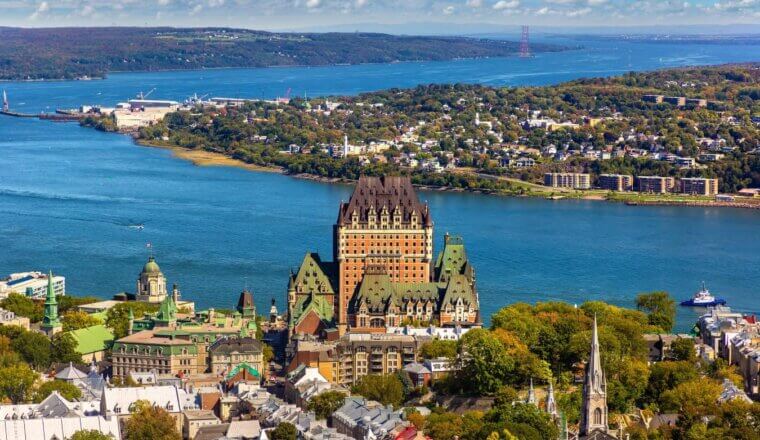
Where to Stay in Quebec City: The Best Neighborhoods for Your Visit
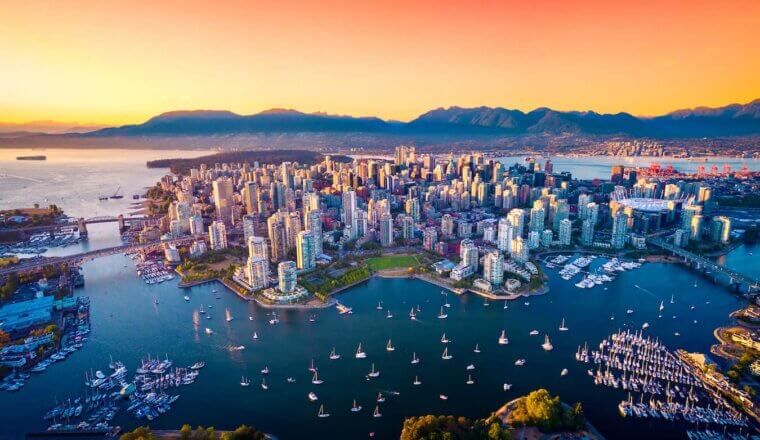
Where to Stay in Vancouver: The Best Neighborhoods for Your Visit
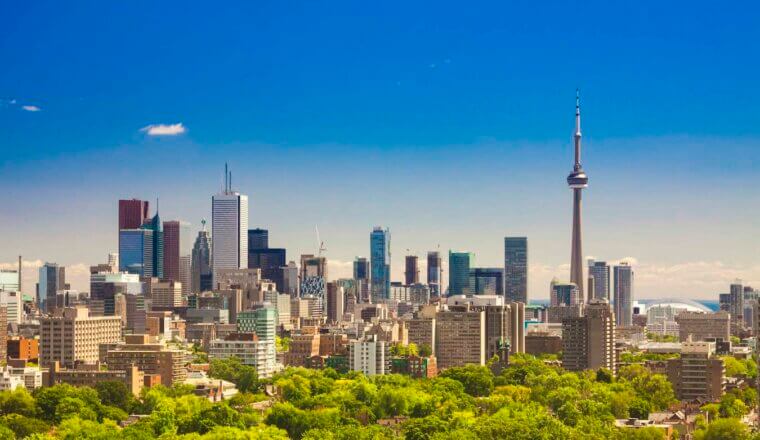
Where to Stay in Toronto: The Best Neighborhoods for Your Visit
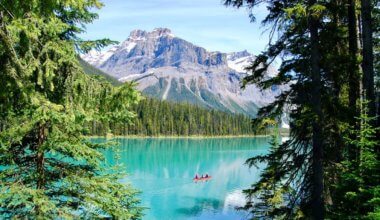
Canada Road Trip: A One Month Suggested Itinerary
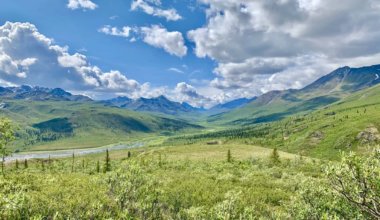
How to Road Trip the Yukon on a Budget
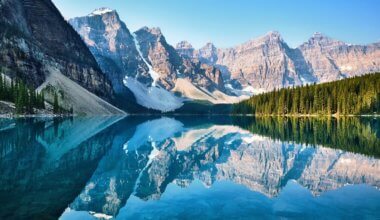
How to See Alberta: A 10-Day Suggested Driving Itinerary
Get my best stuff sent straight to you, pin it on pinterest.
- Where To Stay
- Transportation
- Booking Resources
- Related Blogs
- Skip to main content
- Skip to site information
Language selection
Help us to improve our website. Take our survey !
Travelling and money
Take steps that will help you avoid financial problems that may ruin your trip. Make sure you purchase travel insurance , and most importantly make sure you always carry a backup source of funds in case of emergency or an unexpected delay.
On this page
Cards (credit, debit and pre-paid).
- Traveller’s cheques
Travelling with $10,000 or more
Check with the embassy or consulate in Canada of the country you are planning to visit to make sure you are allowed to import or export its currency. If you are permitted to import its currency, bring enough cash to get by for a couple of days and keep it in a money belt or in several different pockets in case your wallet is lost or stolen or your financial institution accidently freezes your cards. When you arrive at your destination, you can withdraw more cash from an ATM.
Exchanging your money
The currency exchange rate tells you how much your Canadian money is worth in the local currency. When you exchange your money, you are actually using it to buy or sell foreign currency at a specific price called the exchange rate. You can find the official exchange rate of the currency in the country you will be visiting by using the Bank of Canada’s online currency converter .
It pays to know your options when dealing with foreign exchange rates. There are a number of ways to manage your finances when you are abroad that will save you a lot of money in exchange fees.
If you want cash on hand before you leave Canada, you can buy foreign currency from your financial institution over the phone or online. It can be delivered to your local branch for pick up. Exchange rates at banks are slightly better than elsewhere. You can also order currency before you leave on your trip from a number of websites that will ship it to your home within a couple of days.
Exchange desks
If you need cash in an emergency, there are foreign exchange desks at airports and hotels that will exchange Canadian money for the local currency. Fees tend to be very high. Even those advertising no commissions may have hidden fees, making these desks the most expensive places to change money.
Black market
The currency black market forms part of the underground economy in a number of countries. In a currency black market, transactions are almost always in cash, since its participants don’t want to leave any evidence.
This illegal or parallel market in foreign exchange operates outside legal banking channels. If you are tempted to take advantage of the currency black market you should be aware that you will be breaking the country’s laws and could be arrested and imprisoned . You are subject to the country’s criminal justice system. Consular officials will not arrange your release from prison.
Be aware of anyone approaching you on the street offering to exchange your money for a much better rate than a bank. Typical money exchange scams include stealing your money in the process of counting and recounting a pile of bills or mixing your money with currency from another country with a much lower exchange rate. It is safer to go through an authorized agency or a bank.
Credit cards
Use a major international credit card for your big purchases, such as your airplane tickets, hotel bills and restaurant tabs. If you reserve your hotel and rental car on your credit card, the reservation should be guaranteed even if you arrive late.
Use the credit card instead of cash wherever possible. Credit card issuers typically charge fees for international transactions and you may get the best exchange rate and fees lower than those associated with exchanging cash. However, you should not use your credit card to withdraw money from an ATM, because the fees and interest charges are usually very high.
Before you leave:
- Know the expiry dates, account balance and amount of credit available to you on all of your credit cards. Make sure you have enough money in your accounts to cover your trip expenses, plus extra in case of emergency.
- Make sure your credit card company and financial institution have your up-to-date contact details, including a cellphone number, and information on where and when you will be travelling so that your account isn’t flagged for unusual activity.
- Check with your financial institution before you leave on your trip. Not all major credit cards are accepted everywhere. Merchants in some destinations prefer to be paid in cash because they must pay a fee to the credit card company. There may be a risk that your credit card will be cloned at some destinations, particularly in restaurants.
Debit cards
Always use bank-affiliated ATMs when you are outside Canada. Check if your financial institution has international branches or partners in your destination country where you can use your debit card fee-free. Using your debit card to withdraw money from ATMs will cost you extra in fees, but you can minimize them by withdrawing larger amounts less often.
You should carry some cash to cover daily expenses. Your debit card may not work in every ATM machine or be accepted at stores or restaurants in your destination country. If you are travelling to a rural area, you may not be able to find an ATM that is part of your financial institution’s network, so withdraw enough cash to manage until you are back in a city.
Due to the potential for fraud and other criminal activity, you should use your credit cards and debit cards with caution. Use ATMs during business hours inside a bank, supermarket, or large commercial building.
Pre-paid cards
Some financial institutions offer pre-paid travel cards in foreign currencies. They may have higher fees than credit and debit cards, so check the terms and conditions and costs before you decide to travel with one. You can usually replace a pre-paid travel card as you would a lost or stolen travellers’ cheque.
Be aware that pre-paid cards may not be accepted at some hotels and car rental companies, and may be difficult to use at the ATM machines of foreign banks.
Dynamic Currency Conversion
Some shops, restaurants and ATMs give the option of using the currency of the country you are in or having the transaction converted into Canadian currency. Always choose to be charged in the currency of the country you are in. You will pay high conversion rates and transaction fees if they convert to Canadian currency.
Save your receipts
As you travel, save all ATM and transaction receipts in an envelope. Bring them home in your carry-on bag. Save your airline boarding pass to prove your return date. If you need to dispute a transaction, sending a copy of your receipt will speed up the resolution process.
After you return home, carefully examine your credit and debit card statements and continue to do so for several months. Identity theft and credit card fraud are not confined to Canada. If you notice any unusual charges on your statement, inform your financial institution immediately and request a copy of the receipt.
Travellers’ cheques
Canadian travellers’ cheques are not widely accepted worldwide, but are an option if you don’t want to use credit or debit cards or carry large amounts of cash.
When possible, order the cheques in the local currency and carry multiple cheques in small denominations. If you can’t order cheques in the currency of your destination country, order them in U.S. funds, which are widely accepted. Sign them as soon as you get them and keep the receipt in a separate location. If they are stolen they can be replaced anywhere in the world, usually within 24 hours.
Keep a record of your travellers’ cheque numbers, credit card account numbers and expiry dates and the telephone numbers for reporting lost or stolen cards in a safe place. If possible, leave a copy of the list with a family member or friend at home who can help you make telephone calls quickly if your cards are lost or stolen.
Any time you enter or leave Canada, you must declare any money or monetary instruments, such as stocks, bond or cheques, you are carrying valued at $10,000 or more.
Canadians who live or work abroad or who travel a lot may still have to pay Canadian and provincial or territorial income taxes.
If you are planning to be outside Canada for an extended period of time, you should inform the Canada Revenue Agency (CRA) before you go to ask for a determination of your residency status. Your residency status depends on whether you are leaving Canada permanently or only temporarily and the residential ties you keep with Canada and establish in another country:
You are leaving Canada permanently
You are leaving Canada temporarily
Visit International and non-resident taxes for information about income tax requirements that may affect you.
Departure tax
In some countries you must pay a departure tax or service fee at the airport or point of departure. Make sure you set aside enough money in local funds to pay it.
- Travel Advice and Advisories
- Financial assistance
- Overseas fraud: An increasing threat to the safety of Canadians
- Proceeds of Crime (Money Laundering) and Terrorist Financing Act

The Cost of Travel in Canada: My 2024 Budget Breakdown
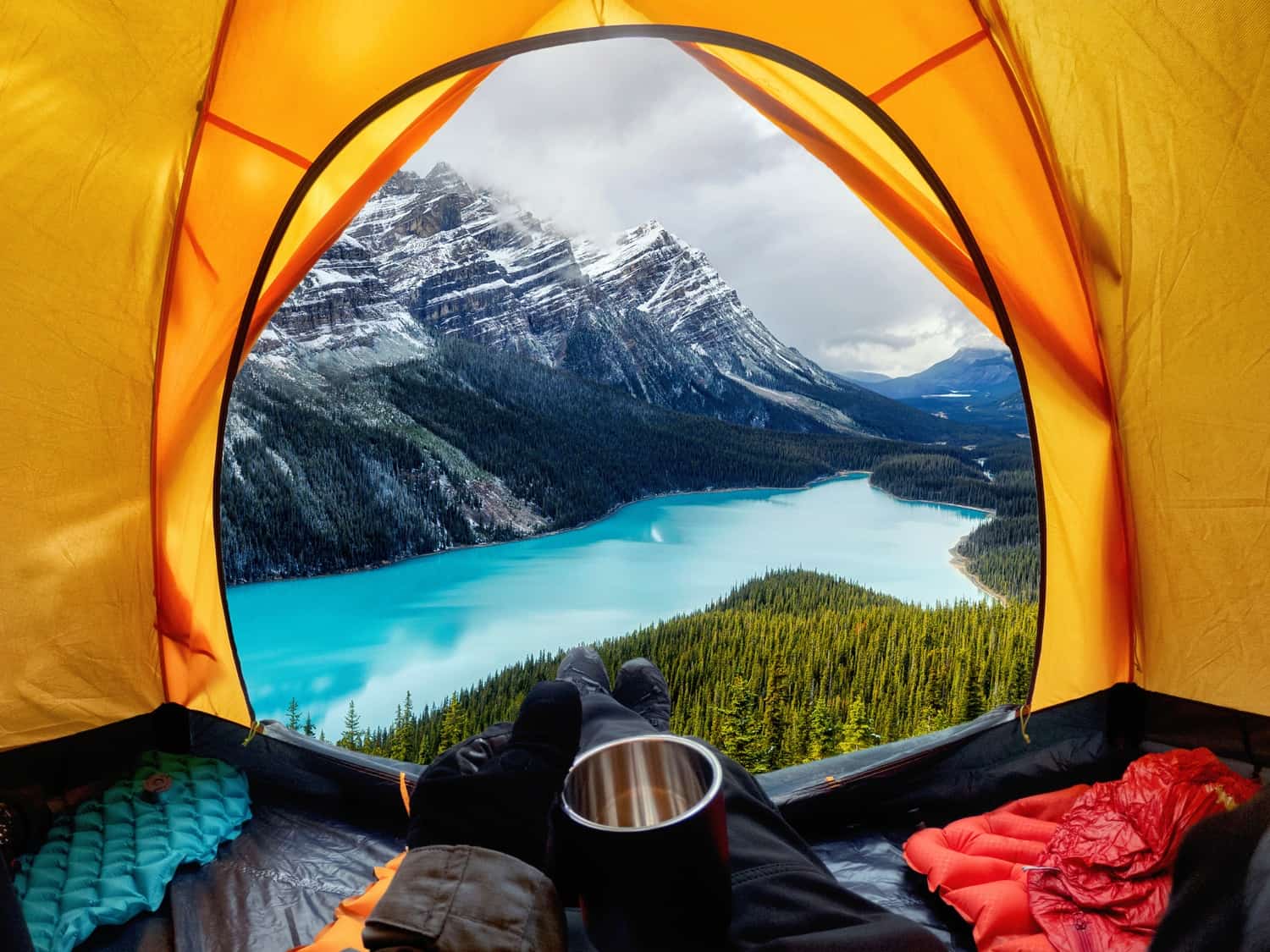
Oh, Canada!
So let’s get it out of the way first: I may be slightly biased, due to being Canadian, but I’ve got to tell you — Canada is one of the most beautiful countries in the world. It’s kind of got everything, from breathtaking landscapes to wonderful people, and so many only-in-Canada animal encounter opportunities (kayaking with beluga whales, anyone? Or how about hanging out with polar bears in their natural habitat?) I truly believe Canada is one of the best countries to travel across.
Unlike most of my fellow Canadians, I’ve had the pleasure and privilege of exploring my homeland in depth. It’s something I’ve prioritised doing even more since the pandemic, spending loads of time in Toronto, Montreal, Ottawa, and Vancouver, and road-tripping from east to west across the entire country. It’d be fair to say I know Canada like the back of my hand.
As a result, I have plenty of firsthand knowledge of how much it costs to travel in Canada, and most importantly, how to save money on experiences as you do so.
I can’t sugar-coat it, so I’ll hold my hands up and confess that Canada isn’t a particularly budget-friendly destination, especially if you’re coming here to enjoy it as a visitor. It’s one thing to live frugally as a student, but another to be a tourist. That being said, there are so many ways to enjoy your time here to the fullest without breaking the bank and sleeping out in your car every night.
If it’s possible, come visit us in Canada with a decent amount saved up (I’ll tell you how much to budget for each day), safe in the knowledge that spending that money will be 100% worth it. The expression spend your money on experiences not things will hit closer to home once you’ve seen what this country has to offer.
Today, I’m going to be sharing exactly how much it costs to travel in Canada, so let’s get started.

What’s Included in this Post
This budget breakdown covers how much I spend on accommodation, transportation, activities, and food as I travel around the country. I’ve not included flights into and out of Canada, since this is going to vary significantly based on where you’ll be arriving from.
The amounts in this guide are listed in U.S. dollars, simply because most of my readers are from the United States, as are the vast majority of visitors to Canada. If you’re converting U.S. dollars, euros or pounds to our weak Canadian dollar, then your time here might also feel more budget-friendly.
Okay — let’s get started!
How to Save Money on the Cost of Accommodation in Canada
As always with travel, it’s possible to cut your accommodation costs down to zero if you have the time and patience to seek out an offer.
Housesitting is a great option for free accommodation. This is where you’ll take care of somebody’s house while they’re away, and usually look after their pets, too. It’s best for long-term travellers or retirees: because you can’t pick and choose dates and destinations, you need to have a lot of flexibility as to where you go and at what time of year. If you do have that freedom, it’s a wonderful way to cut down your travel expenses, soak up some home comforts, and live like a local for a while. I have friends who have housesat in castles before! For free! Trusted Housesitters is the best site for getting started with housesitting, as they have the highest number of listings.
I’m suspecting, though, that for most of you, you’re not interested in the free accommodation and just want somewhere clean, safe, and affordable to rest your head each night. If that’s the case, there are several options available for you.
The Cost of Accommodation in Canada
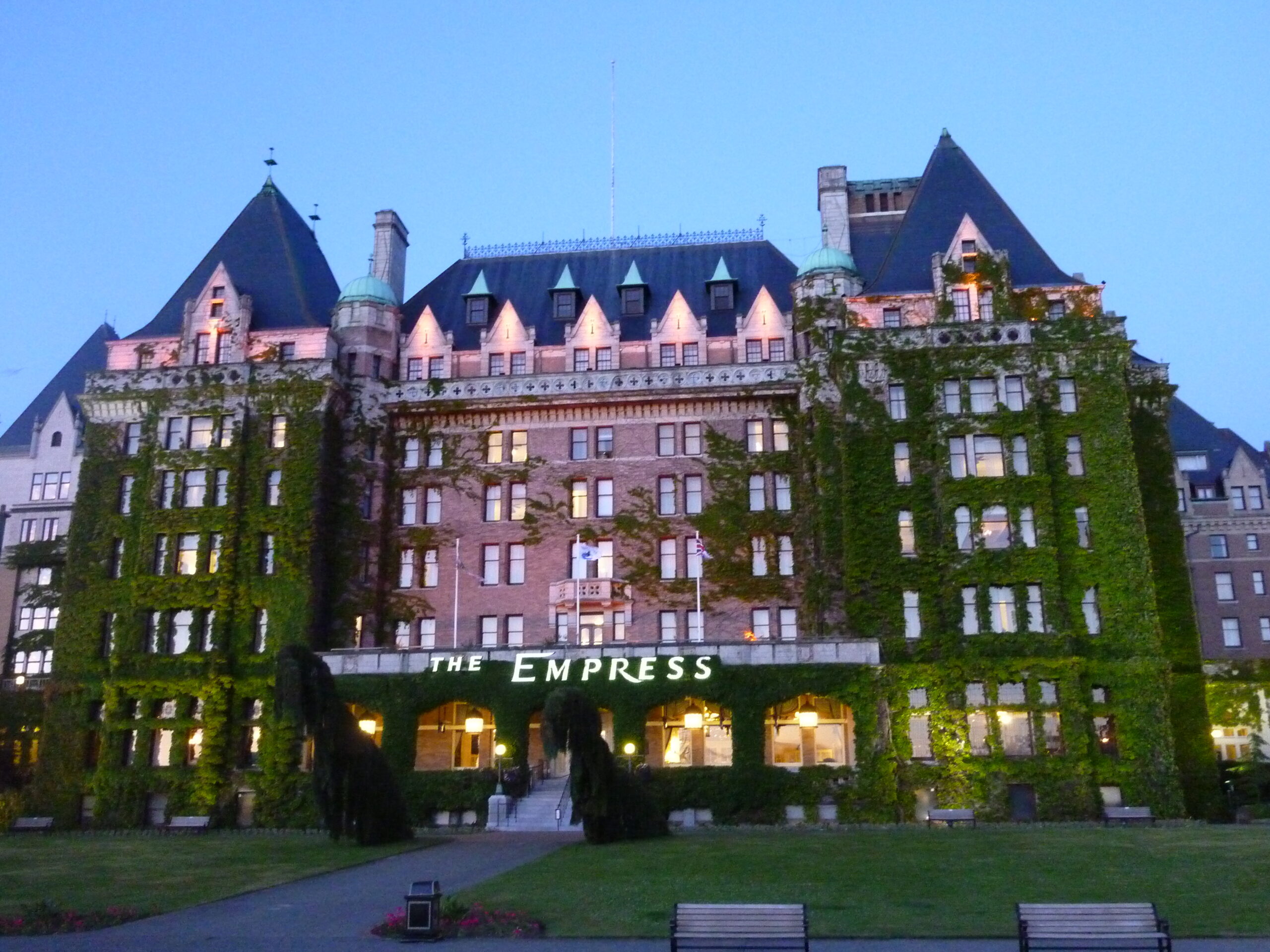
If you’re feeling particularly adventurous and frugal, you could opt to drive and camp your way through Canada. This can cost you as little as $20 a night , but be sure to reserve your spots with Parks Canada ahead of time as campsites can get full very fast.
If camping doesn’t appeal, it’s time to check out hostels . In Canada, you’ll come across hostels all over the country, finding them on tiny islands, in large cities, and even in the national parks. They’re one of your best options for saving money.
Hostels in Canada are on a par with the rest of Northern America, and you can expect to spend around $25-30 a night for a dorm bed for a well-reviewed hostel in Canada, with the price increasing to about $40-50 a night for the absolute best of the best.
When it comes to private rooms in hostels, prices vary quite a bit depending on where you’re going and the time of year. Over the last few months I’ve booked really nice private rooms for as little as $65 in shoulder season, but they’ve cost anything up to double that at peak times in major cities. Either way, if you’re travelling with friends or your partner, you may find it cheaper to grab some privacy over settling for two beds in a dorm.
I use HostelWorld to find the cheapest hostels, as they tend to have the greatest number of listings at the lowest prices.
And, of course, there are always hotels, which usually come in at around $150-$200 a night for a decent, clean, mid-range property in a central location. I always use Booking , as they have the most accommodation options for the cheapest prices.
Toronto — Elegant Downtown Homestay ( $196 a night ): While you’re in Toronto, you can’t pass up staying at this lovely homestay. The location, quality, and affordability (for the area) can’t be beat. You want to be as central as possible during your time in Toronto and this stylish house is right near popular spots like Yonge-Dundas Square and the Distillery District while still being nice and quiet at night. I loved how clean and modern the rooms were, with a super-comfortable bed, smart TV, and coffee machine to get me started in the morning. What really made this place special, though, is just how nice the hosts were: it really did seem like nothing was too much bother!
Montreal — Maison Saint-Vincent ($188 a night) : Right in the heart of historic Montreal, you couldn’t ask for a better location for this great little hotel. It’s only a couple of minute’s walk from Notre Dame cathedral, with so many restaurants and cafes nearby that it was hard to choose where to go each night! The rooms were comfortable and modern, and came with an iPad loaded with useful neighbourhood information and an all-important Nespresso machine. There’s a kitchenette on each floor, with a designated area in the fridge for each room, and free croissants in the lobby each morning; that’s how I really knew I was in Montreal!
Ottawa — Auberge des Arts Bed and Breakfast ($96 a night) : I really couldn’t ask for better-priced accommodation in a better location than what I got at Auberge des Arts. Right beside the Byward Market in downtown Ottawa, it’s close to all the action while still being on a quiet street away from traffic noise. Major attractions like the National Gallery were barely a five minute walk away! Beyond the location, though, the place is just charming, and couldn’t have been further from a generic hotel stay. My room was lovely and spacious, with a very comfortable bed, and the owners couldn’t do enough for me, from waiting up for my late arrival to cooking up an incredible breakfast that still catered for my dietary restrictions!
Vancouver — Finding high-quality affordable accommodation in Vancouver isn’t always easy, but a rare exception is the excellent Times Square Suites ($209 a night) . I really liked this hotel; not only does it not break the bank, but it’s in a great location in a leafy part of the city’s West End, only a quick walk from Stanley Park, Vancouver Harbour, English Bay, and all the great eating and drinking options along Robson Street. It’s not just the location that made this place special, though: my room was much more spacious than usual for a major city, and immaculately clean. The bed was nice and comfortable, and I can’t say enough good things about the staff: their restaurant recommendations in particular couldn’t have been better!
Halifax — I absolutely adored my stay at the Prince George Hotel . Not only is it the most central property in town, but they offered so many additional amenities for the price. For $208 a night , I had access to a spacious, clean, and modern room, as well as a swimming pool, gym, and sauna – always appreciated! The breakfast was a vast buffet set-up, with everything you could possibly need to fuel your day’s exploration. Throw in a wonderfully comfortable bed and you’ve got yourself the perfect stay in Halifax!
Banff — Peaks Hotel and Suites ( $187 a night) : Considering that Banff is one of Canada’s most expensive vacation destinations, this place felt like a real bargain. My room was spotlessly clean and very spacious, with a comfortable bed and fantastic rain shower. The staff were lovely, and I really liked the little lounge area with free tea and coffee all day. I also got access to a bunch of amenities like a pool, hot tub, and gym at the sister hotel over the road: there’s a buffet breakfast available at that hotel as well, but all the restaurants and cafes in central Banff were only a short walk away, so I mostly ate there instead!
The Cost of Transportation in Canada
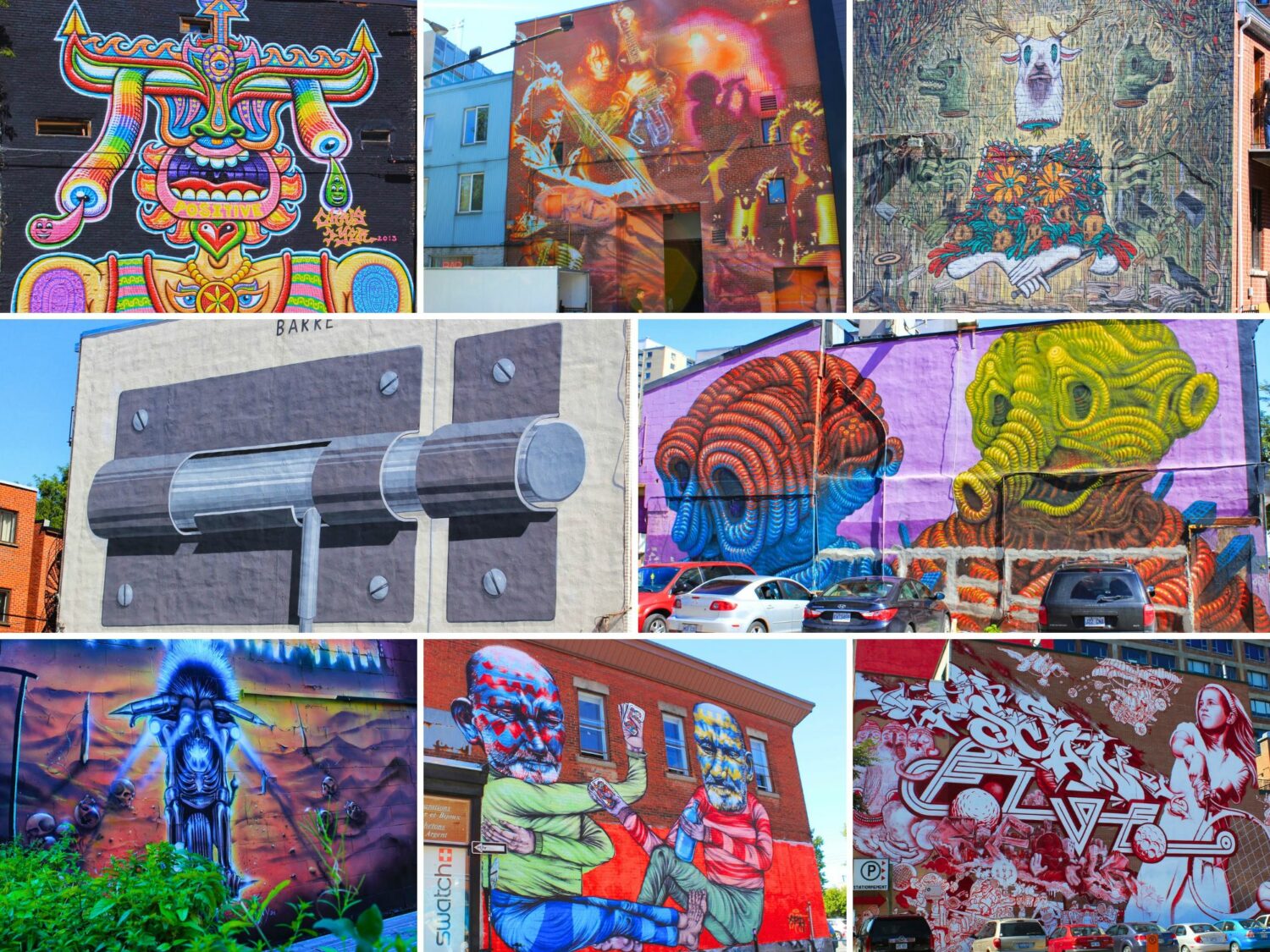
Car Rental — This is the main way that I’ve explored Canada and I can’t recommend it enough. Nothing else gives the same amount of flexibility, especially when it comes to getting into the national parks and many other beautiful but isolated parts of the country. If you have the time and are comfortable behind the wheel, there’s no better way to travel.
You can find great rental deal rates by using RentalCars.com in Canada, which is who I use to find cheap rentals all around the world. To give you an idea of the average cost, a two-week economy car rental from Vancouver to Toronto costs around $1736, which ends up being around $124 per day . That’s not including the cost of gas or insurance, but if you were to split this with one or two other people, it’s still pretty affordable! You’ll also pay a lot less if you return the car to the same place you rented it from.
Keep in mind that you need to be at least 25 years old to rent a car in Canada.
Bus — This is a more affordable but less flexible way to get around Canada: it wouldn’t be my first choice for long-distance travel, but can be the best way to get between cities that aren’t far apart (by Canadian standards!). If your trip is mostly confined to cities near either the east or west coasts, this can be a great way to save money.
If you’re going to take a bus, I’d recommend Megabus for travel in Ontario. I used Megabus often while I went to university in Ottawa and it was comfortable, reliable, and affordable. As an example, they’ll take you between Toronto and Montreal for only $54 ! A couple of other good options for bus travel in Canada include:
- Coach Canada : Toronto, Montreal, Kingston, Niagara Falls and Hamilton
- Rider Express: Vancouver/Calgary, Winnipeg/Regina, Calgary/Edmonton, Edmonton/Regina
Train — If the idea of traveling by long-distance train across Canada sounds appealing (and why wouldn’t it?), check out Via Rail . With close to 8000 miles of track across eight provinces, you’ve got plenty of options when it comes to riding the rails. I’ve used Via Rail frequently in Ontario, and know many people who’ve used it to travel all around the country.
If you want to see a lot of Canada in a short space of time, this is the way to do it. Get your camera out and prepare for jaw-dropping views. Here are some of the most popular routes and their one-way economy fares (taxes not included):
- The Canadian Route ($381): Toronto – Vancouver, 4 nights/4 days
- The Ocean ($113): Montreal – Halifax: 1 night/1 day
- The Best of Manitoba ($179): Winnipeg – Churchill: 2 days/2 nights
- The Pacific North Coast ($121): Jasper – Prince Rupert: 2 days/1 night
Flying — For a long time, flying across Canada cheaply was unheard of. That’s the reason why so many Canadians weren’t able to do much travelling within their own country: it was just cheaper to fly to Europe than it was domestically.
But over the past number of years, there’s been an influx of budget-friendly airlines in Canada that make flying a much more viable option if you want to quickly cover a lot of ground. Air Canada is the country’s biggest airline, but you’ll usually find cheaper prices with WestJet, Flair Airlines, and Swoop. In my opinion, you can’t really go wrong with any of these airlines for a domestic trip.
Here are some of the most common one-way routes and their average prices for an economy seat. I use Skyscanner to research all my flight options, since it consistently brings up the best fares.
- Toronto to Vancouver — $59
- Toronto to Halifax — $57
- Calgary to Vancouver — $36
- Toronto to Calgary — $62
- Montreal to Vancouver — $145
City Travel — When you’re sightseeing in a major city, the best way to get around is local transit. You can tap your credit or debit card on the reader in most major cities including Vancouver and Toronto, which is convenient if you’re only going to take public transport a few times.
If it’s something you’ll do regularly in Ontario, though, you’ll get free two-hour transfers if you use a Presto card instead. This tap-and-go card lets you pay for travel across 11 regions, including Ottawa and Toronto, and can be bought online or in-person.
If you’ll be doing a lot of travel on public transport in a single day, it’s worth picking up a day pass for whatever city you’re in instead. Fares for a few of the major cities include:
- Toronto TTC Day Pass: $10 per person
- Vancouver TransLink Day Pass: $8.35 per person
- Montreal Day Pass: $8.15 per person
- Ottawa OC Transpo Day Pass: $8.75 per person
The Cost of Food in Canada
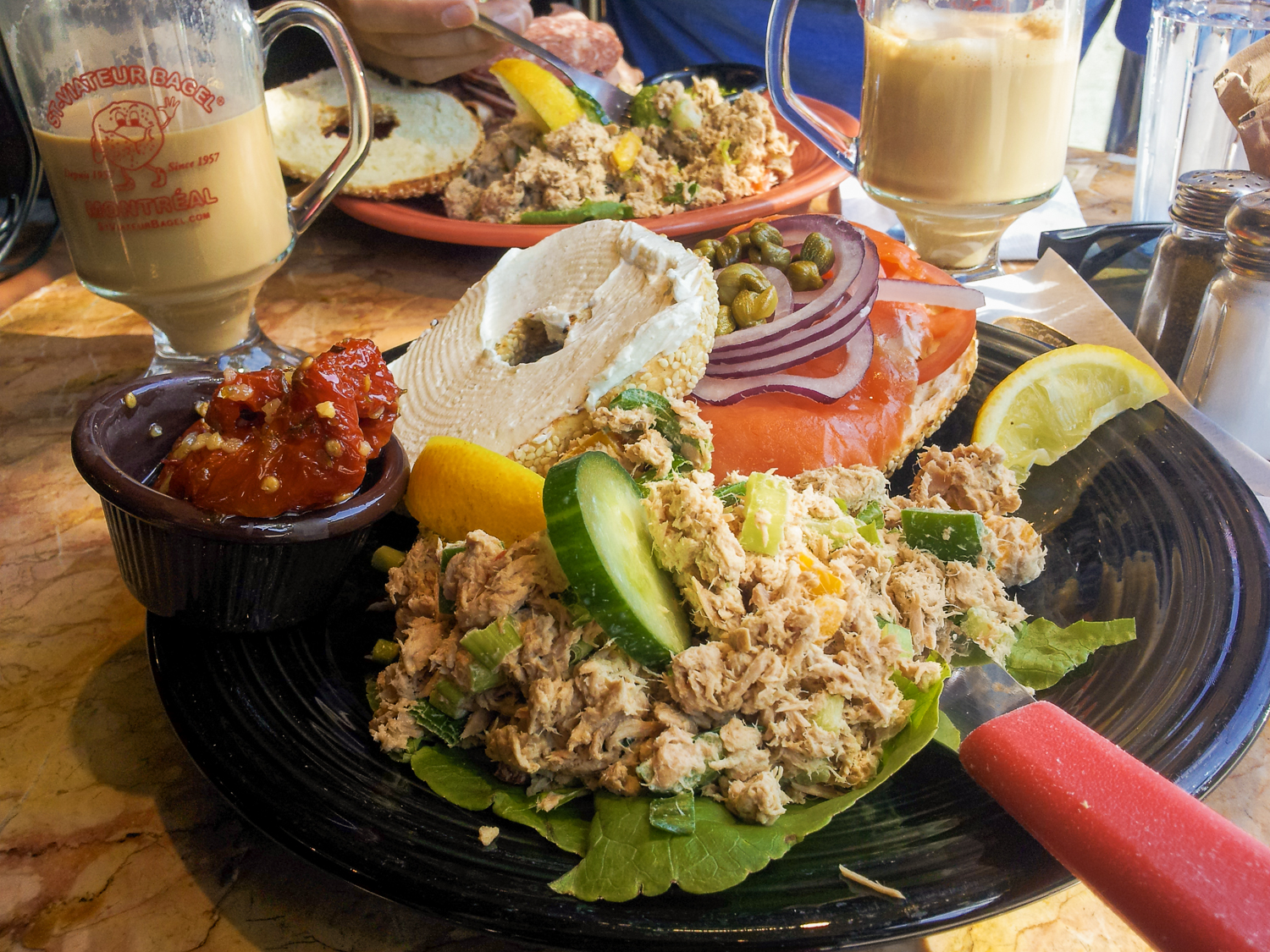
Picture your favourite dishes from around the world, all in one place—that’s what it’s like to eat in Canada! Delicious and authentic eats can be found in nearly every corner of the country, from Vietnamese to Ethiopian to Italian and many others.
While there aren’t many “Canadian” dishes, you definitely have to get your hands on some poutine and a beavertail (don’t worry, not an actual one!). Beavertails are stretched pastries made out of fried dough to take the shape of their namesake; they can be topped with anything from sugar to peanut butter to chocolate. One of my favourite Canadian must-dos is to go skating, followed by a warm beavertail and hot chocolate; there’s truly nothing better in the winter. That combo costs around $9.
Poutine, if you haven’t heard of it before, is an absolute Canadian classic. Combining French fries with melted cheese curds and savory gravy, it’s not the healthiest of meal choices, but it is one of the most delicious. Your taste buds will thank you for this messy masterpiece, and your wallet will too: you can expect to pay $14 for more food than you know what to do with.
If you happen to find yourself in Montreal, run, don’t walk, to the nearest bagel store. Denser and chewier than traditional bagels, the ones you find in this city are slightly sweet thanks to a touch of honey in the dough. The real magic, though, lies in the iconic “Montreal-style” topping: a generous helping of sesame seeds baked right onto the crust. Pair this with a schmear of cream cheese, smoked salmon, or classic roast meat and mustard, and you’ve got an absolute taste sensation. St-Viateur makes particularly good ones, but competition is fierce so it’s hard to go too far wrong anywhere. You’ll pay around $10 for one.
And of course, no trip to Canada is complete without multiple Tim Hortons coffee runs, which by the way, are very budget friendly. You can get a coffee and bagel for as little as $3 !
The cost of food ranges depending on what you like to eat and how much you like to eat at restaurants. That being said, there’s plenty of ways to eat on a mid-range budget. Fast food costs anywhere from $7-$10 per person, while eating out at a mid-range restaurant like Cactus Club or Swiss Chalet will set you back around $20-$30 per person without drinks. Go high end, and you can easily pay $60 each or more.
While there are plenty of great restaurants to eat at in any major city or town, doing so for three meals a day does get expensive. Staying at accommodations with a kitchen, shared or otherwise, offers an easy way to save money on food. Groceries typically cost me around $80 per week, which is around $11.50 per day for fruit, vegetables, protein, and snacks.
The Cost of Activities and Entrance Fees in Canada
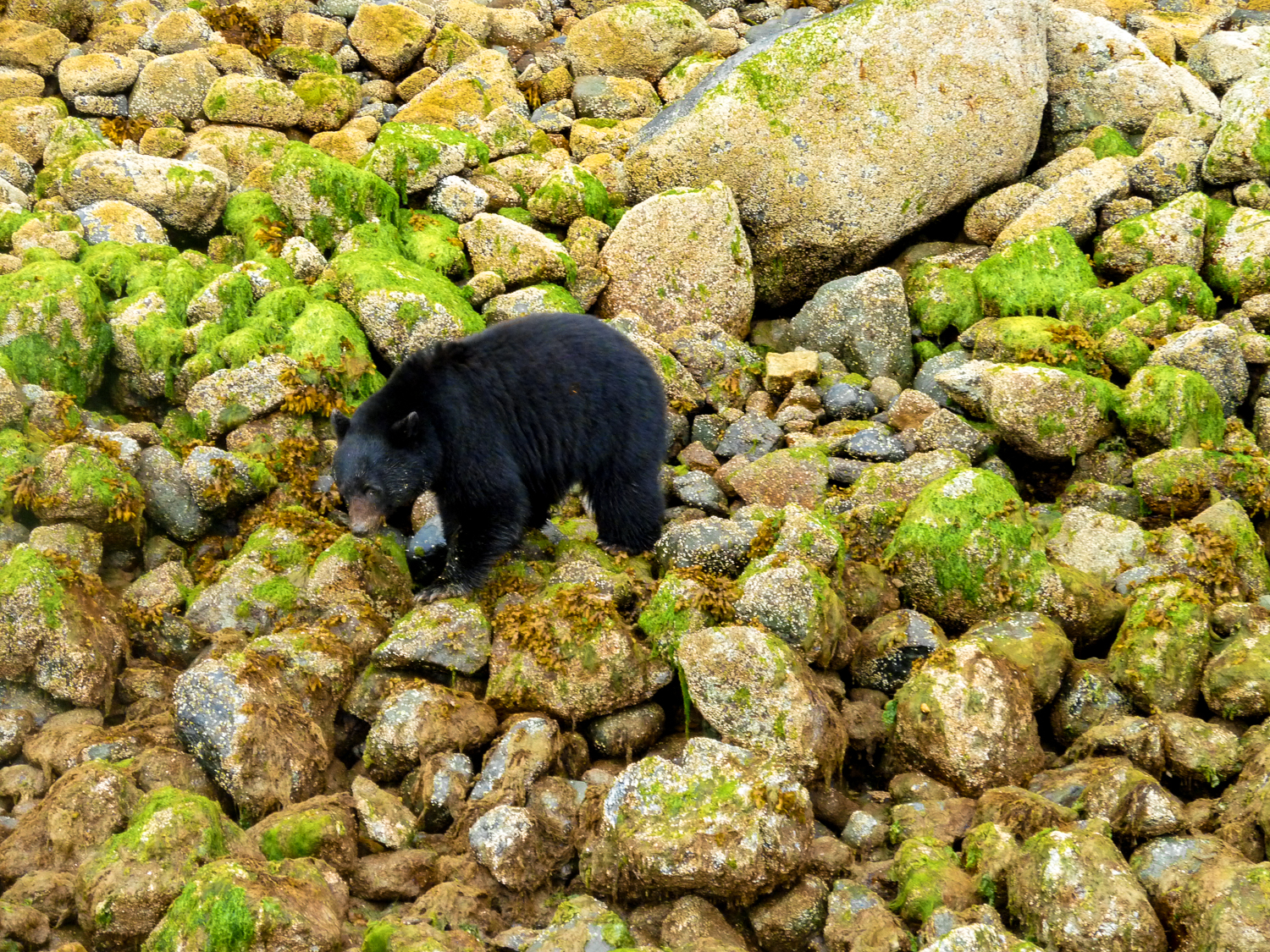
You’re in luck when it comes to the cost of activities and entrance fees in Canada, as most of what you see is beautiful Mother Nature herself! This is when road tripping is worth it, because driving through Canada is an experience in itself, with often jaw-dropping views just outside your window.
There are some attractions and parks, though, that are definitely worth seeing if you’re in the area. Learning from exhibitions at the Canadian Museum for Human Rights in Winnipeg, seeing whales in their natural habitat off the coast of Vancouver, and walking next to Niagara Falls are a few of my favourite travel experiences in Canada.
If you’re more of a nature or outdoorsy person, I’d recommend spending more time and money on activities and attractions in western Canada (B.C. and Alberta). If you’re more into history, the arts, and urban exploring, then central and eastern Canada (Southern Ontario, Montreal) will be more up your alley.
Here’s a breakdown of some my favourite attractions in Canada and their respective costs:
- CN Tower (Toronto): $32 per person
- Parliament Hill Tour (Ottawa): FREE
- National Gallery of Canada (Ottawa): $15 per person or FREE on Thursday evenings
- Banff Gondola (Banff): $43 per person
- Columbia Icefield Skywalk (Banff): $31 per person
- Whale watching (Vancouver): $133 per person
- Canadian Museum for Human Rights (Winnipeg): $14 per person or FREE on Sundays
- Anne of Green Gables Heritage Place: $7 per person
- Niagara Falls: FREE
Tours are really a great way to experience the country. I recommend hopping over to Get Your Guide for a range of activities and tours, like the Banff National Park Big Canoe Tour ($49), Ottawa sightseeing bike tour ($52) or a Niagara Falls Day Tour ($151).
And You Can’t Forget Travel Insurance!
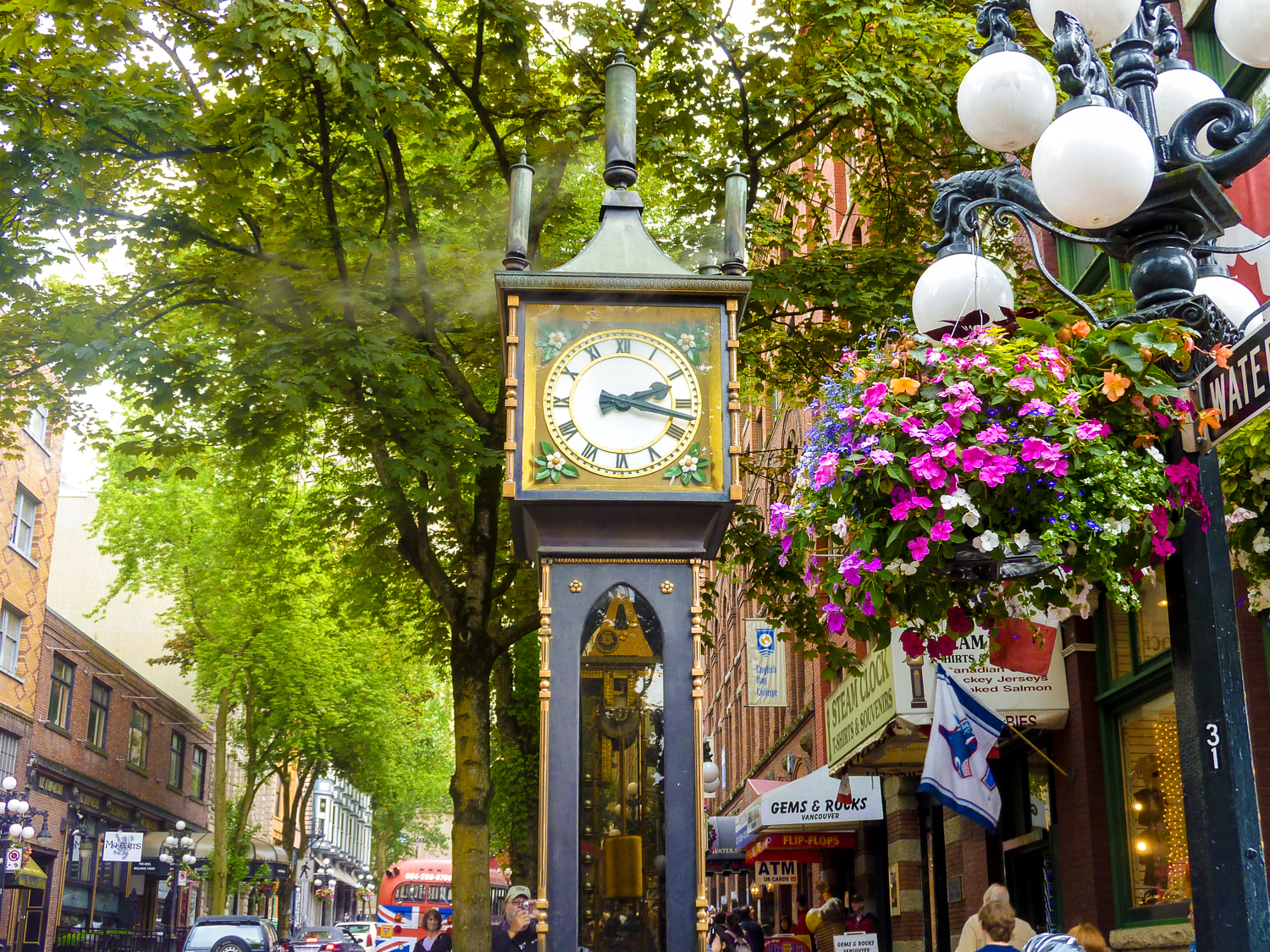
If you’ve read any other posts on Never Ending Footsteps, you’ll know that I’m a great believer in travelling with travel insurance. I’ve seen far too many Go Fund Me campaigns from destitute backpackers that are unexpectedly stranded in a foreign country after a scooter accident/being attacked/breaking a leg with no way of getting home or paying for their healthcare. These costs can quickly land you with a six-figure bill to pay at the end of it.
In short, if you can’t afford travel insurance, you can’t afford to travel.
Travel insurance will cover you if your flight is cancelled and you need to book a new one, if your luggage gets lost and you need to replace your belongings, if you suddenly get struck down by appendicitis and have to be hospitalised, or discover a family member has died and you need to get home immediately. If you fall seriously ill, your insurance will cover the costs to fly you home to receive medical treatment.
I use SafetyWing as my travel insurance provider, and recommend them for trips to Canada. Firstly, they’re one of the few companies out there who will actually cover you if you contract COVID-19. On top of that, they provide worldwide coverage, don’t require you to have a return ticket, and even allow you to buy coverage after you’ve left home. If you’re on a long-term trip, you can pay monthly instead of up-front, and can cancel at any time. Finally, they’re way cheaper than the competition, and have a clear, easy-to-understand pricing structure, which is always appreciated.
With SafetyWing, you’ll pay $1.50 a day for travel insurance.
How Much Does it Cost to Travel in Canada?
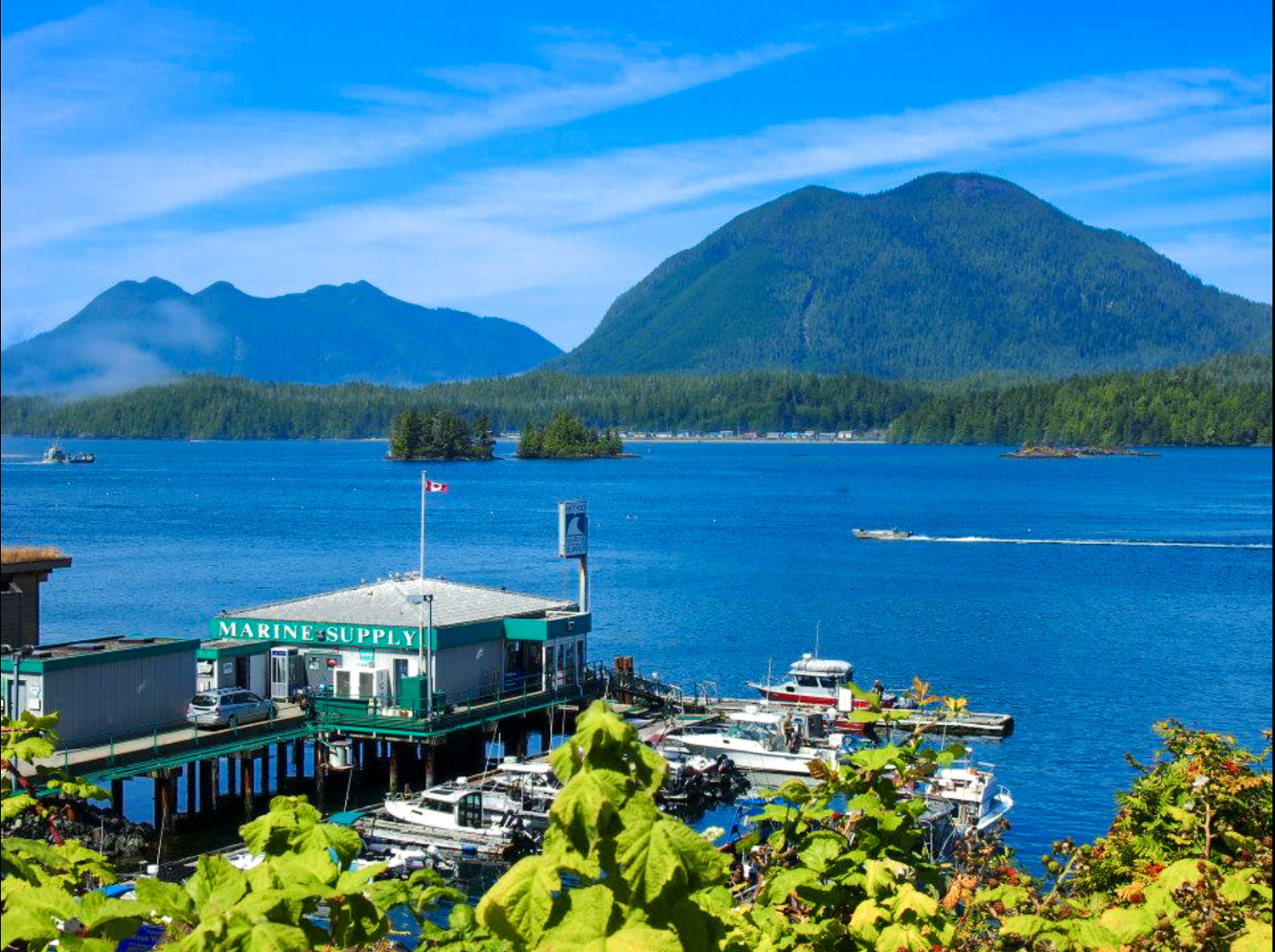
It’s time to tally up all of my expenses to see my total travel costs!
- Accommodation: $181 per day for two people ($90.50 per person)
- Transportation: $124 per day for two people ($62 per person)
- Food: $27 per day
- Activities/Entrance Fees: $16 per day
Average amount spent in Canada: $195.50 a day!
Author bio: Born and raised in Toronto, Lydia has found “home” throughout her travels around the world. She’s a passionate storyteller and writer and you can usually find her dreaming about new adventures or having a deep conversation with a friend.
Related Articles on Canada 🇨🇦 22 Wonderful Things to Do in Toronto 🍁 How to Spend Three Days in Montreal 🐳 How to Spend Three Perfect Days in Vancouver
Lauren Juliff
Lauren Juliff is a published author and travel expert who founded Never Ending Footsteps in 2011. She has spent over 12 years travelling the world, sharing in-depth advice from more than 100 countries across six continents. Lauren's travel advice has been featured in publications like the BBC, Wall Street Journal, USA Today, and Cosmopolitan, and her work is read by 200,000 readers each month. Her travel memoir can be found in bookstores across the planet.
Related Posts

The Cost of Travel in Mauritius: My Detailed Budget Breakdown

The Cost of Travel in Thailand: My Detailed Budget Breakdown

2023: My Travels in Review

The Cost of Travel in South Korea: My 2024 Budget Breakdown
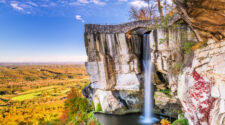
21 Thrilling Things to Do in Tennessee

The Cost of Travel in Peru: A 2023 Budget Breakdown
So nice to read some Canada content on your site! The one activity that’s on my Canada bucket list is seeing the polar bears in Churchill! Definitely a big ticket activity, but it looks soooo cool.
Ah, I totally agree! That’s very high on my list of things to do in Canada!
A great read, and good to hear that it doesn’t have to be too expensive. I love the idea of taking the train across Canada from east to west, and also road tripping and camping around the country. And like the other commenter mentioned, the polar bears! There’s so much to see and so little time.
Same, same, same! There’s so much to do in Canada that you could spend years exploring and barely even scratch the surface!
So useful! Especially as Canada is about to open its borders to international tourists next month. I can’t wait to visit — thanks for all the useful tips and information in this guide.
Hi Lauren, thanks so much for your recent post its very helpful. My wife and I are coming to Canada-Vancouver, early June for 19 days. We are planning to do 4-5 days on Vancouver Island a few days in Vancouver and rest travelling towards Calgary/Edmonton before internal flight back to Vancouver (not set in stone ,but just our thoughts). We want to visit Whistler and travel the 2 peaks Gondola then travel onwards over the next few days to Lake louise/Calgary . We now feel that rather than travel onto Calgary then take an internal flight back to Vancouver, that the road and activities to Jasper is very appealing. Can you advise an opinion on whether it would be best to travel back to Vancouver from Whistler, and then fly to say Edmonton and travel to Jasper – Lake Louise before a return flight to Vancouver from Calgary. Do you think the road from Jasper to Lake louise is a better drive with the possible activities than Whistler to Lake louise?. Kind Regards Mark
Hey great post, really appreciate all the info. One thing though – we’ll be in Canada for a month, have iphones.. what would be the best sim for travellers? Is there a generic easy to buy one that we can get at the airport or.. should i just get a random travel one from online? Cheers
Leave a reply Cancel reply
Your email address will not be published. Required fields are marked *
Meet Lauren Juliff
Visiting Canada and Canadian Tourism
Over 18 million foreigners visit Canada every year making tourism an over $80 billion-a-year Canadian industry — bigger than lumber, fishing, and farming combined. So why not join in?
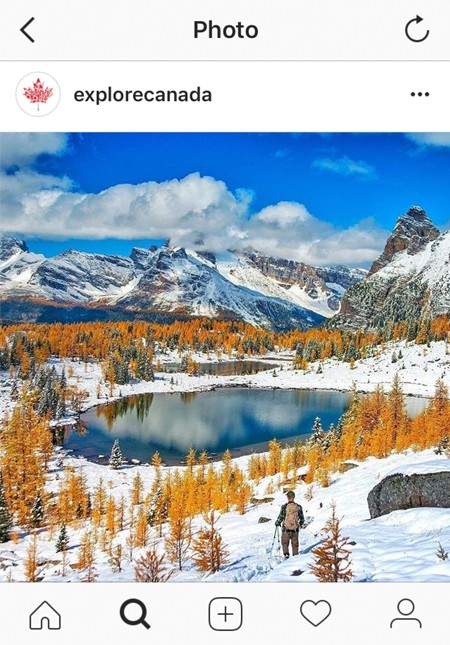
The Government of Canada spends a lot of effort promoting Canadian tourism through a variety of websites and social media accounts, including Instagram — as seen here. The current slogan is "Canada: Keep Exploring" with "explorecanada" their most widely used user name and hashtag.
Why come to Canada?
Canada is a large, diverse country with a lot going for it, but most tourists are drawn to a few of the same things:
Nature — Canada is one of the most beautiful countries in the world, full of picturesque forests, mountains, and lakes that make it a fantastic place for camping, hiking, or just wandering around and admiring.
Winter Sports — Canada’s snowy climate and mountainous geography has produced no shortage of must-visit parks and resorts for anyone interested in skiing, snowboarding, snowshoeing, or any other activity best enjoyed in the cold.
Cities — Canada is home to several large, modern cities that anyone with a taste for urban life will be able to appreciate.
Cost — The Canadian dollar is generally quite weak in comparison to other currencies, which make it a very affordable option for people without too much money in their travel budgets.
- Bank of Canada Exchange Rates
The rest of this chapter deals with general information about traveling to Canada. For more information on things to see and do in Canada’s four most popular tourist destinations, please see the specific chapters on British Columbia tourism , Alberta tourism , Ontario tourism , and Quebec tourism .
What language do they speak in Canada?
Foreigners are sometimes confused by Canada’s language situation. Officially, Canada has two official languages , French and English. However, this is mostly just a matter of government policy. The vast majority of Canadians only speak English, and lack even basic skills in French. French-speaking tourists should not expect to speak French in cities like Vancouver, Toronto, or Calgary.
The capital city of Ottawa is more functionally bilingual than most Canadian cities, and all museums and government-related attractions will feature signs and brochures in both French and English. Staff at popular attractions will likely be fluently bilingual as well, as will many employees of popular stores and restaurants. It helps to ask, however.
The famous city of Montreal , in the province of Quebec , is the most bilingual city in Canada and most residents, particularly those who live and work in the downtown core, can speak fluent French and English. It is not considered controversial in Montreal to speak either French or English to a stranger and assume the other person will understand. In other parts of Quebec, however, rates of English fluency are much lower and it may be considered offensive to speak English to a stranger without first asking for permission.
Downsides of Canada
To avoid unhappy surprises, would-be tourists to Canada should be aware of the following potential disappointments before they go:
Bad weather — Unless you are specifically traveling to enjoy winter activities (see above), there are generally only a few months of the year (usually around June to September) in which Canada’s weather will be mild enough to enjoy. Canadian winters, and even parts of spring and fall, are often cold, dark, snowy, and wet, which can make tourist activities difficult or unpleasant.
Long travel distances — Canada is an enormous country and its main cities are all spread quite far apart from each other. Tourists, particularly European tourists unfamiliar with the vastness of North America, are sometimes disappointed to learn that they will probably only be able to see a rather small part of Canada on their trip. Visiting multiple major Canadian cities on a single vacation — for example, Vancouver, Toronto, and Montreal — would be extremely time-consuming and likely cost thousands of dollars in domestic travel alone.
“America Jr.” — Some tourists are disappointed to discover that Canada is extremely similar to the United States . Travelers familiar with America should not expect to encounter a strikingly different culture in Canada. Stores, brands, food, entertainment and so on will be overwhelmingly American. Though the international press likes to emphasize Canada as being a more “liberal” country than the US, Canadians will probably not seem very different from Americans in day-to-day encounters.
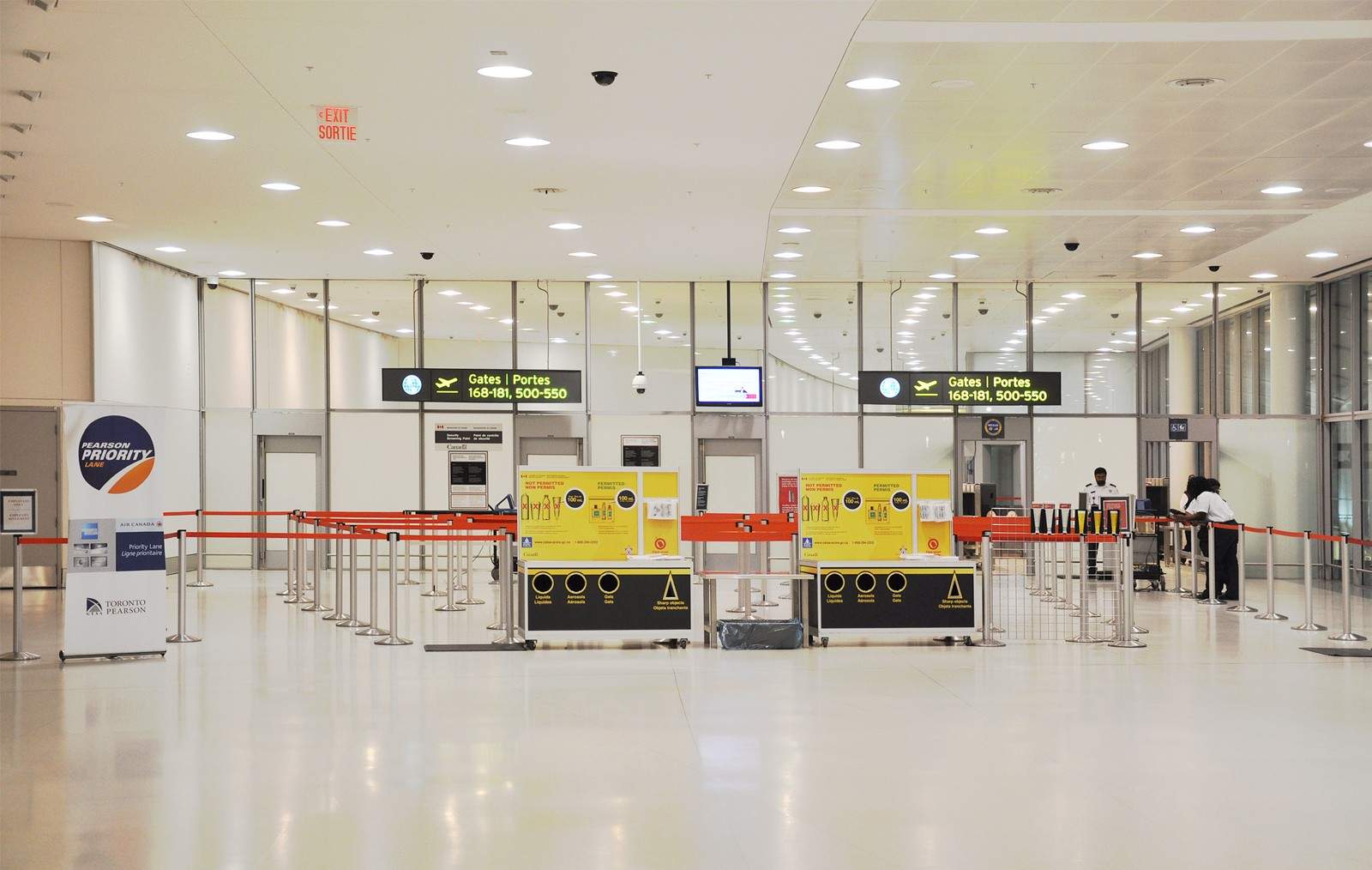
Security checkpoint at Toronto's Pearson International Airport. Serjio74/Shutterstock
Sick travelers.
Travelers from certain countries will need to be cleared by a medical exam as part of their application process before they can visit Canada. During times when there's a global panic over the spread of a particular infectious disease, such as the SARS scare of 2003 or the Ebola scare of 2014, visitors who display worrying symptoms may be detained by border authorities and sent to a hospital for quarantining.
How to Visit Canada
Customs and visas.
Canada does not treat all international visitors the same; citizens of certain countries will have an easier time entering Canada than others. All foreign visitors to Canada, however, must bring a valid passport from their home country.
Residents of the United States have the easiest entry to Canada, and don’t require anything other than a passport to get in. Residents of Great Britain, western Europe, and a few other countries have to obtain an Electronic Travel Authorization ( ETA ) before they can enter. This is a very easy process that only takes a couple of minutes and should be done online before you leave. Once completed, an ETA lasts for five years or until you get a new passport.
- Find out if you need an Electronic Travel Authorization (eTA) or a visitor visa
Residents of countries not covered by the ETA program can only visit Canada after obtaining a short-term visitor’s visa . Applications can be done online, through the mail, or at an overseas Canadian consulate. They take a couple weeks to process and usually cost around $200. For more information, see the Government of Canada’s visitor eligibility questionnaire .
It is illegal for anyone, from any country, to enter Canada to work or live without first obtaining a long-term visa , which are much more complicated to apply for, and take many months to be approved.
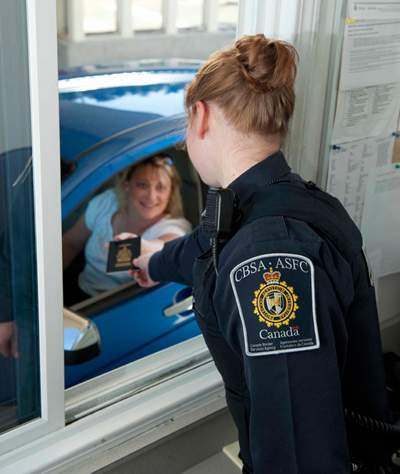
Canada's land border crossing stations operate as drive-throughs. Visitors who arrive by air cross the border at the Canadian airport.
Crossing the Canadian Border
Anyone entering Canada from a foreign country by land, sea, or air — including Canadians themselves — are required to have an interview with a Canadian border guard at their point of entry so it can be determined they are a safe and legal visitor. Exactly how long and invasive this interview will be depends very much on where you are coming from, why you want to visit, whether you have completed any authorizations you may need, and how clearly you communicate these facts. It pays to be honest, cooperative, and informed.
- Canada Border Services Agency
- Wait Times Now, estimated wait times for major Canadian border crossings
It should be remembered that while foreigners enjoy various legal rights after they enter Canada (see below), no foreigner has the right to get into Canada just because they want to. Canadian border guards have the power to deny anyone entry to Canada for any reason. Possessing a criminal record, a history of subversive political activity, dangerous diseases, suspicions of drug trafficking, or just broadly suspicious behavior are all common grounds for refusal of entry to Canada.
Ever since the terrorist attacks of September 11, 2001 Canadian security forces have been extra vigilant about terrorist threats, particularly from the Islamic world. Would-be visitors from the Middle East or parts of Africa, or those with a history of visiting such places, may find themselves subject to increased scrutiny.
- Visiting Canada Help Centre and FAQ, Government of Canada
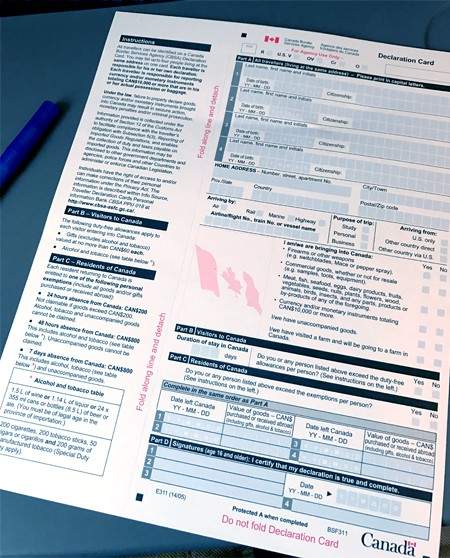
Visitors to Canada are expected to hand a completed Declaration Card to a border guard in order to cross the border. These cards, which ask basic questions about the visitor and their trip, are usually handed out on airplanes or trains. Visitors who cross a land border usually have to just tell the information to the guard.
Bringing Goods to Canada
It is illegal for foreigners to bring products into Canada to sell without first going through the complex procedures for engaging in international commerce . If you cross the border with more stuff than a reasonable person would assume you need for a trip, the authorities may conclude you are probably intending to illegally sell goods. The only exception is a maximum $60 worth of “ gifts .”
Tobacco and liquor products are counted separately, and foreigners can bring a fair bit of both into Canada. The current tobacco limit is quite generous; you can bring up to 200 cigarettes, 50 cigars, and 200 grams of tobacco, if you so choose. The liquor limit is stricter: you can only bring 1.5 litres of wine, 1.13 litres of another liquor, or a 24-pack of beer. Bringing food products into Canada is generally a hassle, as there are very specific rules and limitations for just about every type.
Dangerous goods, like guns , other weapons , and fireworks can be imported, but have their own particular rules. A few very specific things are likewise banned in Canada for safety reasons and are thus illegal to bring into the country, such as certain kinds of kites and baby products. A complete list can be found on the Canadian Government’s official prohibited consumer products list . It’s also illegal to import what the government describes as “obscenity and hate propaganda ” which includes any movies, books, comics, or magazines that contain, in the opinion of the border guard, overly hateful, perverted, gory, terroristic, or violent content.
- Alcohol and Tobacco Limits, Government of Canada
- Restricted and Prohibited Goods, Government of Canada
Traveling Inside Canada
Laws for foreigners.
This should hopefully go without saying, but foreigners have to obey Canadian laws while in Canada. Those who do otherwise can be charged, arrested, sentenced, and imprisoned just like Canadians. At the same time, the legal protections granted to Canadians by the Canadian Constitution also apply to foreigners visiting the country. This includes the right to avoid self-incrimination, the right to consult a lawyer, and the right to dispute before a judge any charges or fines imposed by a police officer.
Canada has extradition treaties with more than half the world’s countries , meaning foreigners who commit a crime in Canada but leave the country before they are caught or punished can be caught by local police and forced to return to Canada to face justice (and vice-versa). Only in very rare situations will a foreigner accused of a crime in Canada be tried and punished for it by their own country’s justice system.
Getting Around in Canada
Flights within Canada are notoriously expensive, with the average domestic flight costing at least $300, plus airport fees and taxes which usually add an additional $40 or so. The country has three national airlines, Air Canada (airline codes: 014, AC or ACA, part of the Star Alliance airline coalition) and WestJet (838, WS, WJA, part of its own 16-airline alliance ) which are largely domestic, and Air Transat (649, TS, TSC) which is mostly international. Canada does not have a major discount or budget airline, though in recent years the major airlines have been experimenting with budget spin-offs, such as Air Canada Rouge and Westjet’s Swoop . Flights to northern Canada , and especially within northern Canada, are extremely expensive, often a thousand dollars or more, and to get to certain remote regions travelers must use a special northern airline or a chartered flight.
Every major Canadian city has its own international airport , and many smaller cities too. There are also several considerably smaller regional or domestic airports that exclusively service flights between Canadian cities. Most of Canada’s big city airports are located around 20 kilometers from their city’s downtown core, or about a 30 minute drive. Vancouver and Toronto have trains that go directly from the airport to downtown.
- Security Screening at Canadian Airports, Canadian Air Transport Security Authority
The railroad played an important role in Canadian history , but trains have now become among the slowest, most expensive ways to travel the country. While trains can be a somewhat convenient way for tourists to travel between large Canadian cities located relatively close to each other, air travel or driving remains much more popular, and may even be cheaper.
VIA Rail is Canada’s primary passenger train service, offering direct service from Vancouver to Toronto (at over 4,000 km, one of the longest train trips in the entire world!), Toronto to Montreal, and Montreal to Atlantic Canada, with stops in all significant cities along the way. Traveling between the axis of Toronto, Ottawa, and Montreal is a popular route. A cross-country Canadian train ride, from one end of the country to the other, will take about four days and cost around $500-$800.
VIA Rail’s Vancouver, Toronto, and Montreal stations also offer connecting trips to the United States, via Amtrak . Several provinces also have limited train service to some of their more remote areas. Cruise-like luxury train services are provided by Royal Canadian Pacific for those willing to pay.
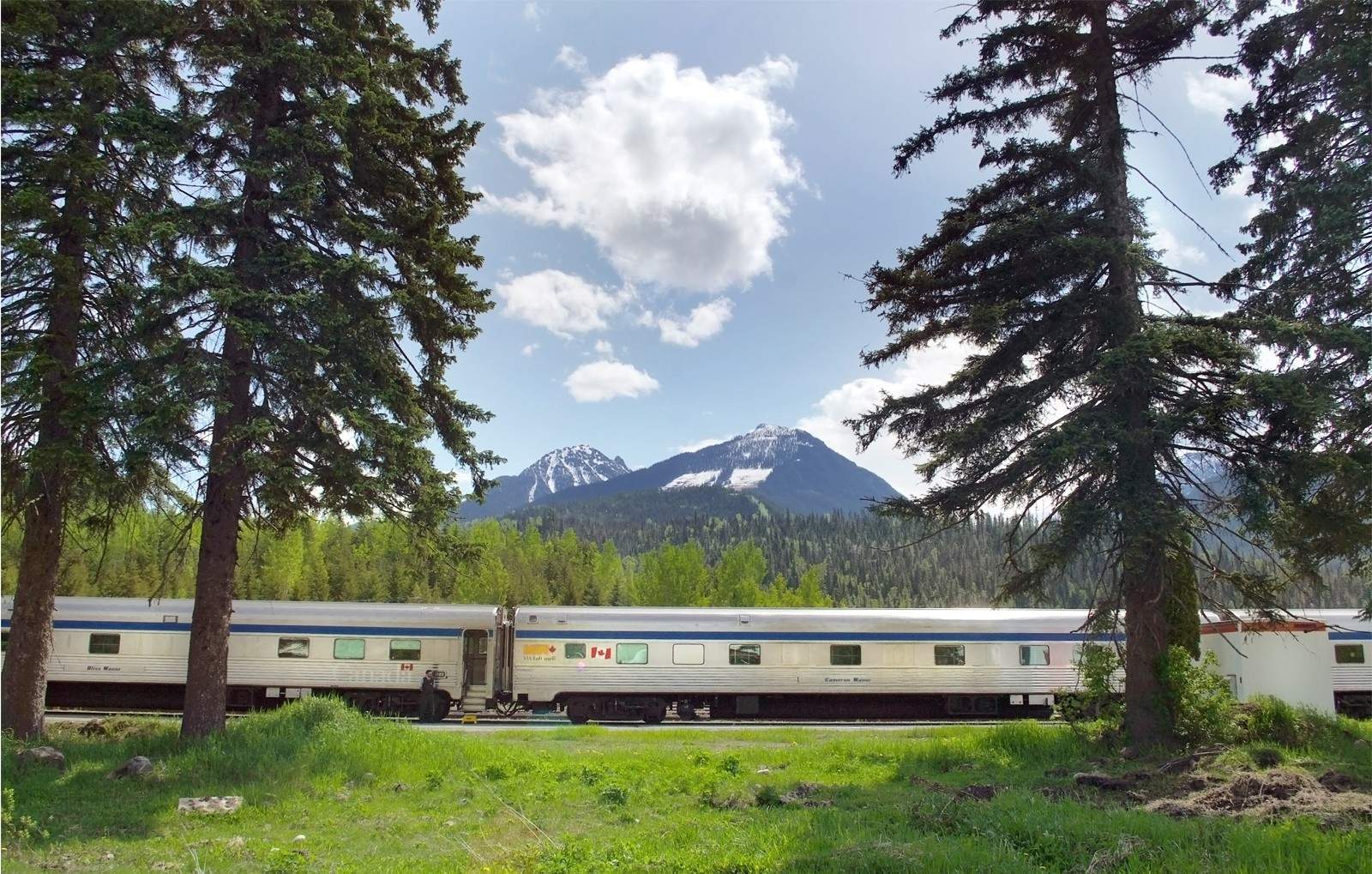
A Via Rail passenger train takes a break in Blue River, British Columbia. joseph s l tan matt/Shutterstock
Driving in canada.
Anyone driving a car or motorcycle in Canada must possess a valid driver’s license . A foreign driver’s license will generally be recognized as valid by the police if it can be read by them, which is to say, if it has English text on it. Don't forget to check if your car insurance applies in Canada!
Car and Bus Travel
Canada is united by a massive cross-country highway known as the Trans-Canada Highway that extends 7,821 km from the farthest western portion of British Columbia to the farthest eastern part of Newfoundland. It is primarily a west-east corridor, however. Though the Trans-Canada highway does have some northern forks, these do not go very far and none reach Canada’s northern territories . Every province has its own highway system as well, and these often merge into portions of the Trans-Canada highway. Through a combination of national and provincial highways, virtually every part of Canada is reachable by road travel, though in many cases drive times will be incredibly long.
- Trans-CanadaHighway map, Transport Canada
Many tourists enjoy traveling between Canadian cities by charter buses , which are large, comfortable buses featuring modern amenities such as bathrooms and WiFi. In eastern Canada, Greyhound is the dominant charter bus line. Other provinces are serviced by various regional bus companies.
Public Transportation
Most large Canadian cities have relatively sophisticated public transportation systems, with some combination of bus, light-rail train, monorail, subway, street car, and ferry services that can be used to navigate most of the downtown core and surrounding areas. The exact combination of services will vary from city to city (as will the cost of tickets and passes). In most cases, public transportation does not travel to rural areas, though some rural communities may have their own public transportation system.
Shopping in Canada
Canadians use the Canadian dollar (symbol: $ ) to pay for goods and services, which can be obtained at any ATM machine, which can be found at banks, shopping centres, corner stores, and many other public places. Most Canadian ATMs will accept foreign bank cards, though withdrawal fees can be high. Some smaller, independently-run shops will have a strict “cash only” policy, but these days, most Canadian business will actually prefer to do transactions through credit or debit cards . Visa and Mastercard are the most commonly-used credit card brands in Canada, and many shops will not accept other kinds — though some will, making it a good idea to ask ahead of time.
US dollars are often accepted at Canadian stores, particularly in tourist-heavy areas. Some places may have a policy of accepting US dollars “at face value,” however, meaning American money will not be accepted at its exchange rate worth, but rather treated as if it was worth as much as Canadian money, which is a bad deal.
Foreigners will be charged sales tax on every purchase they make in Canada, through special “value-added tax” known as GST and either PST or HST . Canada does not have a rebate program allowing foreigners to get a refund for the GST, PST, or HST they spend in Canada.
Challenges, dangers and annoyances when visiting Canada
Medical costs.
Though Canada offers generous public healthcare insurance, you have to be some form of long-term, legal Canadian resident before the government will pay for your hospital visits or operations. Non-residents will be billed full cost for any medical service performed while in Canada, which is why it always pays to get travelers’ medical insurance .
Canada has some of the world’s cleanest tap water and strict laws to ensure the cleanliness and safety of any meat, dairy, or poultry products sold at restaurants or grocery stores.
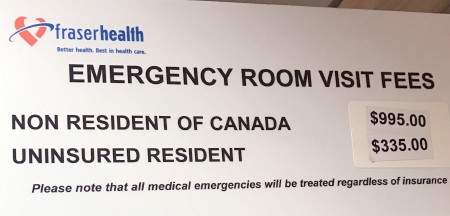
No foreigner will be denied emergency medical service in Canada, though if they have no insurance they will later face a hefty bill. In addition to hospital admittance and treatment, the uninsured should be prepared to pay full cost for things like ambulance rides and hospital beds. Seen here, a sign in a Vancouver hospital emergency room.
Staying Safe in Canada
Canada is generally a safe country, but it has some dangerous places. Every large Canadian city will have a couple of “bad neighborhoods” where criminals tend to congregate and locals generally avoid — particularly after dark — for fear of being harassed, robbed, or assaulted. Unfortunately, these neighborhoods can often be located close to tourist areas, and may seek to take advantage of the obviously confused or foreign. At the same time, most serious, violent crime in Canada tends to occur between people who know each other. Visitors who act confident and use caution and common sense should have little to fear.
Leaving belongings unattended in any public place is generally considered a high-risk activity, and though some businesses may store forgotten items in a “ lost and found ” collection of lost property, the police — and indeed, most Canadians — will generally be unsympathetic to victims of theft caused by inattentive behavior. People generally lock up their homes, cars, and bicycles before leaving them unsupervised. In rare cases, tourists and locals may be targeted by scam artists looking to cheat them out of money. In big cities, most scams are quite brazen, and usually take the form of a stranger asking for money on some sympathetic pretext, such as a phony personal emergency or phony charity. In some cases, a thief may attempt to quietly sell stolen goods to a stranger. Beggars can be common in some large Canadian cities as well. Many Canadians regard them with indifference, believing them to be scam artists.
The police can be called anytime in Canada by dialing 9-1-1 on the telephone. Canadian police are obligated to treat crimes committed against foreigners exactly the same as crimes against Canadians.
- Scams in Canada, TravelScams
More About Canadian Tourism
- Destination Canada, the Government of Canada's Official Tourism Department
- Explore Canada Instagram Account
- Lonely Planet Canada
Exchange Rate for one Canadian dollar (as of April 2019)
- $0.75 U.S. Dollar
- £0.57 U.K. Pound
- $1 Australian Dollar
- ¥5.02 Chinese Yuan
- ¥83.5 Japanese Yen
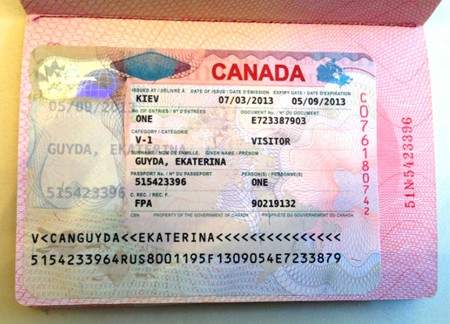
Canadian Travel Visas are special holographic stickers that are attached to a blank page of the passport.
- United States
- United Kingdom
Best ways to spend travel money in Canada: Debit and prepaid cards
Learn more about the best card to use, whether you should use a uk debit card and other ways to take spending money to canada..
In this guide
Low-cost travel money options for Canada
How many dollars do i need to bring to canada, travel card, debit card or credit card, buying currency in the uk, withdrawing from canadian atms, exchange rate history (gbp to cad), bottom line.
Travellers to Canada will be happy to hear that the monetary system basically works the same way as it does in the UK. You can use your cards in the same type of places as you would at home, there’s a similar number of ATMs and banks, and prices for accommodation and food are more or less the same — though it gets more expensive if you’re going skiing or snowboarding.
As you’ll be making transactions in Canadian dollars (CAD), there are some fees you’ll need to look out for. Here we compare the different travel money products and strategies you can use to get the most out of your trip to Canada.
Promoted for fee-free spending and interest on balance
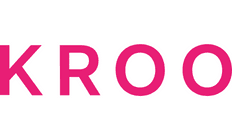
- Includes interest on your balance
- No foreign cash withdrawal fees
- Open via app
Promoted for fee-free spending and savings interest

- Make fee-free cash withdrawals
- Spend abroad with no fees
- Split costs with friends in seconds
Promoted for great rates abroad and cashback

- No monthly fees
- Up to 3.5% cashback
- 20 currencies on one card
How we chose these accounts
Using a prepaid travel card.
Travel cards let you spend Canadian dollars in Canada. This avoids the fee for currency conversion. A travel card lets you hold multiple foreign currencies at a time, which may be helpful if you’re visiting the neighbouring United States.
If you’ve transferred your funds to Canadian dollars using a travel money card, you can avoid currency conversion fees when spending in Canada. Travel cards also come with a supplementary card, which can come in handy if your primary card is lost, damaged or stolen.
While you can avoid currency conversion fees, there are some other costs you’ll need to look out for. For example, look for international ATM fee waivers to save on cash withdrawal costs.
- Tip: You might be able to give ATM fees a miss by taking cash out over the counter when you make a purchase.
Can I use my debit card in Canada?
Generally speaking, yes, but if you are travelling with a debit card, you should look for no charges for currency conversion, no international ATM fee and no monthly or account-keeping fees. If you just want to take your everyday debit card with you, you may have to pay for international ATM withdrawals (plus the ATM operator fee) and a 3% currency conversion fee.
Using a credit card
A credit card can give you interest-free days on your purchases, complimentary travel, purchase insurance, worldwide acceptance and additional financial security. If you have a credit card and you plan on using the complimentary international travel insurance feature, double-check your planned activities are covered by the policy. For example, some winter sports like snowboarding require additional cover.
Credit cards are a good way to make purchases, but you should supplement your credit card use with a debit card when you want to make ATM withdrawals. Cash advance fees and interest can compound and give you a nasty surprise when you arrive back in the UK. Some of these charges can be avoided, but it’s better just to keep your credit card for purchases and emergencies.
- Tip: Some merchants may question British-issued credit cards. Make sure you have photo identification to show just in case.
Using traveller’s cheques
Traveller’s cheques have been made redundant by other forms of travel money compared on this page for the following reasons:
- Your bank will give you your money back if you’re the victim of card fraud.
- You can use your card in a wide number of places in Canada. Meanwhile, traveller’s cheques can only be cashed at banks and a select number of merchants.
- You’ll pay a commission to buy traveller’s cheques.
Paying with cash in Canada
While card payments are common, there are always going to be times when you need to pay with cash, especially if you’re buying something small – some merchants won’t accept a card for a small payment due to surcharge fees. If you’re wondering the best way to exchange British pounds for Canadian dollars, you have these options:
- Before you leave. Exchange cash in the UK using a foreign exchange service (information provided on this page).
- When you arrive. Visit a bank or a dedicated foreign exchange office and avoid exchanging cash at the airport as you can easily find a better rate elsewhere.
- Withdraw from a Canadian ATM. The simplest way to get CAD is to make an ATM withdrawal when you arrive. There are multiple ATMs at Canadian airports that offer a true rate, just be conscious of ATM withdrawal fees.
Being a modernised, western country, Canada is similarly priced to the UK. Like all places around the world, prices jump up significantly in ski resorts such as Whistler. So, you’re going to need more cash if you head to the slopes.
*Prices are approximate and subject to change.
Don’t stress about using your card to make purchases and to withdraw cash – card acceptance and ATM availability are similar to the UK. Canadian merchants accept Visa and Mastercard, while American Express credit cards are accepted in more places than in the UK. Canada uses a debit card system similar to our own called Interac Direct Payment (IDP), which is available all across the nation. You can use this system to get cash out over the counter if you’re paying with your debit or travel card. Travel cards, debit cards and credit cards are all worth comparing before you leave the UK.
Travel money options for Canada at a glance
This table is a general summary of the travel money products in the market. Features and benefits can vary between cards.
Did you know?
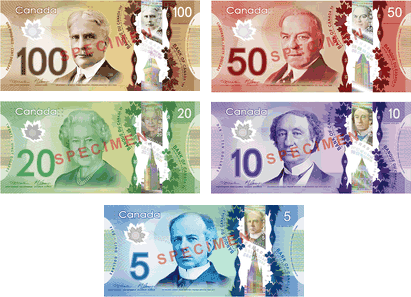
Michael's season in Whistler
Any tips on how to go about getting a Canadian bank account?
He says that in order to get a Canadian bank account, you have to get a Social Insurance Number (SIN), which is the equivalent to our National Insurance (NI) number. Once you have that, you can apply for a bank account/keycard. You can get these forms from any Canadian bank, it’s a matter of going through the process and filling out the forms. Michael says it’s something he definitely recommends for someone who is going to be doing a season in Whistler.
Were there any places where you had trouble using any of your cards?
He says more or less, “no”. Michael told us of one instance where his bank flagged a possible fraudulent purchase because of the location, apart from that everything was fine. He says to make sure you tell your bank about your travel plans to avoid this situation.
Michael’s tips for managing travel money in Canada
Michael has some good advice about making international payments to Canada. He says he had savings in his home bank account, and he needed to transfer this money to his new Canadian account. He made a lump sum transfer every month or two. He recommends the services of a foreign exchange and international payments company.
- Travel safety. He also says give money belts a chance. While they may not be the most fashion-forward choice of apparel, it’s savvy nonetheless. Michael’s words: “A travel money belt is probably a good idea for people who are prone to losing things.”
If you’re planning on hitting the slopes while you’re in Canada, you will need to make sure that you have additional winter sports insurance. So, if you are heading to Canada, make sure your trip is protected.
Canadian dollars are a common currency and can be purchased from any number of foreign exchange companies, including your bank. You can bring as many Canadian dollars into the country as you like. You must make a customs declaration if you’re carrying more than C$10,000.
There have been reports of Canadian ATMs not accepting foreign cards. Look for the Visa or Visa PLUS logo on the front of the machine to see whether you can use your card to get cash. The same with Mastercard. A local ATM operator fee applies each time you withdraw cash.
*2024 price is an average until 16 April 2024.
Whether it’s a credit card, a debit card or a travel card, you’ll need to use a combination of options. While you can get away with making card payments a lot of the time, there are still instances when you’ll need cash.
What happens if you lose your debit card and you have to wait half a week for a replacement? Take a combination of the travel money products we’ve listed on this page and use the right card for the right situation so you can save on international transaction charges.
The Northern Lights, some of the best skiing in the world and a people warm in heart and spirit, it’s no surprise that every month tens of thousands of British people travel to Canada.
Do your research before you leave and you can enjoy your trip to Canada with peace of mind that you’re spending your money your way and not giving your hard-earned cash to your bank. If you have any questions about using travel money in Canada, ask us a question using the form at the bottom of the page.
We show offers we can track - that's not every product on the market...yet. Unless we've said otherwise, products are in no particular order. The terms "best", "top", "cheap" (and variations of these) aren't ratings, though we always explain what's great about a product when we highlight it. This is subject to our terms of use . When you make major financial decisions, consider getting independent financial advice. Always consider your own circumstances when you compare products so you get what's right for you. Most of the data in Finder's comparison tables has the source: Moneyfacts Group PLC. In other cases, Finder has sourced data directly from providers.
Charlie Barton
Charlie Barton was a publisher at Finder. He specialised in banking and investments products, including banking apps, current accounts, share-dealing platforms and stocks and shares ISAs. Charlie has a first-class degree from the London School of Economics, and in his spare time enjoys long walks on the beach.
More guides on Finder
Bitcoin halving 2024 happened on 19 April. We take a look at what’s next for Bitcoin’s price and the crypto market.
The gulf between the amounts received by men vs women from government-backed startup loans has widened, despite calls for more funding for women entrepreneurs.
We take a closer look at two of the digital banking brands leading the way in the UK. Compare Kroo and Monzo in our side by side guide.
Everything we know about the Rubrik IPO, plus information on how to buy shares.
Is the UK leaving £250 billion in growth on the table? Our free report shows how female entrepreneurs aren’t getting the same startup funding as men.
We look at the latest statistics on global trading app Robinhood, including the number of users, revenue and profitability.
From financial advisers to accountants – if you need help with your personal finances, here’s who to talk to about what.
Discover how you can build wealth by investing £20,000 and explore some of the top strategies for investing your money.
The multi-currency account could be a cost-effective option for anyone who is going abroad, provided you don’t plan to withdraw lots of cash.
According to the latest figures, a single person living in London would need a gross salary of £37,000 to be financially stable.
How likely would you be to recommend finder to a friend or colleague?
Our goal is to create the best possible product, and your thoughts, ideas and suggestions play a major role in helping us identify opportunities to improve.
Advertiser Disclosure
finder.com is an independent comparison platform and information service that aims to provide you with the tools you need to make better decisions. While we are independent, the offers that appear on this site are from companies from which finder.com receives compensation. We may receive compensation from our partners for placement of their products or services. We may also receive compensation if you click on certain links posted on our site. While compensation arrangements may affect the order, position or placement of product information, it doesn't influence our assessment of those products. Please don't interpret the order in which products appear on our Site as any endorsement or recommendation from us. finder.com compares a wide range of products, providers and services but we don't provide information on all available products, providers or services. Please appreciate that there may be other options available to you than the products, providers or services covered by our service.
We update our data regularly, but information can change between updates. Confirm details with the provider you're interested in before making a decision.
Learn how we maintain accuracy on our site.

Language selection
- Français fr
Travelling with CAD$10,000 or more? Sending it by mail or courier? Declare it
October 1, 2022 : covid-19 emergency border measures ended.
Refer to COVID-19: Travel, testing and borders for details.
The penalties for failing to report have changed
Penalties for seized currency or monetary instruments equivalent to CAD $10,000 or more are now in effect and range from 5% to 50% of the total value.
It should be noted that CBSA will not return funds if it is suspected they are proceeds of crime or funds for financing terrorist activities.
There are no restrictions on the amount of money you can bring into or take out of Canada, and it is not illegal to do so, as long as you declare it.
This applies to all travellers, couriers and to people carrying money on behalf of someone else.
On this page
What to declare, how to declare your money when you enter or leave canada, sending money to or from canada by mail, sending money to or from canada by courier.
- If you fail to report (penalties)
What happens to your report
Related link.
Whether you are leaving or entering Canada, you must declare any currency (cash) or monetary instruments valued at CAD $10,000 or more that you are carrying. This amount includes Canadian or foreign currency or a combination of both.
Monetary instruments include, but are not limited to:
- bank drafts
- cheques and traveller's cheques
You must also declare funds you send to or from Canada by mail or by courier.
If you are carrying CAD $10,000 or more of your own money when entering or leaving Canada, complete this form for individuals and be ready to present it when you travel.
If you are carrying money on behalf of someone else, complete this general form and be ready to present it when you travel.
Arriving in Canada
If you are carrying CAD$10,000 or more you must report it at:
- an airport kiosk
- on your CBSA Declaration Card (if one was provided to you)
- through your Advance Declaration , or
- as part of your verbal declaration to a border services officer
Leaving Canada
When leaving by air carrying CAD $10,000 or more, you must report to the CBSA office at the airport, before clearing security. Before leaving by land, boat or rail, report to the nearest CBSA office.
Important information for NEXUS members
If you are crossing the border with currency or monetary instruments valued at CAD $10,000 or more, you cannot use NEXUS.
More information: NEXUS Terms and conditions
If you are sending CAD$10,000 or more in currency or monetary instruments to Canada by mail:
- complete this general form and place it inside your parcel
- attach a Universal Postal Convention ( UPC ) declaration, available at your nearest postal office , to the parcel
- complete this general form and submit a copy of it to the nearest CBSA office
- attach a Canada Post Customs Declaration form ( CN23 ), available at your nearest postal office , to the parcel
Additional postal requirements may exist. Contact Canada Post for more information.
If you are sending CAD $10,000 or more in currency or monetary instruments to or from Canada by courier complete this general form .
You must give this completed form to the person in charge of the conveyance or the courier . They will:
- complete a courier form
- attach it to your general form
If you fail to report
The CBSA has the authority to seize all currency and monetary instruments if the entire value is not reported. They may be returned after a penalty is paid.
Penalties range from 5% to 50% of the seized funds. The CBSA will not return the funds if it is suspected they are the proceeds of crime or funds for financing terrorist activities.
If you wish to dispute the seizing of funds , you may file a review.
Why you need to report
Reporting currency is an important part of helping CBSA fight money laundering and terrorist financing.
The CBSA administers and enforces legislation to help the Government of Canada to:
- detect and deter money laundering and terrorist financing activities
- facilitate the investigation and prosecution of related offences
- respond to the threat posed by organized crime
- fulfill international commitments to fight transnational crime
More information: Proceeds of Crime (Money Laundering) and Terrorist Financing Act (justice.gc.ca)
Your completed forms are sent to the Financial Transactions and Reports Analysis Centre of Canada ( FINTRAC ) for assessment and analysis.
The information provided on the currency reporting forms is subject to the Privacy Act and is collected under the authority of the Proceeds of Crime (Money Laundering) and Terrorist Financing Act ( PCMLTFA ).
- Border Information Service , by telephone
Cross-Border Currency and Monetary Instruments Reporting Regulations
- Visit Parliament Visit
- Français FR
Research publications
About this publication
Executive Summary
1 introduction, 2 global travel and tourism, 3.1 general, 3.2 key details for 2019, 3.3 travel by canadians, 3.4 indigenous tourism, 3.5 canada–united states tourism, 3.6 international competitiveness, 4.1 destination canada, 4.2 federal tourism strategy, 4.3.1 2008–2013, 4.3.2 2016–2017, 4.3.3 2019, 4.3.4 2021, 4.4 other government players, 5 looking ahead.
Canada’s multi-billion-dollar tourism sector employs hundreds of thousands of Canadians and is supported by all levels of government.
In 2020, due to the COVID-19 pandemic, global tourism and travel sector revenue decreased by 49% from the previous year, to US$4.7 trillion. Global tourism employment fell by 19% to 272 million jobs. Similarly, the Canadian sector earned $49.5 billion in 2020, a decline of 40% from 2019, while domestic employment fell to 1.6 million direct and indirect jobs, a decrease of 24%. About 28% of Canadian tourism revenue is generated from inbound visits.
In 2019, Canadians made 37.8 million foreign trips consisting mainly of 27.1 million visits to the United States. Additionally, Canadians made 10.7 million trips to other countries, most frequently Mexico (1.8 million), Cuba (964,000), the United Kingdom (770,000), China (666,000) and Italy (619,000).
According to the World Economic Forum’s Travel & Tourism Competitiveness Report 2019 , which ranks the most competitive countries for travel and tourism, Canada ranked ninth out of 140 countries studied, down from eighth place in 2013. Canada ranked first in several sub-categories, such as safety and security, environmental sustainability and air transport infrastructure. Conversely, Canada was found to be deficient in several areas, including price competitiveness and international openness.
Other studies have found that tourism demand is concentrated in Canada’s largest cities, with Toronto, Vancouver and Montréal accounting for 75% of overall visitors and most of this activity taking place during the summer months. There are also challenges stemming from labour shortages, a lack of investment and promotion, and a lack of coordination of tourism policy between all levels of government.
Destination Canada (formerly the Canadian Tourism Commission) is a federal Crown corporation responsible for national tourism marketing and is governed by the Canadian Tourism Commission Act . In 2019, the federal government announced Creating Middle Class Jobs: A Federal Tourism Growth Strategy , which is based on the following three pillars: building tourism in Canada’s communities; attracting investment to the visitor economy; and renewing the focus on public-private collaboration.
Between 2008 and 2020, the federal government invested approximately $1 billion in the tourism industry. In 2021, it announced another $1 billion in funding, including the Tourism Relief Fund.
If international borders continue to reopen and the industry continues its steady overall growth of the recent years prior to the pandemic, it will again contribute to Canada’s economic well-being. And although the United States continues to be Canada’s biggest tourism trading partner, stakeholders might continue their efforts of focusing on more growth-oriented, lucrative emerging markets to better diversify tourism interests to help Canada fulfil its tourism potential.
Canada’s tourism industry is an important contributor to Canadian economic growth. This industry – which comprises hospitality and travel services to and from Canada – is a multi-billion-dollar business that employs hundreds of thousands of Canadians and is supported by all levels of government. This HillStudy provides information about Canada’s tourism industry, travel patterns of visitors to and from Canada, the importance of the United States (U.S.) to Canada’s tourism economy and the role of the federal government.
The global tourism sector suffered substantial declines in activity due to the COVID-19 pandemic. Since this HillStudy incorporates data from 2019 and 2020, special attention should be paid to both explicit tourism figures and relative comparisons to previous years due to the extraordinary effects of the pandemic.
According to the Tourism Industry Association of Canada, “travel and tourism” includes “transportation, accommodations, food and beverage, meetings and events, and attractions,” such as festivals, historical/cultural institutions, theme parks and nature settings. 1
The World Travel & Tourism Council’s latest annual research explains the COVID 19 pandemic’s impact on the global travel and tourism sector:
- The sector suffered a loss of almost US$4.5 trillion in revenues worldwide, standing at US$4.7 trillion in 2020.
- In 2019, the sector contributed 10.4% to the global gross domestic product (GDP); this decreased to 5.5% in 2020 due to ongoing mobility restrictions.
- In 2020, 62 million jobs were lost, representing a drop of 18.5% of global sectoral employment, leaving just 272 million employed compared to 334 million in 2019.
- Globally, domestic visitor spending decreased by 45% and international visitor spending declined by 69.4%. 2
3 The Canadian Tourism Industry: Facts and Figures
Only about 28% of Canadian tourism revenue (about $21.3 billion) is generated from inbound visits. The remainder represents domestic spending – i.e., what Canadians spend on domestic and foreign tourism activities. Table 1 provides further information about the industry’s recent performance.
Note: Domestic spending includes spending while on a trip in Canada, spending on airfares with Canadian carriers on outbound trips and spending on tourism-related goods, e.g., camping equipment. International spending includes spending while on a trip in Canada but excludes any pre-trip purchases. GDP refers to gross domestic product.
There are two ways to categorize jobs in tourism:
- Jobs in tourism-dependent industries – the total number of jobs in industries where a significant portion of the revenue is in tourism; this includes accommodation, passenger transportation, food and beverage, entertainment and recreation, and travel services.
- Jobs directly supported by tourism – the share of jobs in the economy servicing visitors as opposed to local clients. These are jobs that would not exist without visitors; e.g., in food and beverage, a certain portion caters to local clients, and the portion that caters to visitors is captured in this number.
Figure 1 provides further details about international arrivals to Canada.
Figure 1 – Selected Information on International Arrivals to Canada
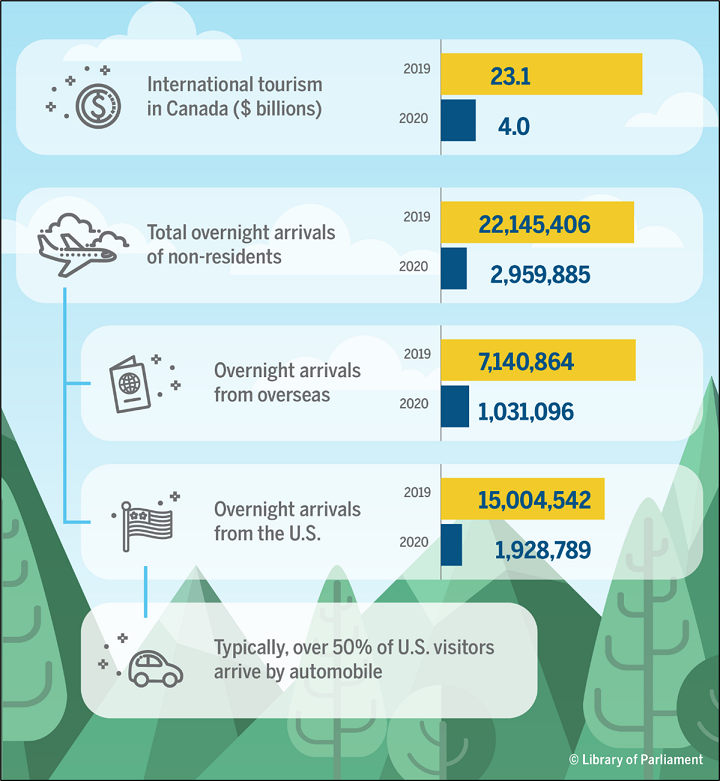
According to Destination Canada, prior to the pandemic, Canada benefited from the fact that the tourism sector was booming globally. Since 2000, tourism has been growing approximately three to four times faster than the global population and about 1.5 times faster than the overall global GDP . Furthermore, notwithstanding the COVID-19 pandemic, this was expected to continue into the mid-2020s. In fact, 2017’s travel and tourism sector growth of 4.6% exceeded the global GDP growth rate of 3.7%; that is, for the seventh successive year, the sector outpaced global GDP growth, which itself had the strongest growth a decade. 3
However, even with this strong performance, Canada’s tourism industry potential remains significantly underdeveloped. Specifically, even though it has outpaced global population and GDP growth, Canadian tourism growth has lagged behind global tourism growth for several years (see section 3.6 of this Hill Study). 4
Moreover, tourism represents a much smaller fraction of Canada’s exports when compared to peer countries such as the U.S., Japan, the United Kingdom and Australia. Studies suggest there is an opportunity for Canada to more than double its international arrivals and associated revenues by 2030. 5 This could be achieved, in part, by capitalizing on “substantial opportunities to increase the number of tourists to Canada from the United Kingdom, China, France, Germany and Australia.” 6
Beyond its role in helping to create revenue and both direct and indirect jobs in the Canadian tourism industry, the efficient promotion of tourism can be seen as a valuable investment in Canada’s overall economy. A 2013 Deloitte study has shown that “a rise in business or leisure travel between countries can be linked to subsequent increases in export volumes to the visitors’ countries.” 7
In 2019, the Canadian tourism sector had its best year on record, reaching 22.1 million international overnight arrivals, a 4.8% increase over the previous year. Similar to other years, the vast majority (67.7%) came from the U.S.; the top three non-U.S. sources of visitors were the U.K. (875,632), China (715,474) and France (668,490). 8
Destination Canada reported that “air and sea arrivals from the Europe region were mostly on par with 2018 levels, with the exception of France, which led the region (+7.0%).” 9 However, there were mixed results from the Asia-Pacific region as the biggest decline came from the region’s largest market, China (-9.1% in air and sea arrivals), with smaller downward trends from Japan (-1.9%) and Australia (-0.4%). More positively, air and sea arrivals from South Korea were slightly ahead of 2018 levels, while India led the region in year-over-year growth (+9.1%). 10
In North America, the U.S. provided an increase in arrivals on overnight trips entering Canada by air and auto of 6.4%. Mexico was the only one of Destination Canada’s long-haul markets to record double-digit year-over-year growth in overnight arrivals by air and sea (12.3%) in 2019. 11
Canada’s rising popularity among Chinese travellers is particularly noteworthy, as China is now Canada’s second-largest overseas tourism source after the U.K. 12 This is partly attributable to Canada’s having been granted Approved Destination Status by the Chinese government. In 2018, Canada welcomed a record 737,000 Chinese tourists, “surpassing the 700K mark for the first time and doubling the number of annual travellers since 2013, with an average annual growth rate of 16%.” 13 Travelling mainly during July and August, “Chinese tourists spend on average about $2,850 per trip to Canada, staying for around 30 nights.” 14
In 2019, Canadians made 37.8 million foreign trips consisting mainly of 27.1 million visits to the U.S. Although travel to the U.S. declined by 2.3% in 2019 compared to 2018, Canadians “spent $21.1 billion on their trips to the United States in 2019, up 4.8% from a year earlier.” 15
Additionally, Canadians made 10.7 million trips to other countries, the most common of which were Mexico (1.8 million), Cuba (964,000), the U.K. (770,000), China (666,000) and Italy (619,000). 16
Canadians also enjoy travelling within the country, making 275 million domestic trips in 2019, down 1.0% from 2018. Spending on trips within Canada declined 0.3% year over year to $45.9 billion. 17 The top locations were Ontario (116.5 million visits), Quebec (56.9 million visits), British Columbia (34.2 million) and Alberta (32.4 million); this includes both intra and inter-provincial/territorial domestic travel. 18
Canada’s Indigenous tourism sector is diverse and comprises different business models. Although its key drivers of employment and GDP come from air transportation and resort casinos, “it is the cultural workers, such as Elders and knowledge keepers, who define many of the authentic Indigenous cultural experiences available to tourists in Canada.” 19 Moreover, when compared with Indigenous tourism enterprises without a cultural focus, those involved in cultural tourism rely more on visitors from foreign markets as part of their customer base.
Prior to the pandemic, Canada’s Indigenous tourism sector had been rapidly outpacing overall Canadian tourism activity. Specifically, the Indigenous tourism sector’s GDP rose 23.2% between 2014 and 2017, reaching $1.7 billion. 20
Lastly, Indigenous tourism businesses cite access to financing as well as marketing support and training as some of the main barriers to growth. 21
Given its proximity and long shared border, the U.S. is by far the biggest source of Canada’s tourism visitors: in 2018, about two-thirds of all foreign visitors were Americans, 57% of whom arrived by automobile. 22 The U.S. is also the most visited foreign destination by Canadians.
U.S. arrivals to Canada reached 14.44 million in 2018, up 1% over 2017 and the highest level recorded since 2004. American tourists like to take advantage of their long weekends for travel, with Memorial Day (the last Monday in May), Independence Day (4 July) and Labour Day (the first Monday in September) contributing to the largest weekend spikes in road arrivals in 2018. 23
Americans spend around $700 per trip to Canada, staying an average of five nights. In 2018, they preferred mainly nature-based activities, including natural attractions, hiking or walking in nature, and viewing wildlife. 24
As shown in Figure 2, analysis of various factors over a 20-year period shows that the number of Americans travelling to Canada relates more to the Canadian/U.S. dollar exchange rate than to changes in the U.S. GDP .
Figure 2 – Index Comparing the Number of U.S. Visits to Canada, the Canadian/U.S. Dollar Exchange Rate and the Change in the U.S. Gross Domestic Product (GDP), 2000–2019 (2000 = 100)
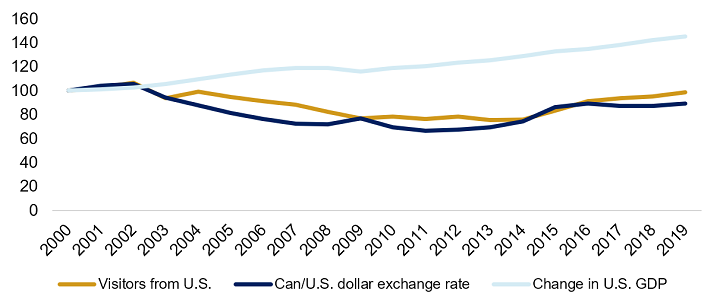
Source: Figure prepared by the Library of Parliament using data obtained from Statistics Canada, “ Chart 1: Tourists to Canada from abroad, annual ,” The Daily , 20 February 2020; Federal Reserve Bank of St. Louis, “ Canadian Dollars to U.S. Dollar Spot Exchange Rate ,” FRED, Database, accessed 20 August 2021; and World Bank, “ GDP (constant 2010 US$) – United States ,” Database, accessed 20 August 2021.
According to the World Economic Forum’s Travel & Tourism Competitiveness Report 2019 , Canada ranked ninth out of 140 countries studied, down from eighth place in 2013. 25 Canada was ranked first in several sub-categories, such as safety and security, environmental sustainability and air transport infrastructure.
In contrast, Canada was found to be deficient in several areas, such as price competitiveness and international openness (e.g., visa requirements, air service agreements).
A 2018 report further indicated the following challenges facing the Canadian tourism sector:
- CONCENTRATED DEMAND – Toronto, Vancouver and Montréal (Canada’s three largest cities) account for 75% of all visitors, and most of this activity takes place during the summer months. Plus, 70% of visitors to Canada come from the U.S., making the sector very vulnerable to the vagaries of the American economy.
- ACCESS – Coming to (and travelling within) Canada can be expensive, difficult and time-consuming; this is true for travel both inter-regionally (e.g., visiting a national park from a large city) and within urban centres.
- LABOUR SHORTAGES – Similar to many sectors that service the public, the tourism industry has been facing labour shortages for some time. In fact, this sector “could face a shortage of 120,000 people by the mid-2020s, and up to 230,000 people by 2030.”
- LACK OF INVESTMENT/PROMOTION – As hotels face up to 95% occupancy during the summer months, there are insufficient room-nights for additional large-attendance events such as conventions, conferences and festivals. Also, compared to peer countries, Canada spends less on marketing and promotion per international tourist arrival (in some cases up to 20% less). One of the contributing factors is that most tourism businesses are small enterprises that face difficulties in securing capital.
- GOVERNANCE – Given that the sector is extremely diverse and made up of many destinations in different regions, successful efforts for one region or operator will not necessarily carry over to other parts of the country or service providers. Also, as tourism policies and programs are spread across numerous organizations within every level of government, making a well-coordinated and integrated Canadian approach is difficult. 26
These assessments suggest that even though Canada is doing well in certain areas, other jurisdictions may be greatly improving their ability to attract international tourism. Changing trends in consumer preferences may also play a role in determining which destinations may be more popular than others at any particular time.
4 The Role of the Federal Government
Destination Canada is a federal Crown corporation responsible for national tourism marketing and is governed by the Canadian Tourism Commission Act . It targets the following markets “where Canada’s tourism brand leads and yields the highest return on investment”: Australia, Canada, China, France, Germany, Japan, Mexico, the U.K. and the U.S. 27
In 2019, the federal government announced its new tourism strategy entitled Creating Middle Class Jobs: A Federal Tourism Growth Strategy . It is based on the following three pillars:
- BUILDING TOURISM IN CANADA’S COMMUNITIES – expand from the concentration of international visitors to Canada’s three largest cities over a few (mostly summer) months by helping communities “exploit and develop the characteristics that make them special. In so doing, they will be better able to convince tourists to get off the beaten path, explore the lesser-known parts of the country, and to visit during the off-peak seasons.”
- ATTRACTING INVESTMENT TO THE VISITOR ECONOMY – to combat the lack of investment in Canada’s tourism sector, the strategy aims to improve coordination among jurisdictions and help attract private investment by establishing “Tourism Investment Groups in every region of Canada to enable the development of impactful tourism projects, including large-scale destination projects.”
- RENEWING THE FOCUS ON PUBLIC–PRIVATE COLLABORATION – with the establishment of the Economic Strategy Table for Tourism, the federal government aims to stimulate and sustain growth in Canada’s tourism sector by working collaboratively with industry to ensure that tourism is on the front lines of economic policy making. This could include addressing “the high cost of travelling to and within Canada, labour shortages and the lack of investment. It could also look at competitiveness, sustainability, the sharing economy and digital platforms.” 28
Part of the focus on improving tourism has been improving accessibility. To that end, in 2018, the Government of Canada introduced Bill C-81, the Accessible Canada Act , which “aims to achieve a barrier-free Canada through the proactive identification, removal, and prevention of barriers to accessibility in all areas under federal jurisdiction, including transportation services such as air and rail.” 29 The bill received Royal Assent in 2019.
4.3 Federal Funding Initiatives
In 2008–2009, the federal government invested over $500 million in the tourism industry to develop facilities and events, and to promote tourism. This is in addition to investments in other areas that affect tourism, such as improvements for Parks Canada and border services. 30 In 2013, funding of $42 million was allocated to improve visa services, 31 an area where Canada has been found to be deficient.
Since 2016, the regional development agencies have allocated over $196 million to tourism businesses, and the Business Development Bank of Canada has provided more than $1.4 billion in financing. Export Development Canada assists Canadian tourism businesses that aim to expand into global markets. 32 Budget 2017 provided Destination Canada with permanent funding of $95.5 million per year for tourism-related work, up from $58 million. 33
Budget 2019 announced that starting in 2019–2020, $58.5 million over two years would go towards the creation of a Canadian Experiences Fund. The Fund supports “Canadian businesses and organizations seeking to create, improve or expand tourism-related infrastructure—such as accommodations or local attractions—or new tourism products or experiences.” These investments would focus on tourism in rural and remote communities, Indigenous tourism, winter tourism, inclusiveness (especially for the LGBTQ2 communities) and farm-to-table/culinary tourism. 34
Additionally, Budget 2019 included $5 million to Destination Canada for a “tourism marketing campaign that will help Canadians to discover lesser-known areas, hidden national gems and new experiences across the country.” 35
Budget 2019 also included the establishment of the Economic Strategy Table dedicated to tourism, which will bring together “government and industry leaders to identify economic opportunities and help guide the Government in its efforts to provide relevant and effective programs for Canada’s innovators.” 36
Announced in Budget 2021, the Tourism Relief Fund is a $500 million national program that is part of a $1 billion package to support the Canadian tourism sector. 37 Its goal is to position Canada as a destination of choice when domestic and international travel is once again deemed safe (i.e., post-pandemic) by:
- empowering tourism businesses to create new or enhance existing tourism experiences and products to attract more local and domestic visitors; and
- helping the sector reposition itself to welcome international visitors by providing the best Canadian tourism experiences to the world. 38
Initiatives under this fund will help tourism businesses and organizations adapt their operations to meet public health requirements; improve their products and services; and position themselves for post-pandemic economic recovery. 39
Part of this funding includes Destination Canada’s $2-million investment along with $950,000 of in-kind support to the Indigenous Tourism Association of Canada to “support the recovery of Indigenous tourism businesses.” 40
Several federal government institutions also play key roles in shaping the outcome of Canada’s tourism economy. For example, the federal government is responsible for the following:
- establishing ticket taxes and travel tariffs;
- providing customs and border services; and
- addressing matters related to national security.
The National Capital Commission and Parks Canada also help ensure that iconic Canadian places are protected and preserved for current and future visitors to enjoy. As well, provincial and territorial governments help develop and promote tourism in Canada.
The Canadian tourism industry was greatly affected by the global COVID-19 pandemic. However, if international borders continue to reopen and if the industry continues its steady overall growth of the recent years prior to the pandemic, tourism will again contribute to Canada’s economic well-being. And although the U.S. continues to be Canada’s biggest tourism trading partner, stakeholders might continue their efforts of focusing on more growth-oriented, lucrative emerging markets to better diversify tourism interests and help Canada fulfil its tourism potential.
- World Travel & Tourism Council, Economic Impact Reports . [ Return to text ]
- Ibid. [ Return to text ]
- Ibid., p. 7. [ Return to text ]
- Destination Canada, China . [ Return to text ]
- Statistics Canada, “ Canadians made fewer trips within Canada and around the world in 2019 ,” The Daily , 9 December 2020. [ Return to text ]
- Ibid., p. 14. [ Return to text ]
- Ibid., p. 15. [ Return to text ]
- Destination Canada, United States . [ Return to text ]
- Destination Canada, Who we are . See also the Canadian Tourism Commission Act , S.C. 2000, c. 28. [ Return to text ]
- Innovation, Science and Economic Development Canada, “ Creating Middle Class Jobs: A Federal Tourism Growth Strategy ,” Creating Middle Class Jobs: A Federal Tourism Growth Strategy . [ Return to text ]
- Ibid.; and Accessible Canada Act , S.C. 2019, C. 10. [ Return to text ]
- Government of Canada, “ Chapter 3.1: Connecting Canadians With Available Jobs –Temporary Resident Program ,” Jobs, Growth and Long-Term Prosperity: Economic Action Plan 2013 , Budget 2013. [ Return to text ]
- Government of Canada, “ Chapter 2: Building a Better Canada – Launching a Federal Strategy on Jobs and Tourism ,” Investing in the Middle Class , Budget 2019. The Government of Canada’s regional development agencies are the Atlantic Canada Opportunities Agency (ACOA); Canada Economic Development for Quebec Regions (CED); Canadian Northern Economic Development Agency (CanNor); Federal Economic Development Agency for Southern Ontario (FedDev Ontario); Federal Economic Development Agency for Northern Ontario (FedNor); Prairies Economic Development Canada (PrairiesCan); and Pacific Economic Development Canada (PacifiCan). [ Return to text ]
- Government of Canada, “ Chapter 2: Building a Better Canada – Launching a Federal Strategy on Jobs and Tourism ,” Investing in the Middle Class , Budget 2019. “LGBTQ2” refers to lesbian, gay, trans, queer and Two-Spirit. [ Return to text ]
- Government of Canada, Tourism Relief Fund . [ Return to text ]
- Destination Canada, Destination Canada providing $2 million in funding to Indigenous Tourism Association of Canada ( ITAC ) . [ Return to text ]
© Library of Parliament
- 44 th Parliament, 1 st Session
- 43 rd Parliament, 2 nd Session
- 43 rd Parliament, 1 st Session
- 42 nd Parliament, 1 st Session
- 41 st Parliament, 2 nd Session
- 41 st Parliament, 1 st Session
- 40 th Parliament, 3 rd Session
- 40 th Parliament, 2 nd Session
- 40 th Parliament, 1 st Session
- 39 th Parliament, 2 nd Session
- 39 th Parliament, 1 st Session
- 38 th Parliament, 1 st Session
- 37 th Parliament, 3 rd Session
- 37 th Parliament, 2 nd Session
- 37 th Parliament, 1 st Session
Related content
- Legislative summaries
- Trade and investment series
- See complete list of research publications
- Publications about Parliament
- Library Catalogue
- Travel Planning Guide
Canada Travel Budget - Visit Canada on a Budget or Travel in Style
- Canada Costs

- Is Canada Expensive?
- How much does a trip to Canada cost?
- British Columbia
- New Brunswick
- Nova Scotia
- Prince Edward Island
- Canada Hotel Prices
- Canada Cities: Hotel Prices by City
- Best Adults Only Hotels in Canada
- Best Romantic Hotels for Couples in Canada
- Best Beach Hotels in Canada
- Best Pet-Friendly Hotels in Canada
- Best Cheap Hotels in Canada
- Best Business Hotels in Canada
- Best Family-Friendly Hotels in Canada
- Best Hotels for a Weekend Getaway in Canada
- Best Hotels for One Night in Canada
- Best Hotels for One Week in Canada
- Best Hotels for First Time Visitors in Canada
- Best Luxury Hotels in Canada
- Best Party Hotels in Canada
- Best Hotels for Scuba Diving in Canada
- Best Hotels for Skiing in Canada
- Hostel Prices & Reviews
- Canada Activities
- Canada Tour Prices
- The Best Family-Friendly Tours to Canada
- The Best Wildlife Tours to Canada
- The Best Hiking & Trekking Tours in Canada
- The Best Historical Tours in Canada
- The Best 10-Day Tours in Canada
- The Best One Week (7-Day) Tours in Canada
- The Best 3-Day Tours in Canada
- The Best 2-Week Tours in Canada
- The Best 3-Week Tours in Canada
- Tours for Outdoor and Nature Lovers in Canada
- The Best Christmas & New Years Tours in Canada
- The Best Coach Bus Tours in Canada
- The Best Adventure Tours to Canada
- The Best Eco Tours in Canada
- The Best Train & Rail Tours in Canada
- The Best Thrill-Seeking Tours in Canada
- The Best Cruise Tours and Packages in Canada
- The Best Sightseeing Tours in Canada
- The Best Cultural Tours in Canada
- The Best Camping Tours in Canada
- The Best Romantic Tours for Couples in Canada
- The Best Polar Tours & Cruises in Canada
- The Best Walking Tours in Canada
- The Best Northern Lights Tours in Canada
- The Best Tours Under $1000 in Canada
- The Best Luxury Tours to Canada
- The Best Budget Tours to Canada
- The Best Tours for Seniors to Canada
- The Best Contiki Tours to Canada
- The Best G Adventures Tours to Canada
- Quebec City
- Niagara Falls
- How much does it cost to travel to Canada? (Average Daily Cost)
- Canada trip costs: one week, two weeks, one month
How much do package tours cost in Canada?
Is canada expensive to visit.
- How much do I need for a trip to Canada?
- Accommodation, Food, Entertainment, and Transportation Costs
- Travel Guide
How much does it cost to travel to Canada?
You should plan to spend around $171 (CA$236) per day on your vacation in Canada. This is the average daily price based on the expenses of other visitors.
Past travelers have spent, on average for one day:
- $38 (CA$53) on meals
- $22 (CA$30) on local transportation
- $186 (CA$256) on hotels
A one week trip to Canada for two people costs, on average, $2,397 (CA$3,302) . This includes accommodation, food, local transportation, and sightseeing.
All of these average travel prices have been collected from other travelers to help you plan your own travel budget.
- Travel Style: All Budget (Cheap) Mid-Range Luxury (High-End)
- Average Daily Cost Per person, per day $ 171 CA$ 236
- One Week Per person $ 1,199 CA$ 1,651
- 2 Weeks Per person $ 2,397 CA$ 3,302
- One Month Per person $ 5,137 CA$ 7,076
- One Week For a couple $ 2,397 CA$ 3,302
- 2 Weeks For a couple $ 4,794 CA$ 6,604
- One Month For a couple $ 10,273 CA$ 14,152
Help other travelers! Answer some quick questions about your past travels. Click here: let's do it!
How much does a one week, two week, or one month trip to Canada cost?
A one week trip to Canada usually costs around $1,199 (CA$1,651) for one person and $2,397 (CA$3,302) for two people. This includes accommodation, food, local transportation, and sightseeing.
A two week trip to Canada on average costs around $2,397 (CA$3,302) for one person and $4,794 (CA$6,604) for two people. This cost includes accommodation, food, local transportation, and sightseeing.
Please note, prices can vary based on your travel style, speed, and other variables. If you're traveling as a family of three or four people, the price per person often goes down because kid's tickets are cheaper and hotel rooms can be shared. If you travel slower over a longer period of time then your daily budget will also go down. Two people traveling together for one month in Canada will often have a lower daily budget per person than one person traveling alone for one week.
A one month trip to Canada on average costs around $5,137 (CA$7,076) for one person and $10,273 (CA$14,152) for two people. The more places you visit, the higher the daily price will become due to increased transportation costs.
Organized tours are usually more expensive than independent travel, but offer convenience and peace of mind that your trip has been planned by a travel expert.
The average price for an organized tour package in Canada is $423 per day. While every tour varies by total price, length, number of destinations, and quality, this is the daily average price based on our analysis of available guided tours.
- Yukon River: The Classic ( Lake Laberge to Carmacks) 8 Days - 2 Destinations $ 1,552
- Newfoundland & Labrador with Iceberg Festival 13 Days - 18 Destinations $ 4,259
Independent Travel
Traveling Independently has many benefits including affordabilty, freedom, flexibility, and the opportunity to control your own experiences.
All of the travel costs below are based on the experiences of other independent travelers.
Canada is a moderately priced destination to visit. It's about average with most other countries for travel costs. The prices for food, accommodation, and transportation are all fairly reasonable.
Within North America, which is known to be an expensive region, Canada is reasonably affordable compared to the other countries. It is in the top 25% of countries in North America for its affordability . You can find more affordable countries such as Mexico, but there are also more expensive countries, such as USA.
For more details, see Is Canada Expensive?
How much money do I need for a trip to Canada?
The average Canada trip cost is broken down by category here for independent travelers. All of these Canada travel prices are calculated from the budgets of real travelers.
Accommodation Budget in Canada
Average daily costs.
Calculated from travelers like you
The average price paid for one person for accommodation in Canada is $93 (CA$128). For two people sharing a typical double-occupancy hotel room, the average price paid for a hotel room in Canada is $186 (CA$256). This cost is from the reported spending of actual travelers.
- Accommodation 1 Hotel or hostel for one person $ 93 CA$ 128
- Accommodation 1 Typical double-occupancy room $ 186 CA$ 256
Hotel Prices in Canada
Looking for a hotel in Canada? Prices vary by location, date, season, and the level of luxury. See below for options.
Find the best hotel for your travel style.
Actual Hotel Prices The average hotel room price in Canada based on data provided by Kayak for actual hotel rooms is $138. (Prices in U.S. Dollars, before taxes & fees.)
Kayak helps you find the best prices for hotels, flights, and rental cars for destinations around the world.
Recommended Properties
- Hotel Maison du Fort Budget Hotel - Kayak $ 191
- Donna's Bed & Breakfast Luxury Hotel - Kayak $ 236
Local Transportation Budget in Canada
The cost of a taxi ride in Canada is significantly more than public transportation. On average, past travelers have spent $22 (CA$30) per person, per day, on local transportation in Canada.
- Local Transportation 1 Taxis, local buses, subway, etc. $ 22 CA$ 30
Recommended Services
- Calgary Airport & airport hotels to Banff & Lake Louise Transfer Viator $ 63
- YQB Airport Transfer Viator $ 96
What did other people spend on Local Transportation?
Typical prices for Local Transportation in Canada are listed below. These actual costs are from real travelers and can give you an idea of the Local Transportation prices in Canada, but your costs will vary based on your travel style and the place where the purchase was made.
- Parking in Quebec City CA$ 5.00
- Train: 2 Day Passes CA$ 22
- SkyTrain from Airport CA$ 8.75
- SkyTrain DayPass CA$ 9.00
- 15 min Taxi Ride CA$ 12
- Taxi from Airport to Downtown CA$ 29
- Airport Shuttle CA$ 36
- Park Pass CA$ 20
Food Budget in Canada
While meal prices in Canada can vary, the average cost of food in Canada is $38 (CA$53) per day. Based on the spending habits of previous travelers, when dining out an average meal in Canada should cost around $15 (CA$21) per person. Breakfast prices are usually a little cheaper than lunch or dinner. The price of food in sit-down restaurants in Canada is often higher than fast food prices or street food prices.
- Food 2 Meals for one day $ 38 CA$ 53
Recommended
- 2 Hour Dinner Cruise in North America by Solar Boat Viator $ 133
- Gatineau Park Nocturnal Snowshoeing Adventure & Dinner - From Ottawa & Gatineau Viator $ 63
What did other people spend on Food?
Typical prices for Food in Canada are listed below. These actual costs are from real travelers and can give you an idea of the Food prices in Canada, but your costs will vary based on your travel style and the place where the purchase was made.
- McDonalds CA$ 6.38
- Tim Hortons breakfast and coffee CA$ 12
- Grand Banker Lunch for 2 CA$ 47
- Bluenose II Restaurant CA$ 61
- Coffee at Timmy's CA$ 5.00
- Tim Hortons Breakfast CA$ 16
- Coffee at Starbucks CA$ 16
- All You Can Eat Sushi Lunch CA$ 12
Entertainment Budget in Canada
Entertainment and activities in Canada typically cost an average of $24 (CA$33) per person, per day based on the spending of previous travelers. This includes fees paid for admission tickets to museums and attractions, day tours, and other sightseeing expenses.
- Entertainment 1 Entrance tickets, shows, etc. $ 24 CA$ 33

Recommended Activities
- Hidden Gems Tour Lunenburg Viator $ 37
- Explore Banff National Park with Our Premium Day Tour Viator $ 119
What did other people spend on Entertainment?
Typical prices for Entertainment in Canada are listed below. These actual costs are from real travelers and can give you an idea of the Entertainment prices in Canada, but your costs will vary based on your travel style and the place where the purchase was made.
- Hot Springs CA$ 7.32
- Bata Shoe Museum (2) CA$ 10
- Driving Range CA$ 20
- Harbour Dinner Cruise CA$ 36
- Stampede Admission (for 2) CA$ 30
- Firewood CA$ 19
- Art Gallery of Ontario for Two CA$ 21
- Canoe Rental CA$ 37
Tips and Handouts Budget in Canada
The average cost for Tips and Handouts in Canada is $4.55 (CA$6.27) per day. The usual amount for a tip in Canada is 10% - 20% .
- Tips and Handouts 1 For guides or service providers $ 4.55 CA$ 6.27
Scams, Robberies, and Mishaps Budget in Canada
Unfortunately, bad things can happen on a trip. Well, you've just got to deal with it! The average price for a scam, robbery, or mishap in Canada is $2.28 (CA$3.14), as reported by travelers.
- Scams, Robberies, and Mishaps 1 $ 2.28 CA$ 3.14
What did other people spend on Scams, Robberies, and Mishaps?
Typical prices for Scams, Robberies, and Mishaps in Canada are listed below. These actual costs are from real travelers and can give you an idea of the Scams, Robberies, and Mishaps prices in Canada, but your costs will vary based on your travel style and the place where the purchase was made.
- Towel & Mosquito Smoke CA$ 10
Alcohol Budget in Canada
The average person spends about $17 (CA$23) on alcoholic beverages in Canada per day. The more you spend on alcohol, the more fun you might be having despite your higher budget.
- Alcohol 2 Drinks for one day $ 17 CA$ 23
- Kelowna Wine Tour on an E-Bike with Lunch Viator $ 111
- Whistler Distillery Tour & Tasting Experience Viator $ 65
What did other people spend on Alcohol?
Typical prices for Alcohol in Canada are listed below. These actual costs are from real travelers and can give you an idea of the Alcohol prices in Canada, but your costs will vary based on your travel style and the place where the purchase was made.
- Bottle of Wine CA$ 15
- Absolut at Barrie CA$ 25
- Vodka CA$ 25
Water Budget in Canada
On average, people spend $2.60 (CA$3.58) on bottled water in Canada per day. The public water in Canada is considered safe to drink.
- Water 2 Bottled water for one day $ 2.60 CA$ 3.58
Related Articles
Canada on a budget.
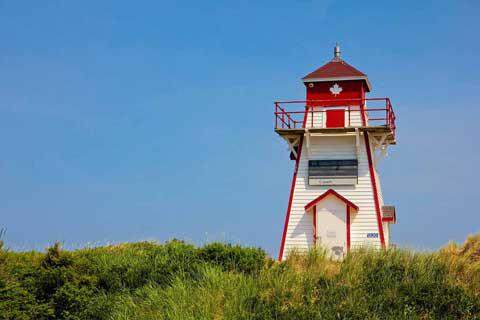
At A Glance
- Canada covers a vast area of land. It is virtually impossible to see it all in one trip, regardless of how much time you have. Definitely choose one or two regions that you can explore in depth. You'll have a more fulfilling experience and you'll save yourself a lot of money. Every region is different so do some research to determine what appeals to you the most.
- If you're hoping to cover vast distances, then flying is the most convenient way to get around the country. It is also one of the most expensive. Other options include taking trains, buses, or renting your own vehicle. Bus connections are decent but not great. They typically connect the largest cities. Having your own vehicle will allow you more flexibility and you will be able to delve into the experience on a different level.
- One fun way to experience the national parks throughout the country is to travel with a RV. This gives you the added flexibility of having your own vehicle, and you have your accommodation with you wherever you go. Many of the campgrounds have adequate hookups for RVs so this is a great way to experience all that the country has to offer.
- Wildlife spotting is a popular activity throughout the country. Whether you're looking for bears, whales, or something else, it's best to make sure you're traveling during the appropriate season. Also make sure you have a good guide with you as that can make all of the difference.
- You'll find most major western chain restaurants throughout the country. Fast food options are abundant and cheap, but generally the quality is quite low. Instead, look for local options. These are everywhere in the larger cities, and available on a smaller scale in the more rural locations.
Top Tourist Attractions
Popular foods, more related articles.
We've been gathering travel costs from tens of thousands of actual travelers since 2010, and we use the data to calculate average daily travel costs for destinations around the world. We also systematically analyze the prices of hotels, hostels, and tours from travel providers such as Kayak, HostelWorld, TourRadar, Viator, and others. This combination of expenses from actual travelers, combined with pricing data from major travel companies, gives us a uniqe insight into the overall cost of travel for thousands of cities in countries around the world. You can see more here: How it Works .
Subscribe to our Newsletter
By signing up for our email newsletter, you will receive occasional updates from us with sales and discounts from major travel companies , plus tips and advice from experienced budget travelers!

Search for Travel Costs
Some of the links on this website are sponsored or affiliate links which help to financially support this site. By clicking the link and making a purchase, we may receive a small commission, but this does not affect the price of your purchase.
Travel Cost Data
You are welcome to reference or display our travel costs on your website as long as you provide a link back to this page .
A Simple Link
For a basic link, you can copy and paste the HTML link code or this page's address.
Travel Cost Widget
To display all of the data, copy and paste the code below to display our travel cost widget . Make sure that you keep the link back to our website intact.
- Privacy / Terms of Use
- Activities, Day Trips, Things To Do, and Excursions
Travel, Tourism & Hospitality
Tourism in Canada - statistics & facts
Industries supported by tourism in canada, impact of the coronavirus (covid-19) pandemic, key insights.
Detailed statistics
Contribution of tourism to GDP in Canada 2000-2020
Tourism expenditure in Canada 2000-2019, by commodity
Number of international tourist trips to Canada 2013-2021
Editor’s Picks Current statistics on this topic
Current statistics on this topic.
Contribution of tourism to GDP in Canada 2000-2020, by industry
Leading source countries for international tourists to Canada 2019-2021
Number of international tourist trips to Canada 2022, by province of entry
Related topics
Recommended.
- Tourism worldwide
- Travel agency industry
- Hospitality industry in Canada
Recommended statistics
- Premium Statistic Contribution of tourism to GDP in Canada 2000-2020
- Premium Statistic Contribution of tourism to GDP in Canada 2000-2020, by industry
- Premium Statistic Tourism expenditure in Canada 2000-2019
- Premium Statistic Tourism expenditure in Canada 2000-2019, by commodity
- Premium Statistic Tourism expenditure on transport in Canada 2006-2019, by type
- Premium Statistic Contribution of tourism to employment in Canada 2016-2020
- Premium Statistic Contribution of tourism to employment in Canada 2016-2019, by industry
Contribution of tourism to the gross domestic product (GDP) in Canada from 2000 to 2020 (in billion Canadian dollars)
Contribution of tourism to the gross domestic product (GDP) in Canada from 2000 to 2020, by industry (in billion Canadian dollars)
Tourism expenditure in Canada 2000-2019
Tourism expenditure in Canada from 2000 to 2019 (in billion Canadian dollars)
Tourism expenditure in Canada from 2000 to 2019, by commodity (in billion Canadian dollars)
Tourism expenditure on transport in Canada 2006-2019, by type
Tourism expenditure on transport in Canada from 2006 to 2019, by type (in billion Canadian dollars)*
Contribution of tourism to employment in Canada 2016-2020
Contribution of tourism to employment in Canada from Q4 2016 to Q4 2020 (in thousands)
Contribution of tourism to employment in Canada 2016-2019, by industry
Contribution of tourism to employment in Canada from Q4 2016 to Q4 2019, by industry (in thousands)*
- Premium Statistic Hotel and motel industry market size in Canada 2010-2022
- Premium Statistic Monthly occupancy rate of hotels in Canada 2019-2020
- Premium Statistic Monthly average daily rate of hotels in Canada 2019-2020
- Premium Statistic Monthly average revenue per available room of hotels in Canada 2019-2020
- Basic Statistic Best-rated hotels in Canada 2023, by Condé Nast Traveler score
- Premium Statistic Hotel / private accommodation online bookings by brand in Canada 2023
Hotel and motel industry market size in Canada 2010-2022
Market size of the hotel and motel sector in Canada from 2010 to 2022 (in billion U.S. dollars)
Monthly occupancy rate of hotels in Canada 2019-2020
Monthly occupancy rate of hotels in Canada from 2019 to 2020
Monthly average daily rate of hotels in Canada 2019-2020
Monthly average daily rate of hotels in Canada from 2019 to 2020 (in Canadian dollars)
Monthly average revenue per available room of hotels in Canada 2019-2020
Monthly average revenue per available room of hotels in Canada from 2019 to 2020 (in Canadian dollars)
Best-rated hotels in Canada 2023, by Condé Nast Traveler score
Hotels in Canada with the highest Condé Nast Traveler readers' score as of October 2023
Hotel / private accommodation online bookings by brand in Canada 2023
Hotel / private accommodation online bookings by brand in Canada as of December 2023
Food and drink services
- Basic Statistic Monthly sales of food services and drinking places in Canada 2017-2022
- Basic Statistic Sales of drinking places in Canada by month 2018-2023
- Premium Statistic Quick service restaurant industry market size in Canada 2012-2022
- Premium Statistic Full service restaurant industry market size in Canada 2012-2022
- Premium Statistic Bar and nightclub market size in Canada 2010-2022
Monthly sales of food services and drinking places in Canada 2017-2022
Monthly sales of food services and drinking places in Canada from January 2017 to August 2022 (in billion Canadian dollars)
Sales of drinking places in Canada by month 2018-2023
Monthly sales of drinking places in Canada from 2018 to 2023 (in thousand Canadian dollars)
Quick service restaurant industry market size in Canada 2012-2022
Market size of the quick service restaurant sector in Canada from 2012 to 2022 (in billion U.S. dollars)
Full service restaurant industry market size in Canada 2012-2022
Market size of the full service restaurant sector in Canada from 2012 to 2022 (in billion U.S. dollars)
Bar and nightclub market size in Canada 2010-2022
Market size of the bar and nightclub sector in Canada from 2010 to 2022 (in billion U.S. dollars)
Attractions
- Premium Statistic Visitors to national parks and historic sites in Canada 2011-2022
- Premium Statistic Leading national parks in Canada 2020, by number of visitors
- Premium Statistic Amusement park industry market size in Canada 2011-2022
- Premium Statistic Golf driving ranges & family fun centers industry market size in Canada 2011-2022
Visitors to national parks and historic sites in Canada 2011-2022
Number of visitors to national parks and historic sites in Canada from 2011 to 2022 (in millions)
Leading national parks in Canada 2020, by number of visitors
Leading national parks in Canada as of March 2020, by number of visitors (in thousands)
Amusement park industry market size in Canada 2011-2022
Market size of the amusement park sector in Canada from 2011 to 2022 (in million U.S. dollars)
Golf driving ranges & family fun centers industry market size in Canada 2011-2022
Market size of the golf driving ranges & family fun centers industry in Canada from 2011 to 2022 (in billion U.S. dollars)
Impact of the coronavirus pandemic
- Premium Statistic Tourism spending loss due to COVID-19 in Canada by containment level 2019-2023
- Premium Statistic COVID-19: job loss from lost tourism in Canada by containment level 2020-2023
- Premium Statistic Tourism job loss due to COVID-19 in Canadian provinces by containment level 2020
- Premium Statistic COVID-19's effect on hotel KPIs in Canada in November 2021
- Premium Statistic Hotel occupancy in Canada 2019-2020
Tourism spending loss due to COVID-19 in Canada by containment level 2019-2023
Coronavirus-related tourism spending losses in Canada from 2019 to 2023, by containment level (in billion Canadian dollars)
COVID-19: job loss from lost tourism in Canada by containment level 2020-2023
Coronavirus-related job losses due to lost tourism spending in Canada from 2020 to 2023, by containment level (in 1,000s)
Tourism job loss due to COVID-19 in Canadian provinces by containment level 2020
Job losses in selected Canadian provinces due to COVID-19’s impact on travel spending in 2020, by containment level (in 1,000s)
COVID-19's effect on hotel KPIs in Canada in November 2021
Impact on the hotel industry's key performance indicators in Canada due to the coronavirus (COVID-19) pandemic in November 2021
Hotel occupancy in Canada 2019-2020
Average hotel occupancy in Canada, comparing June 2019 and June 2020
Further reports Get the best reports to understand your industry
Get the best reports to understand your industry.
- Travel and tourism in the U.S.
- Travel and tourism industry in China
Mon - Fri, 9am - 6pm (EST)
Mon - Fri, 9am - 5pm (SGT)
Mon - Fri, 10:00am - 6:00pm (JST)
Mon - Fri, 9:30am - 5pm (GMT)
You are using an outdated browser. Please upgrade your browser to improve your experience.
Forgot Password?
You can reset your password here.

Email was Sent
Please check Your email
Come to Canada
Get a free e-book to get you started on your journey!
We take the security of your personal information very seriously. All data and information disclosed on this site are highly confidential. Once you personal data is stored, we employ highly secure servers that restrict access to potential third parties.
Sign Up To Our Newsletter Today & Get a Free e-Book

Canadianvisa.org
We Make Immigration Simple
2021-02-03T12:00:00
2023-08-25T05:38:00
Plan your unforgettable Canadian adventure with ease! Discover how to apply for a tourist visa to Canada and explore its stunning
Everything You Need to Know About Canada's Tourist Visa

Kelia Losa Reinoso is a qualified content writer with a Master of Arts degree in Journalism and Media Studies
Dreaming of experiencing Canada's breathtaking landscapes, vibrant cities, and diverse culture? Embarking on a journey to this captivating country starts with understanding the ins and outs of obtaining a tourist visa.
Whether you're planning a short visit to reconnect with family, explore stunning natural wonders, or discover urban delights, this comprehensive guide will provide you with all the essential information you need to navigate the process seamlessly.
From eligibility criteria and application procedures to travel restrictions and tips for a successful application, we've got you covered. Let us unravel everything you need to know about tourist visas for Canada with your top questions answered below.
Canada's Tourist Visa: Your Questions Answered

You may be wondering how you can visit Canada and what procedure you need to follow. Get ready to uncover all the answers as we dive into the details of tourist visas, from eligibility and application procedures to travel tips and restrictions.
What is Canada’s Tourist Visa?
In essence, it allows you to travel to and around Canada for a limited period, typically up to 6 months. It's important to note that while on a tourist visa, engaging in work or study activities is prohibited, aligning with the visa's intended scope and restrictions. Its primary purpose is to enable tourists to experience Canada's wonders and connect with its way of life.
What is the Difference Between a Tourist Visa and an eTA?
When planning a trip to Canada, it's crucial to understand the distinction between a Tourist Visa and an Electronic Travel Authorization (eTA). These two entry permits serve different purposes and apply to different travelers.
Tourist Visa
A Tourist Visa, also known as a Visitor Visa, is a traditional visa that allows foreign nationals to enter Canada for a temporary stay, typically up to six months. It's a document placed in your passport and is obtained through a Canadian consulate or embassy. Tourist Visas are typically required for citizens of countries that are not visa-exempt or eligible for an eTA.
eTA (Electronic Travel Authorization)
An eTA, on the other hand, is an electronic entry requirement designed for visa-exempt foreign nationals who are traveling to Canada by air. It's a simpler and faster way to gain entry clearance than a full-fledged visa. The eTA is electronically linked to your passport and is valid for up to five years or until your passport expires, whichever comes first. It's crucial to note that the eTA is only applicable if you're flying to Canada; if you're arriving by land or sea, you won't need an eTA.
How do I Apply for a Canada Tourist Visa?

Step 1: Complete Online Application
Visit the official Canadian immigration website and fill out the tourist visa application form accurately.
Step 2: Gather Required Documents
Collect necessary documents such as a valid passport, travel itinerary, proof of funds, travel history, and a letter of invitation (if applicable).
Step 3: Pay the Application Fee
Pay the required visa application fee through the online portal using a valid payment method.
Step 4: Biometrics Appointment
Schedule and attend a biometrics appointment at a local Application Support Center (ASC) if instructed.
Step 5: Submit Application
Submit your completed application form and supporting documents online through the official portal.
Step 6: Wait for Processing
Wait for your application to be processed. This may take several weeks, so be patient.
Step 7: Attend Visa Interview (if required)
If asked, attend an interview at the nearest Canadian consulate or embassy.
Step 8: Receive Visa Decision
You will be notified of the visa decision. If approved, follow the instructions to receive your passport with the visa.
What Documents Do I Need For a Tourist Visa?
How much does the canadian tourist visa cost.
A Canadian tourist visa otherwise known as a visitor visa or even a temporary resident visa costs CAD100 and allows you to stay in Canada for up to 6 months but is valid for ten years or until your passport expires. If it’s your first time applying for a Canadian visa, you must include your biometrics (fingerprints and photos) at an additional cost of CAD85.
Who is Eligible for a Canada eTA?
If you are a citizen of a country that is visa-exempt in Canada, then you are eligible for an eTA and you will need one to in order to get into the country. Those who are not visa-exempt will need to apply for tourist visas. The list of eTA eligible countries are listed in the table below:
How Do I Apply for an eTA?
Step 1: visit the official website.
Go to the official Canadian government website dedicated to eTA applications.
Step 2: Check Eligibility
Ensure you meet the eligibility criteria for an eTA. Most travelers from visa-exempt countries require an eTA to enter Canada by air.
Step 3: Gather Documents
Have your valid passport, a credit card, and your travel details ready.
Step 4: Start Application
Begin the online application by providing personal information, passport details, and travel plans.
Step 5: Answer Questions
Respond to a few questions about your health, criminal history, and travel purposes.
Step 6: Submit Payment
Pay the eTA processing fee using a credit card. The fee is typically lower than a traditional visa.
Step 7: Review and Submit
Carefully review the information you've provided before submitting the application.
Step 8: Wait for Approval
In most cases, you'll receive a decision within minutes. However, it's recommended to apply at least a few days before your departure.
Step 9: Check Your Email
If approved, you'll get an email with your eTA confirmation. It's electronically linked to your passport.
Step 10: Travel to Canada
Board your flight to Canada. When you arrive, the airline staff will verify your eTA before you can board.
Does Canada have any COVID-19 Travel Restrictions?
As of October 1, 2022, the border measures related to COVID-19 have ceased for all individuals arriving or coming back to Canada via air, land, or sea.
Top Tourist Destinations in Canada

Now that you know how to visit Canada, let’s get you excited about traveling around the Great White North. Whether you’re exploring Canada with a group tour or planning your own itinerary, here are some of the must-see sights in Canada.
The Cabot Trail is one of the Seven Wonders of Canada and is located in Cape Breton Island, Nova Scotia. With 26 hiking trails that range from easy strolls to challenging climbs - all leading to panoramic views of canyons, highlands, waterfalls, and coastlines, you have plenty of hiking adventures to plan in Cape Breton.
Ski at Whistler Blackcomb
Whistler Blackcomb is the largest ski resort in North America located in Whistler, British Columbia. Plan your ski trip from January to March right in time for fresh snowfall and the best skiing and/or snowboarding experience. The resort further offers sophisticated lounge-style restaurants and bars where you can feast with incredible views of Blackcomb Mountain.
Sightsee in Old Montreal
If hiking and action-packed snow activities do not tickle your fancy, you might enjoy exploring the quaint cobblestone streets and architecture from the 16th century in Montreal - Quebec’s largest-French speaking city. A visit to the city is not complete without a stop at the Notre-Dame Basilica and Habitat 67. And don’t forget to indulge your sweet tooth with a frozen maple syrup lollipop from Sugar Shack.
Take a Cruise to Niagara Falls
Niagara Falls are world-famous waterfalls situated in Ontario, Niagara Falls. It’s one of the top tourist destinations in Canada, and for good reason. The thundering of 3,160 tons of water every second gives any spectator goosebumps. You can choose how you want to experience this natural world wonder with many unique and exciting activities that can be pre-booked on Tripadvisor, like a cruise that takes you as close as possible to the falls.
Inside Banff National Park you’d discover plenty of gems, including Lake Louise. The famous crystal clear turquoise water makes it one of the most Instragrammable lakes in the world. Canoeing is an iconic activity for travelers visiting Canada, and for CAD105, you and three friends can hire a canoe for one hour to paddle across Lake Louise, take in incredible nature, and spot small creatures in the park.
Chill at a Hip Gastown Bar in Van-City
Gastown is Vancouver's oldest neighborhood that seamlessly combines old style with contemporary elements. It’s home to the hottest restaurants and bars, making it a great pick for an incredible night out. You’ll also enjoy shopping at the city's independent fashion boutiques and modern gift stores while exploring the many art galleries that line the cobblestone streets.
SHARE THIS ARTICLE
Recent posts
Pack these 10 essential things for your trip to canada in 2024.
10 must-pack items for an unforgettable Canadian adventure in 2024
Why the 2024 IEC Opens Doors for Global Job Seekers
The submission window for IEC profiles is open, Learn why it opens doors for global job seekers.
The Most Beautiful Places in Canada
Inspiring scenery and vibrant cities with a welcoming atmosphere ensure that Canada is a popular tourist destination.
Destinations in Canada for Canada Visa Holders
Are you ready to make unforgettable memories by visiting Canada’s top destinations? Explore the best destinations in Canada for Canada Visa Holders!
Get your free e-book today!
Want to learn more about Canada? Subscribe to our newsletter and get an e-book on Canadian immigration filled with mesmerizing sights of Canada!
CanadianVisa.org is a private recognized immigration agent and is not affiliated with the Canadian Government. Privacy policy
Back To Top
- Skip to main content
- Skip to "About this site"
Language selection
- Français
- Search and menus
Search The Daily
National tourism indicators, first quarter 2022.
Released: 2022-07-06
$15.7 billion
First quarter 2022

(quarterly change)
$13.5 billion
$2.2 billion

Tourism spending in Canada grew 1.3% in the first quarter of 2022, a fourth consecutive quarterly increase. Tourism gross domestic product ( GDP ) (+0.9%) and jobs attributable to tourism (+0.8%) also rose in the first quarter.
Tourism spending in Canada increased 50.7% over the last four quarters but was 34.2% below the pre-pandemic levels of the fourth quarter of 2019.
Growth in the first quarter of 2022 was driven by an increase in tourism spending by Canadians in Canada (+2.9%). Tourism spending by international visitors fell 6.9%, as overnight travel to Canada declined in the first quarter following a large increase in the fourth quarter of 2021.
New travel restrictions were set in late 2021 in response to COVID -1 9's Omicron variant. Phased easing and lifting of these restrictions did not come into effect until February 28 . As of that date, travellers arriving to Canada from any country who qualified as fully vaccinated were being randomly selected for arrival testing and were not required to quarantine while awaiting their test results. Furthermore, travellers would then have the option of using a COVID -1 9 rapid antigen test result or a molecular test result to meet pre-entry requirements. Recommendations to avoid non-essential travel were also lifted on that date.
Chart 1 Tourism spending increases

Tourism GDP grew 0.9% in the first quarter of 2022, following an 11.9% increase in the fourth quarter of 2021. Transportation services (+2.9%) were the greatest contributor to the growth in tourism GDP . Despite this increase, tourism GDP was 34.2% below its pre-pandemic level. With economy-wide GDP up 0.8% in the first quarter of 2022, tourism's share of GDP remained the same as the fourth quarter of 2021, at 1.3%.
Employment attributable to tourism rose in the first quarter of 2022, up 0.8%, following a 4.8% increase in the fourth quarter of 2021. Travel services (+10.2%), non-tourism industries (+1.3%) and air transportation services (+2.6%) were the largest contributors to the first quarter's growth.
Chart 2 Tourism gross domestic product and jobs attributable to tourism rise

Tourism spending in Canada by Canadians increases
Tourism spending in Canada by Canadians increased 2.9% in the first quarter of 2022. Increased spending on passenger air transport (+10.5%) and pre-trip expenses (+6.0%), such as recreational vehicles, pleasure crafts and camping equipment, were the main contributors. Tourism spending in Canada by Canadians accounted for 85.8% of total tourism spending in the first quarter of 2022, up slightly from the fourth quarter of 2021 (84.5%).
Spending by international visitors decreases
Tourism spending by international visitors fell 6.9% in the first quarter of 2022, following a 116.4% increase in the fourth quarter of 2021. Passenger air transport ( -1 1.4%) followed by accommodation services ( -4 .8%) and non-tourism products ( -8 .5%) were the main contributors to the quarter's decline.
Chart 3 Share of tourism spending by international visitors decreases

Sustainable development goals
On January 1, 2016, the world officially began implementing the 2030 Agenda for Sustainable Development , the United Nations' transformative plan of action that addresses urgent global challenges over the next 15 years. The plan is based on 17 specific sustainable development goals.
The national tourism indicators are an example of how Statistics Canada supports the reporting on the global goals for sustainable development. This release will be used in helping to measure the following goal:

Note to readers
Growth rates for tourism spending and gross domestic product ( GDP ) are expressed in real terms (that is, adjusted for price changes), using reference year 2012, as well as adjusted for seasonal variations, unless otherwise indicated.
Employment data are also seasonally adjusted.
Tourism's share of economy-wide employment is calculated using seasonally adjusted values.
For information on seasonal adjustment, see Seasonally adjusted data – Frequently asked questions .
Associated percentage changes are presented at quarterly rates unless otherwise noted.
Economy-wide GDP is obtained from table 36-10-0104-01 .
Non-tourism industries , also referred to as other industries, are industries that would continue to exist in the absence of tourism. For example, the crop production and petroleum refineries industries produce products purchased by tourists. However, neither would cease to exist in the absence of tourism. Tourism GDP takes into account the production of these products purchased by tourists.
Non tourism products , also referred to as other products, are products for which a significant part of its total demand in Canada does not come from visitors, such as groceries, clothing and alcohol bought in stores.
With the first quarter of 2022 release of the national tourism indicators, all data from the first quarter of 2021 to the fourth quarter of 2021 has been revised.
Revisions over the 2020 to 2021 period are expected to be higher than normal due to the volatile economic situation, particularly for the tourism sector.
The national tourism indicators are funded by Destination Canada.
Next release
Data on the national tourism indicators for the second quarter of 2022 will be released on September 28, 2022.
The data visualization product " Provincial and Territorial Tourism Satellite Account ," which is part of Statistics Canada – Data Visualization Products ( Catalogue number 71-607-X ), is available.
The Economic accounts statistics portal, accessible from the Subjects module of the Statistics Canada website, features an up-to-date portrait of national and provincial economies and their structure.
The Latest Developments in the Canadian Economic Accounts ( Catalogue number 13-605-X ) is available.
The User Guide: Canadian System of Macroeconomic Accounts ( Catalogue number 13-606-G ) is available.
The Methodological Guide: Canadian System of Macroeconomic Accounts ( Catalogue number 13-607-X ) is available.
Contact information
For more information, or to enquire about the concepts, methods or data quality of this release, contact us (toll-free 1-800-263-1136 ; 514-283-8300 ; [email protected] ) or Media Relations ( [email protected] ).
- Skip to main content
- Skip to footer
Language selection
- Search and menus
Travel and tourism statistics

- Mobile applications
Sign up to My StatCan to get updates in real-time.
Find data on

More related subjects: Travel and tourism
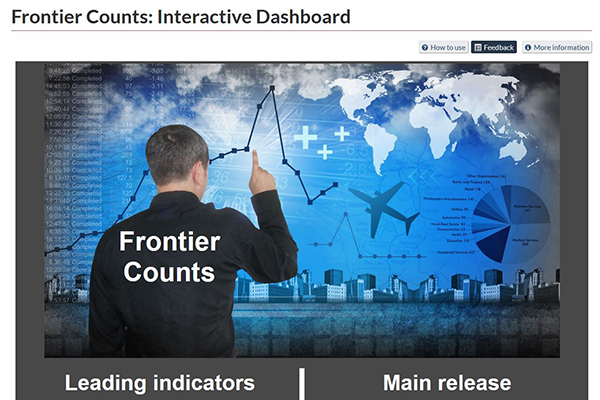
Frontier Counts: Interactive Dashboard
International travel: Advance Information
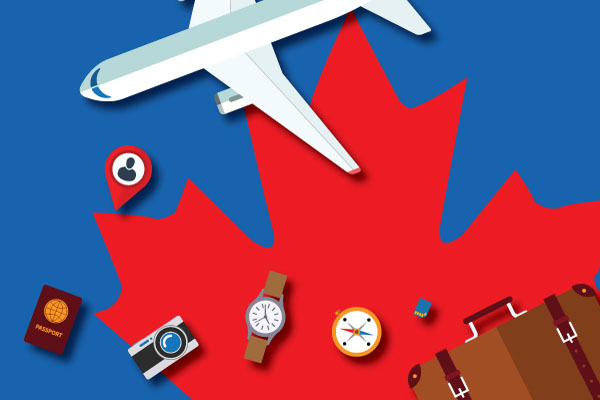
Crossing the border during the pandemic: 2020 in review

Measuring private short-term accommodation in Canada
Key indicators | All indicators
Changing any selection will automatically update the page content.
Selected geographical area: Canada
- Tourism share of gross domestic product - Canada (Fourth quarter 2023) 1.58%
Latest releases
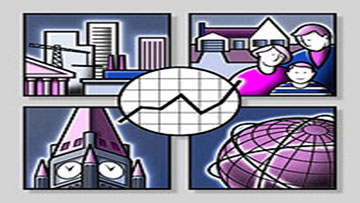
View the latest Daily releases on the subject of travel and tourism .
Air passenger traffic and aircraft itinerant movements at Canadian airports
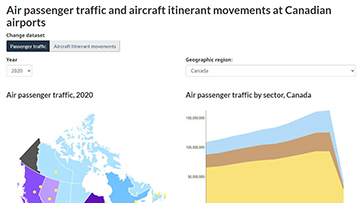
The interactive Dashboard for Air Travel is based on estimates from the Airport Activity Survey and the Aircraft Movement Statistics Survey. The Airport Activity Survey collects data on passengers enplaned and deplaned and cargo loaded and unloaded at Canadian airports. The Aircraft Movement Statistics Survey collects data on aircraft movements in Canada. Transportation Statistics: Interactive Dashboard
Canadian Tourism Activity Tracker
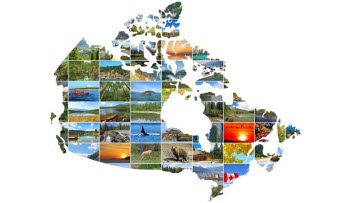
The Canadian Tourism Activity Tracker was an experimental product designed in 2021 to assess recovery of tourism activity in Canada. As currently designed, the Tracker has fulfilled this purpose and will no longer be updated after the December 2022 release.
About the Tourism Statistics Program
The Tourism Statistics Program produces detailed statistics on travellers travelling to, from and within Canada, as well as information on travellers' characteristics and spending. The program also provides information to the Canadian System of Macroeconomic Accounts which produces data on travel and tourism expenditures, employment and gross domestic product.
- Destination Canada
- Tourism HR Canada
Provincial and territorial tourism departments
- Government of Canada
- Newfoundland and Labrador
- Prince Edward Island
- Nova Scotia
- New Brunswick
- Saskatchewan
- British Columbia
- Northwest Territories
What do you want to see on this page? Fill out our feedback form to let us know.
This browser is not supported. Please use another browser to view this site.
- Credit cards
- Newcomers to Canada
- ETF finder tool
- Best crypto
- Couch potato
- Fixed rates
- Variable rates
- Mortgage payment calculator
- Income property
- Renovations + maintenance
- Compound interest calculator
- Household finances
- Find a Qualified Advisor Tool
- Monthly budget template
- ETF Finder Tool
- Student money
- First-time home buyers
- A Guide For New Immigrants
- Best dividend stocks
- Best online brokers
- Where to buy real estate
- Best robo-advisors
- Making sense of the markets
Ask a Planner
- A Rich Life
- Interviews + profiles
Retired Money
Advertisement
By Barry Choi on April 25, 2024 Estimated reading time: 5 minutes
Wise card Canada review 2024
This prepaid travel card eliminates foreign exchange charges on your purchases abroad, though the loading fees could irk some travellers

The Wise card is a welcome addition to the services that Wise—formerly TransferWise—offers, but as you’ll quickly learn in this review, the card has a few quirks that will annoy users. That’s not to say that the Wise card is not worth having in your wallet when you travel abroad. You just need to know how the card works in order to keep your transaction fees down.
Is the Wise card a credit card?
Often referred to as the Wise credit card, the Wise card is actually a prepaid card available to residents of Canada and dozens of other countries. To use the card, you must have funds loaded into your Wise account. What makes Wise appealing is that it allows you to hold multiple currencies. That means you could potentially purchase some foreign dollars when the exchange rate is in your favour and then spend it as needed when you’re abroad.
No additional fees apply when making purchases with a currency you currently hold in your Wise account. However, if you don’t hold the currency in which you’re making a purchase, Wise will automatically deduct the funds from the currency in your account with the lowest conversion fees. That said, when making a purchase abroad and given the option to be charged in the local currency or Canadian dollars, always choose the local currency for the best exchange rate.
The Wise card also allows you to withdraw money from ATMs while abroad. Think of it as a Wise debit card, since you can use it for purchases and ATM withdrawals. Oddly enough, you can’t use the card within Canada.
The first two ATM withdrawals are free, up to a cumulative value of CAD$350 per calendar month. Any additional withdrawals will cost you $1.50 each, and a 1.75% fee will be added to amounts over $350. Also, note that the ATM provider may charge its own fee when you withdraw cash. Wise withdrawal fees and third-party ATM fees count towards your withdrawal limits—so plan accordingly.
How long does it take to get a Wise card ?
You must have a Wise account if you want to apply for a Wise card. The registration process only takes a few minutes and is done completely online. Once your account is active, you need to add funds. Doing so is simple, as you have many options including Interac e-Transfer, direct debit from your bank, and wire transfer.
Each loading method has a fee. Interac e-Transfer typically has the lowest fee, and your money will arrive in about five minutes. How much you’ll pay in fees depends on the currency and how much you’re loading.
To order your Wise card, log into your account and click on Wise Card on the side bar. The physical card will arrive within 14 days, and you also get a digital card you can use immediately. While the digital option is convenient, it won’t help people who are travelling soon and may need ATM access.
Wise card pros and cons
The Wise card is a unique option that many people will naturally be attracted to. That said, you should consider the pros and cons before you open an account.
Wise card pros
- Can hold multiple currencies: This is a convenient option for travellers as they’ll know exactly what they’re paying to exchange money.
- Flexible payments: Even if you don’t currently hold a specific currency in your account, you can still use your card for purchases and ATM withdrawals, as Wise will simply deduct the amount from the currency with the lowest transaction fees in your account.
- No annual fee: There’s no cost to get the card.
- Digital card available: You get a Wise digital card immediately when you request a physical card.
Wise card cons
- Load fees: It’ll cost you money to load the card.
- Not a true no-foreign-transaction-fee card: Although Wise has competitive exchange rates, it still charges a markup to load your card and when converting currencies.
- Withdrawal limits: You get only two ATM withdrawals with a cumulative total of CAD$350 per calendar month without any fees.
- No rewards earned: You don’t get any cash back or points when making purchases.
Alternatives to the Wise card
The Wise card, introduced in Canada at the end of 2021, is clearly designed to compete against cards with no foreign transaction fees. Even though Wise offers a good card, there are arguably better Canadian options. Both Wealthsimple and EQ Bank offer prepaid cards you can order if you’re an account holder.
The Wealthsimple and EQ Bank cards both have no annual fee, but what sets them apart from the Wise card is that they both use the exchange rate set by Visa, which is a bit lower than what Wise charges. Plus, Wealthsimple and EQ Bank don’t charge a fee to load funds into your account, so you’re coming out ahead right from the start. They also have no-fee ATM withdrawals.
Beyond prepaid cards, Wise is also competing with no foreign transaction fee credit cards , where competition is fierce. Even though the Scotiabank Passport Visa Infinite has an annual fee of $150, it’s often waived for the first year. In addition, you get great benefits such as six annual airport lounge passes and comprehensive travel insurance. Plus, this is a traditional credit card, so you don’t need to worry about preloading funds before departure.
Scotiabank Passport Visa Infinite
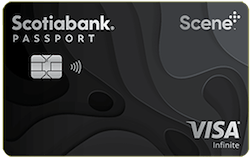
- Annual fee: $150
- Earn rate : 3 Scene+ points per $1 spent at Sobeys stores; 2 points per $1 on groceries, dining, entertainment and transit; 1 point per $1 on everything else. Plus, pay no FX fees
- Welcome offer: earn up to $1,300 in value in the first 12 months, including up to 40,000 bonus Scene+ points and first year annual fee waived. Offer ends July 1, 2024.
- Annual income requirement: Personal income of $60,000 or household income of $100,000
- Point value: 1 Scene+ point = $0.01 when redeemed for travel, store purchases and food and drink at Cineplex and Scene partners
- Recommended credit score for approval : 700 or higher
- Interest rates: 20.99% on purchases, 22.99% on cash advances, 22.99% on balance transfers
Is the Wise card any good?
Although the Wise card has some quirks that will annoy people who are looking to minimize their foreign transaction fees, the card does have enough positives to justify being in your wallet. You can easily add funds, and the ability to easily hold multiple currencies is incredibly convenient. That said, there are credit cards without foreign transaction fees that come with generous benefits and rewards that may be more appealing to some.
More on travel :
- Compare your travel card options
- The best chequing accounts in Canada for 2024
- What it costs to see Taylor Swift perform abroad
- Best no foreign transaction fee credit cards
- Best credit cards for airport lounge access
Share this article Share on Facebook Share on Twitter Share on Linkedin Share on Reddit Share on Email
Comments Cancel reply
Your email address will not be published. Required fields are marked *
Related Articles

PepsiCo beats Q1 revenue forecasts as price increases
Food and beverage company expects organic growth of 4% in 2024

GM reports first-quarter earnings for 2024
General Motors reports strong first-quarter profits as prices help offset small U.S. sales dip.

My MoneySense
“My take on debt has changed over time”: Eva Wong on saving and investing
Borrowell’s co-founder and COO on the best and worst financial advice, and the biggest money lesson she’s learned from...

How to double your CPP income
New analysis from the National Institute on Ageing makes a strong case for delaying Canada Pension Plan payments to...

“Should I delay my CPP if I’m not contributing to it?”
You can still benefit from deferring Canada Pension Plan payments with less than maximum contributions.

A closer look at “Sell in May and go away”
A pattern in the markets works—until it doesn’t. Investors will be better off focusing on the fundamentals.

“Our parents just passed. What do we do about their estate?”
Two siblings’ complex inheritance provides a case study in minimizing death taxes.

Real Estate
How it works: Capital gains tax on the sale of a property
When is capital gains tax payable on the sale of property? And at what rate are capital gains taxed?...

How to beat inflation: First, tackle lifestyle creep
Managing lifestyle creep is challenging financially and psychologically, especially with inflation. Expert strategies keep day-to-day spending in check.

When is bitcoin halving in 2024?
Bitcoin’s next “halving” is right around the corner. Here’s what you need to know.
- Your Profile
- Your Subscriptions
- Support Local News
- Payment History
- Sign up for Daily Headlines
- Hospitality, Marketing & Tourism
Spending in Canada on tourism rises thanks to domestic tourists

- Share by Email
- Share on Facebook
- Share on LinkedIn
- Share via Text Message
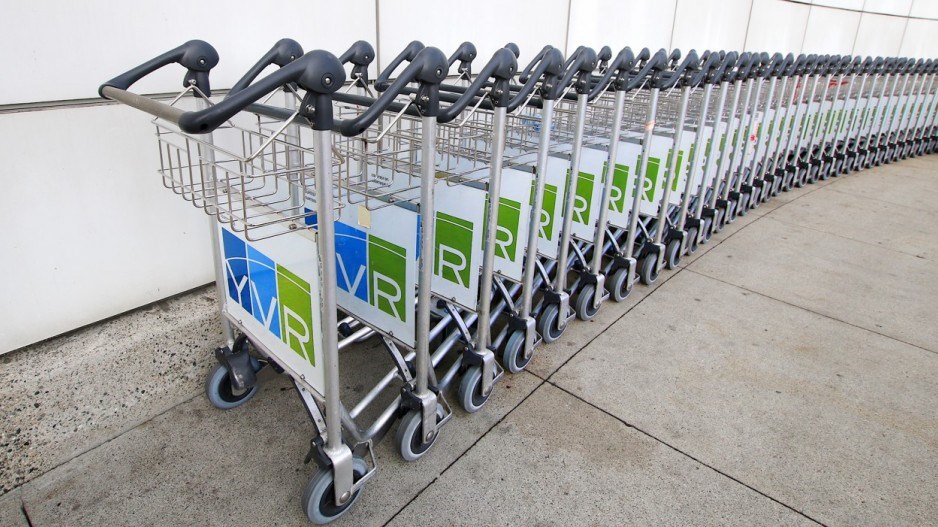
Spending on tourism in Canada in the first quarter of 2023 rose despite international visitors spending less than they had in the preceding three months.
Statistics Canada data released today show total tourism spending in Canada in the first quarter of 2023 was $20.791 billion in standardized 2012 dollars.
That was up more than 2.6 per cent from $20.261 billion in the fourth quarter of 2022, and up more than 33.3 per cent from $15.592 billion in the first three months of 2022.
Statistics Canada includes spending on items such as transportation, accommodation, food and beverages, recreation and entertainment and travel agency fees as being tourism spending .
The tourism-spending increase in sequential quarters came entirely from Canadians travelling domestically.
Canadians spent $15.59 billion on tourism in their own country in the first quarter of this year, up more than 3.5 per cent from the previous three months. In contrast, non-residents spent $5.201 billion on tourism in Canada in the first quarter of this year, down marginally from the $5.205 billion that they spent in the last quarter of 2022.
The result was that the share overall tourism spending by visitors from outside the country fell to 25 per cent, from 25.7 per cent in the fourth quarter of 2022.
The international-visitor share of overall tourism spending had been higher pre-pandemic.
In the first quarter of 2019, foreign visitors were responsible for 26.6 per cent of overall tourism spending in Canada. In the first quarter of 2018, that share was 27.2 per cent.
The share of tourism spending by international visitors then plunged to a low of 1.5 per cent in the third quarter of 2020 , and it had been coming back strongly.
In the first quarter of 2022, for example, foreign visitors represented 14.4 per cent of all tourism spending in Canada, according to Statistics Canada.
The most recent Statistics Canada data for international visitors was released June 23, and it showed a significant increase in non-resident visitors entering Canada through B.C. on a year-over-year basis in April. The 464,041 such visitors in April were 59.6-per-cent more than the 290,812 international visitors who entered Canada through B.C. in the same month in 2022.
The number of non-resident visitors entering Canada through B.C. in April 2019, however, was 529,609 – up 14.1 per cent from April.
The biggest challenge in regaining the number of international visitors that B.C. saw pre-pandemic is for Chinese airlines to return to flying into Vancouver International Airport .
Pre-pandemic, eight airlines flew a total of 53 non-stop flights between YVR and mainland China. Four airlines now fly seven weekly non-stop flights to mainland China out of YVR.
Air Canada flies four times per week to Shanghai. Three Chinese carriers operating out of YVR include Xiamen Air, Hainan Airlines and Sichuan Airlines.
The carriers that have yet to restart flights are: •Air China; •China Southern; •China Eastern; and •Beijing Capital Airlines.
[email protected]
twitter.com/GlenKorstrom
This has been shared 0 times
More hospitality, marketing & tourism.

Canada unveils more taxes on rich, EV tax credits in federal budget
- Medium Text
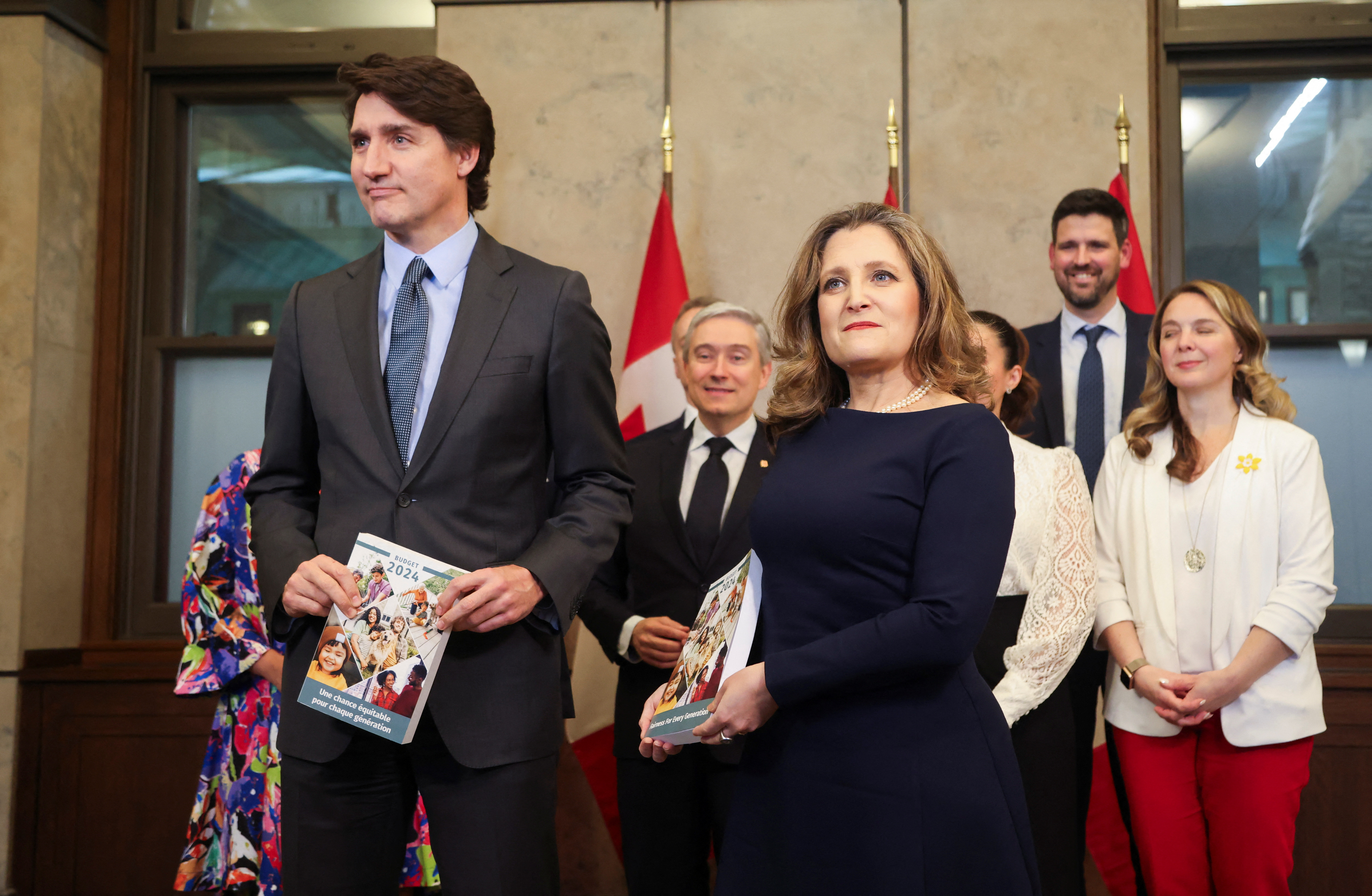
Sign up here.
Reporting by David Ljunggren, Divya Rajagopal Editing by Denny Thomas
Our Standards: The Thomson Reuters Trust Principles. New Tab , opens new tab
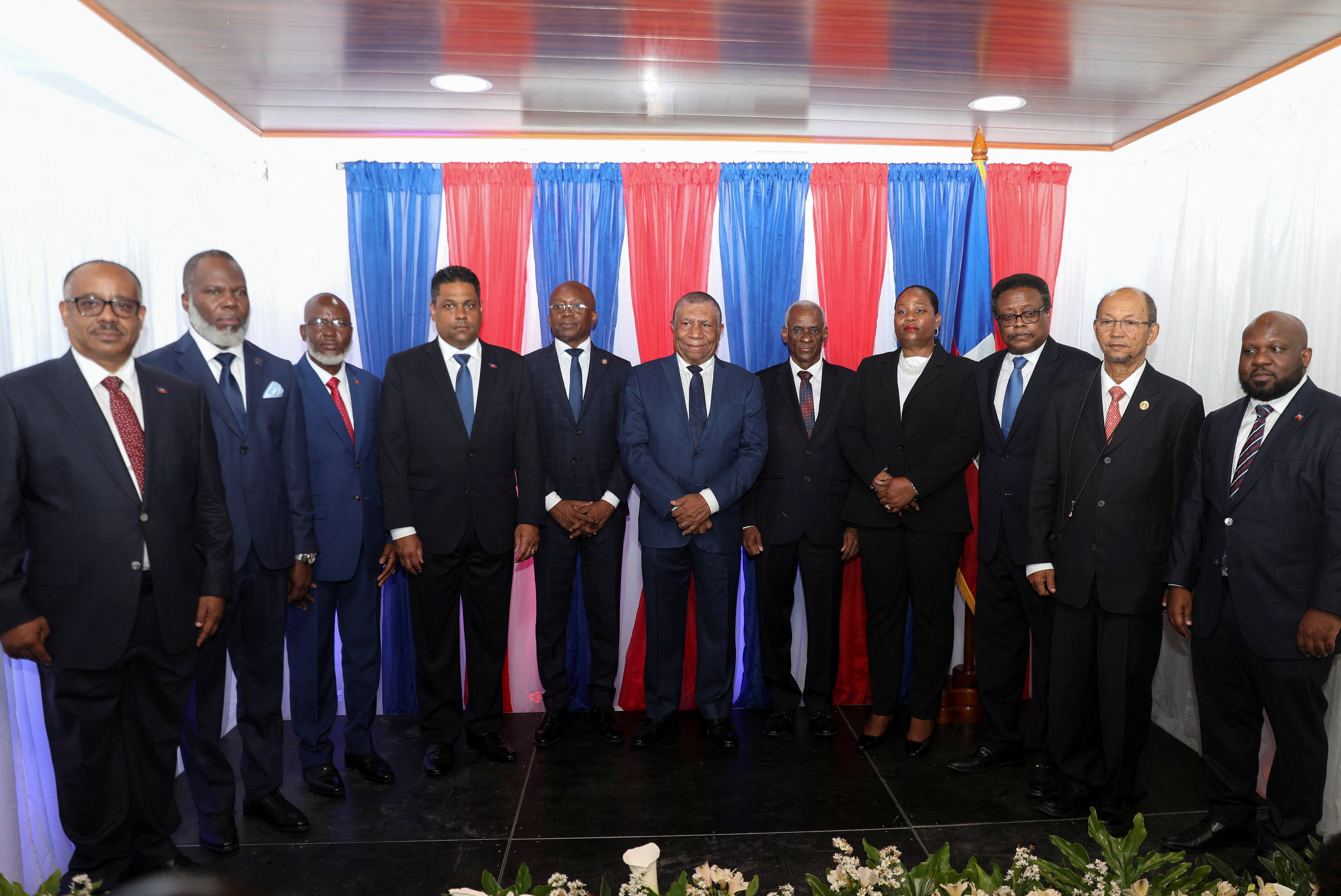
World Chevron
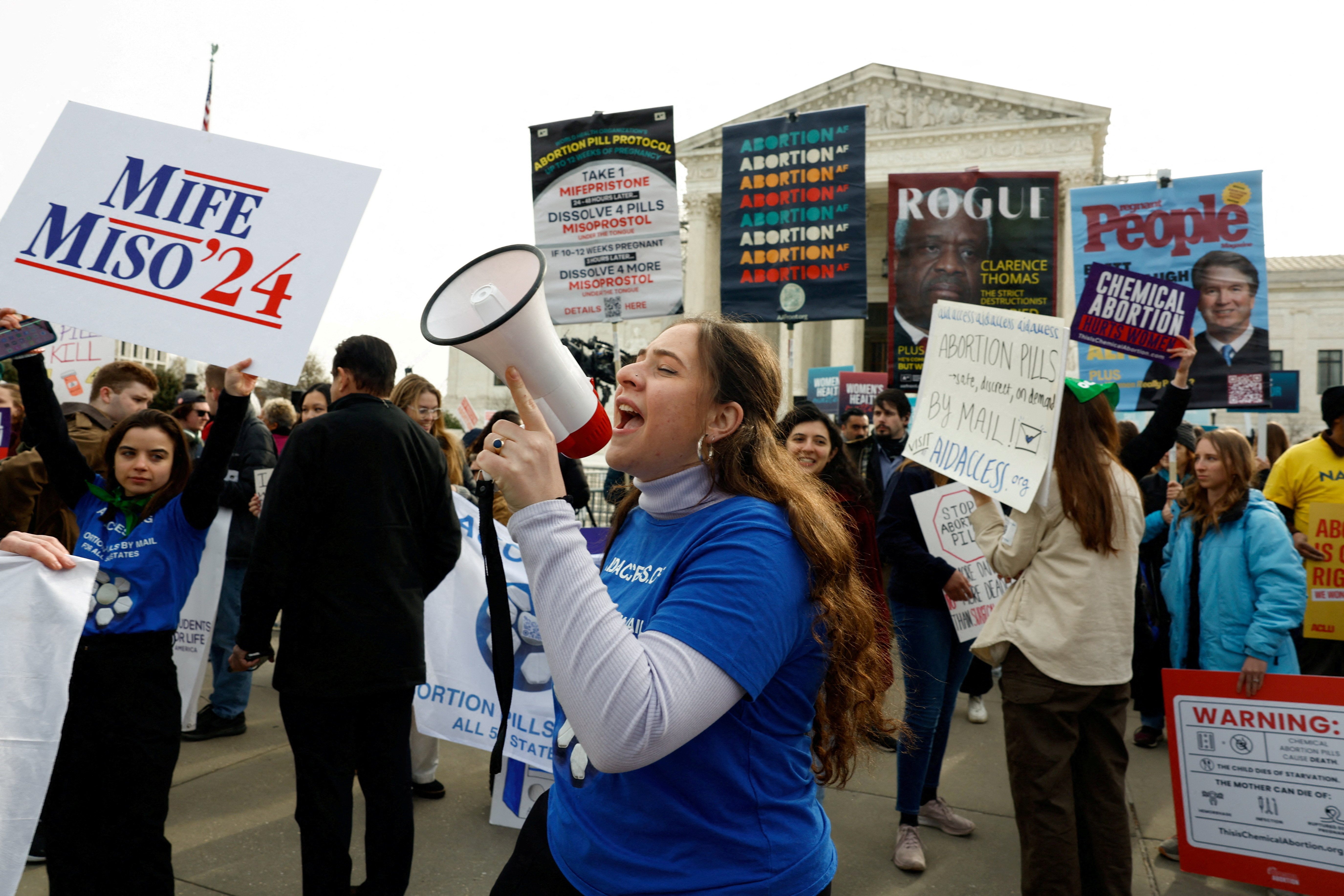
US states sue over agency rule on protections for workers who get abortions
A group of Republican-led U.S. states filed a lawsuit on Thursday seeking to block a federal rule that gives workers who had abortions the same legal protections as workers who are pregnant or recently gave birth.

U.S. troops have begun construction of a maritime pier off the coast of Gaza that aims to speed the flow of humanitarian aid into the enclave when it becomes operational in May, the Pentagon said on Thursday.
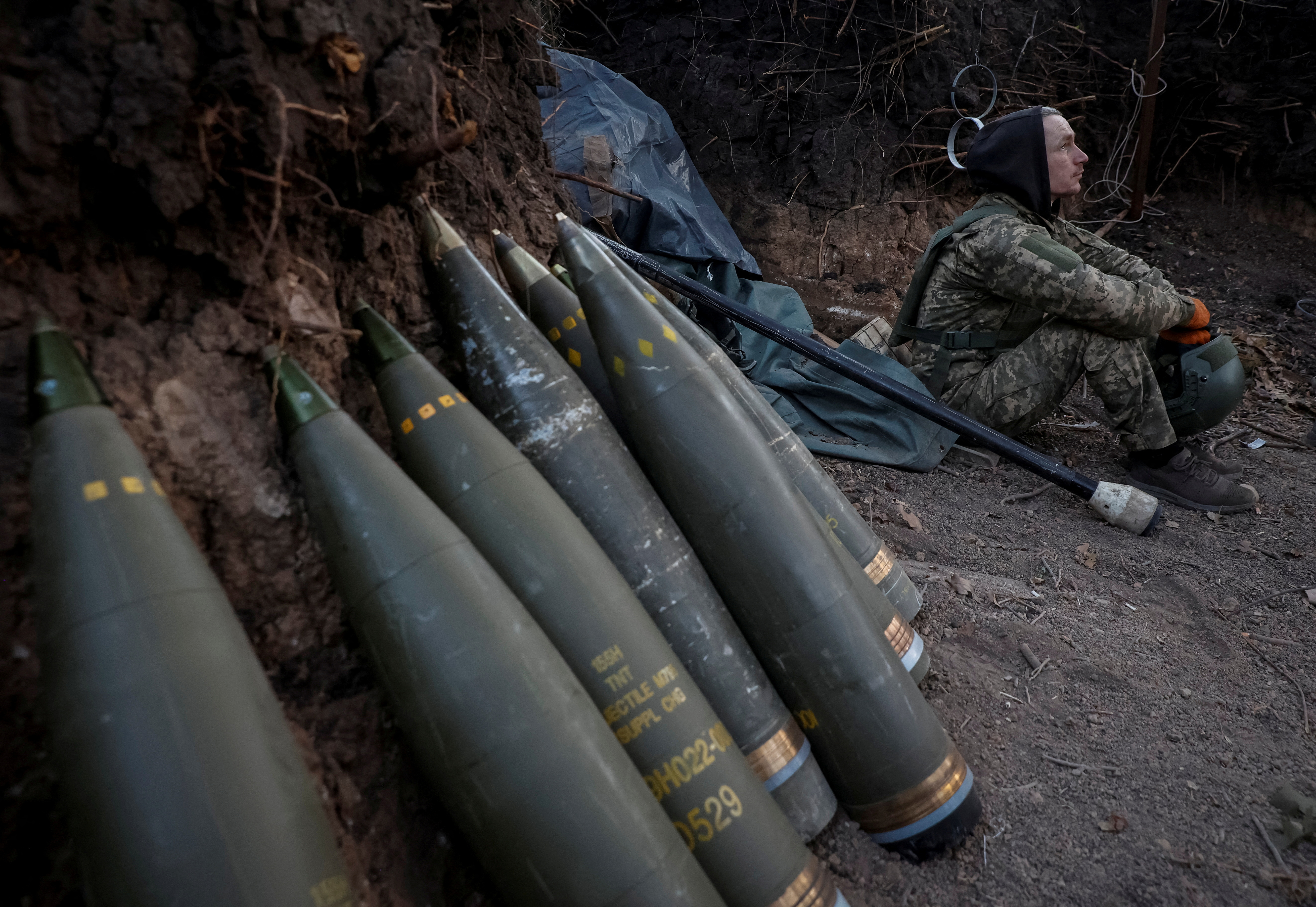
Home Toggle navigation FR Toggle Search Search the site Search About us About us Head office Regional offices History Archives Background materials Photos and videos Accessibility Contact us Corporate governance Board of Directors Governing Council and Senior Management Governance documents Educational resources The Economy, Plain and Simple Explainers Financial education resources Careers Take a central role at the Bank of Canada with our current opportunities and scholarships.
Introduction of one-month treasury bill
In line with the announcement in the federal 2024 Budget , the Government of Canada will be introducing a temporary one-month treasury bill. The first one-month treasury bill auction will occur on 7 May 2024.
The objective of the one-month treasury bill is to support the Canadian money market’s orderly transition away from Bankers’ Acceptances (BAs).The one-month treasury bill will act as a partial substitute for investors of one-month BAs while private sector one-month investment alternatives are expanded and/or introduced.
This new treasury bill tenor is being introduced as a temporary program for one year. If one-month treasury bill auctions indicate demand is weak or it is apparent that the program is not meeting its intended objective, the government may reduce auction sizes or discontinue the program before one year. Conversely, the government may choose to extend the program or make the one-month treasury bill permanent if demand proves robust. Any decision regarding the future of the program will be communicated to market participants well in advance.
Operationally, one-month treasury bill auctions will take place on a bi-weekly basis, at 12:00 pm on the same day (Tuesdays) as Canada’s existing treasury bill auctions. Auction sizes are expected to be adjusted to reflect demand conditions. One-month treasury bill auctions will be announced through a separate Call for Tender and will be subject to the existing Terms and Conditions for treasury bill auctions. There will be no changes to the Terms and Conditions for the three, six, and twelve-month treasury bill auctions, however, starting on 7 May all treasury bill sectors’ Call for Tenders and Pre-Call for Tenders will occur at 1:00 pm on their relevant days (currently 10:40 am).
For further information, please contact:
We use cookies to help us keep improving this website.
Language selection
- Français fr
Government of Canada releases new Federal Tourism Growth Strategy
From: Innovation, Science and Economic Development Canada
News release
New strategy will foster growth and competitiveness of the tourism industry
July 4, 2023 – Niagara, Ontario
Tourism powers the Canadian economy, creating good jobs in every region of the country, from rural and remote communities to the largest cities. Tourism is also highly inclusive. Compared to other sectors, it employs a higher proportion of women, youth and newcomers. Canada has something for everyone: breathtaking outdoor adventures, vibrant cities, unique Indigenous tourism experiences and so much more. With the renewed demand for travel, there is now a once-in-a-generation opportunity for Canada’s visitor economy to push past reviving all the way to thriving and successfully compete on the global stage. The Government of Canada is focused on seizing this opportunity to help the tourism industry reach new heights for generations to come.
Today, the Honourable Randy Boissonnault, Minister of Tourism and Associate Minister of Finance, unveiled the new Federal Tourism Growth Strategy , entitled Canada 365: Welcoming the world. Every day. He was accompanied by Vance Badawey, Parliamentary Secretary to the Minister of Indigenous Services and Member of Parliament for Niagara Centre; Chris Bittle, Parliamentary Secretary to the Minister of Canadian Heritage and Member of Parliament for St. Catharines; Marsha Walden, President and CEO of Destination Canada; Beth Potter, President and CEO of the Tourism Industry Association of Canada; Keith Henry, President and CEO of the Indigenous Tourism Association of Canada; and Susie Grynol, President and CEO of the Hotel Association of Canada.
The new strategy will unleash the full potential of Canadian tourism and cement Canada as a top global destination through the following five priorities:
- Investing in Canada’s tourism assets
- Embracing recreation and the great outdoors
- Partnering to grow Indigenous tourism
- Attracting more international events
- Improving coordination through a federal ministerial council
The strategy is informed by months of consultations with, among others, tourism businesses, industry associations, other orders of government, Indigenous partners and destination marketing organizations. Their valuable insight into the challenges and opportunities of the Canadian tourism sector have shaped the strategy and helped set the stage for the long-term growth of Canada’s visitor economy.
“Now is the time to come together and combine forces—across all orders of government and throughout the industry—to power the economic engine that is tourism. With the new Federal Tourism Growth Strategy, we will build on our strengths and propel the sector to new heights. Canada has what the world wants, and we look forward to welcoming visitors, 365 days a year.” – The Honourable Randy Boissonnault, Minister of Tourism and Associate Minister of Finance
“We are Niagara—tourism is in our blood. We understand the importance of this industry to the people of Niagara and to the employees, business owners and organizations that thrive because of our region’s natural gifts and its existence as a major North American destination for travellers from around the world. This new Federal Tourism Growth Strategy will help drive the success of our tourism sector and ensure it continues to contribute to the economic prosperity of Niagara for decades to come.” – Vance Badawey, Parliamentary Secretary to the Minister of Indigenous Services and Member of Parliament for Niagara Centre
“Every year, our tourism sector brings people from around the world to our country and specifically to our region. We have a lot to offer, whether you have been to Canada a dozen times or are planning your first trip. This strategy demonstrates the strength of our sector and lays the foundation for its future success. With this Federal Tourism Growth Strategy, Niagara will continue to be ready to welcome the world, each and every day.” – Chris Bittle, Parliamentary Secretary to the Minister of Canadian Heritage and Member of Parliament for St. Catharines
“Today’s announcement caps more than a year of dialogue with key stakeholders on all facets of the tourism sector across this great country. TIAC welcomes the new Federal Tourism Growth Strategy and applauds the government’s recognition that tourism is a key driver of Canada’s economy, creating close to two million jobs in large and small communities and being highly inclusive. We embrace the opportunity to continue working, hand-in-hand, with the Minister of Tourism, other Cabinet ministers and federal officials on the strategic path toward full industry recovery, growth and sustainability.” – Beth Potter, President and CEO, Tourism Industry Association of Canada
“Indigenous tourism has enormous potential and is reconciliation in action. Today ITAC is delighted to see Indigenous tourism be a key pillar of the Federal Tourism Growth Strategy, and we support the growth of Indigenous tourism through coordinated investments from the Government of Canada that will help make Canada the global leader in Indigenous tourism by 2030.” – Keith Henry, President and CEO, Indigenous Tourism Association of Canada
“The Hotel Association of Canada enthusiastically welcomes today’s announcement. Investing in Canada’s assets and attracting more international events will support the hospitality industry, which will in turn sustain a thriving visitor economy.” – Susie Grynol, President and CEO, Hotel Association of Canada
“We welcome the launch of the new Federal Tourism Growth Strategy, which will help lay the foundations for our sector’s future growth, investment and competitiveness. Along with our industry partners from coast to coast to coast, we have worked together to make united recommendations on this strategy, and we look forward to working closely with the Minister as together we transform tourism to be more competitive, successful, and resilient.” – Marsha Walden, President and CEO, Destination Canada
“As a key component of our country’s tourism product, the restaurant industry is very pleased to see the launch of a new tourism strategy for Canada. Our industry is still in recovery mode following the pandemic, and this strategy will bring more visitors to our great country and in turn to our restaurants. We thank Minister Boissonnault for driving this strategy to completion.” – Kelly Higginson, President and CEO, Restaurants Canada.
Quick facts
Tourism is a key contributor to Canada’s economy. In 2022, the sector supported approximately 623,375 direct jobs and 1.9 million total jobs.
In 2022, tourism contributed nearly $38 billion to Canada’s GDP, generated close to $94 billion in revenue for businesses, and accounted for almost 13% of service exports.
In 2022, there were 218,041 businesses in the tourism sector.
In 2022, non-resident tourism spending rose by almost 321% compared to the previous year, recovering to over 70% of the 2019 peak of $28.6 billion.
Destination Canada forecasts that tourism spending will fully recover by 2024 and international visitation will fully recover by 2026.
In 2022, youth made up about one third (33.2%) of tourism workers, compared to the total economy average of 13.3%.
In 2022, immigrants made up 29.2% of the tourism labour force, slightly higher than the total economy average of 27.6%.
Associated links
- The new Federal Tourism Growth Strategy
- The Canadian tourism sector
Farrah-Lilia Kerkadi Press Secretary Office of the Minister of Tourism and Associate Minister of Finance 343-553-6203 [email protected]
Media Relations Innovation, Science and Economic Development Canada [email protected]
Stay connected
Find more services and information at Canada.ca/ISED .
Follow Innovation, Science and Economic Development Canada on LinkedIn .
Follow @cdntourism on social media: Twitter , Instagram .
Follow Canada Business on social media: Twitter , Facebook , Instagram .
Page details
Canada Revenue Agency gets more teeth to catch potential tax cheats
Cra will get more information about crypto transactions in canada.

Social Sharing
The federal government is cracking down on potential tax cheats by introducing new measures to track cryptocurrency transactions and giving the Canada Revenue Agency more teeth to penalize taxpayers who refuse to disclose information it wants.
The budget tabled Tuesday also includes provisions to hold tax planners who help clients engage in tax evasion and aggressive tax avoidance as well as shed more light on donations to certain foreign charities registered in Canada and how that money was used.
In recent years, the CRA has come under fire for its track record in catching and prosecuting tax cheats. While the agency has successfully prosecuted small cases, critics say it hasn't done enough to catch larger cases of tax evasion and aggressive tax avoidance.
At the same time, governments around the world have been taking steps to share information with other jurisdictions in a bid to catch those who move money between countries or who use newer technologies to avoid taxes.
In her budget Tuesday, Finance Minister Chrystia Freeland moved to implement new international rules requiring more transparency in cryptocurrency transactions.

What's in the new federal budget?
"Just as crypto-assets pose financial risks to middle-class Canadians, the rapid growth of crypto-asset markets poses significant risks of tax evasion," said the budget.
"Regulation and the international exchange of tax information must keep pace with tax evasion threats in order to ensure a fair tax system."
Starting in 2026, Canada will implement the Crypto-Asset Reporting Framework — developed by the Organisation for Economic Co-operation and Development — to require crypto-asset service providers located in Canada or which do business in Canada to begin annual reporting to the CRA.
Under the provisions of the budget, those service providers will have to reveal information on each customer and each crypto-asset including exchanges between the crypto-asset and government-issued currencies like the Canadian dollar, exchanges for other crypto-assets and transfers of crypto-assets such as when crypto-assets are used to purchase goods or services worth more than $50,000 US.
Name, address, date of birth
Crypto-asset service providers in Canada would also be obliged to provide the CRA with information on each of their customers such as their name, address, date of birth and what jurisdiction they live in.
The requirement will apply to transactions starting in 2026 and the first exchange of information collected in Canada with other countries will take place in 2027. Under the new reporting system, Canadian authorities are to receive information about transactions involving Canadian residents that took place using crypto-asset service providers in other countries.
The budget also provides $51.6 million to the CRA over five years to implement and administer the new reporting system, starting this fiscal year, and $7.3 million per year ongoing.
At the same time, the budget is calling for feedback on whether crypto-backed assets are "appropriate as qualified investments for registered savings plans."
Crypo-assets aren't the only area where the government wants the CRA to get more information.
One tactic sometimes used by those avoiding taxes or re-assessments by the CRA is to delay providing information that the CRA is seeking as long as possible — months or even years.
The current limits on information gathering "impede the effectiveness of the CRA's compliance and enforcement actions," according to the budget.
While the CRA can seek a contempt order from a court, that process can be long and cumbersome.
Provisions in the budget will allow the CRA to issue a "notice of non-compliance" to someone who has failed to provide information it requested. Those who ignore that notice could face a penalty of $50 for each day they fail to comply, to a maximum of $25,000.

If the CRA goes to court and obtains a compliance order for someone to provide information, they could face a penalty of 10 per cent of the aggregate tax payable if tax owing in one year exceeds $50,000.
Similar provisions will apply to a number of other laws including the Underused Housing Tax Act, the Select Luxury Items Tax Act and the excise tax that imposes duties on alcohol, tobacco, cannabis and vaping products.
A separate provision of the budget aims to make clients of tax planners who counsel clients to evade or aggressively avoid taxes more liable for the consequences of their actions. The change would make the client liable for all of the tax debt avoided, including any portion retained by the tax planner.
The CRA will also get more insight into foreign charities that can receive donations from Canadians because they engage in activities such as humanitarian aid, disaster relief or "activities in the national interest of Canada."
- Most CRA convictions cited by government are not for offshore tax evasion
The time period for foreign charities to qualify for Canadian donations will be extended from two years to three years. However, they will now have to submit an annual return that includes "the total amount of receipts issued to Canadian donors, the total amount of gifts received from qualified donees and information on how those funds were used" — all of which would be made public.
Three foreign charities are currently registered with the CRA — the Aga Khan Foundation, the Council for Canadian American Relations and the Canada-U.K. Foundation.
- Freeland's new federal budget hikes taxes on the rich to cover billions in new spending
Katrina Miller, executive director of Canadians for Tax Fairness, said her group welcomes any strengthening of anti-avoidance law, including the new rules for tax planners who counsel tax evasion and aggressive tax avoidance plans.
She said her group is looking forward to Parliament passing Bill C-59, which includes an update and tightening of Canada's General Anti Avoidance Rules (GAAR).
"Canada loses potentially tens of billions [of dollars] every year due to dubious tax avoidance," Miller said. "Stronger rules can empower the CRA to go after tax cheats and win."
Miller said it's also good to see Canada updating its tax information rules to include cryptocurrency companies.
"As new sectors of the economy grow, it is necessary to update our domestic and international tax and reporting frameworks so as to not fall behind," she said.
ABOUT THE AUTHOR

Senior reporter
Award-winning reporter Elizabeth Thompson covers Parliament Hill. A veteran of the Montreal Gazette, Sun Media and iPolitics, she currently works with the CBC's Ottawa bureau, specializing in investigative reporting and data journalism. She can be reached at: [email protected].
- Follow Elizabeth Thompson on Twitter
Related Stories
- More than two years later, no Canadian Panama Papers charges have been filed
- CRA has identified more than $76 million in unpaid taxes from Panama, Paradise papers leaks
- Unexplained wealth order filed against crypto scam co-founder
- Credit Cards
- All Credit Cards
- Find the Credit Card for You
- Best Credit Cards
- Best Rewards Credit Cards
- Best Travel Credit Cards
- Best 0% APR Credit Cards
- Best Balance Transfer Credit Cards
- Best Cash Back Credit Cards
- Best Credit Card Sign-Up Bonuses
- Best Credit Cards to Build Credit
- Best Credit Cards for Online Shopping
- Find the Best Personal Loan for You
- Best Personal Loans
- Best Debt Consolidation Loans
- Best Loans to Refinance Credit Card Debt
- Best Loans with Fast Funding
- Best Small Personal Loans
- Best Large Personal Loans
- Best Personal Loans to Apply Online
- Best Student Loan Refinance
- Best Car Loans
- All Banking
- Find the Savings Account for You
- Best High Yield Savings Accounts
- Best Big Bank Savings Accounts
- Best Big Bank Checking Accounts
- Best No Fee Checking Accounts
- No Overdraft Fee Checking Accounts
- Best Checking Account Bonuses
- Best Money Market Accounts
- Best Credit Unions
- All Mortgages
- Best Mortgages
- Best Mortgages for Small Down Payment
- Best Mortgages for No Down Payment
- Best Mortgages for Average Credit Score
- Best Mortgages No Origination Fee
- Adjustable Rate Mortgages
- Affording a Mortgage
- All Insurance
- Best Life Insurance
- Best Life Insurance for Seniors
- Best Homeowners Insurance
- Best Renters Insurance
- Best Car Insurance
- Best Pet Insurance
- Best Boat Insurance
- Best Motorcycle Insurance
- Travel Insurance
- Event Ticket Insurance
- Small Business
- All Small Business
- Best Small Business Savings Accounts
- Best Small Business Checking Accounts
- Best Credit Cards for Small Business
- Best Small Business Loans
- Best Tax Software for Small Business
- Personal Finance
- All Personal Finance
- Best Budgeting Apps
- Best Expense Tracker Apps
- Best Money Transfer Apps
- Best Resale Apps and Sites
- Buy Now Pay Later (BNPL) Apps
- Best Debt Relief
- Credit Monitoring
- All Credit Monitoring
- Best Credit Monitoring Services
- Best Identity Theft Protection
- How to Boost Your Credit Score
- Best Credit Repair Companies
- Filing For Free
- Best Tax Software
- Best Tax Software for Small Businesses
- Tax Refunds
- Tax Brackets
- Taxes By State
- Tax Payment Plans
- Help for Low Credit Scores
- All Help for Low Credit Scores
- Best Credit Cards for Bad Credit
- Best Personal Loans for Bad Credit
- Best Debt Consolidation Loans for Bad Credit
- Personal Loans if You Don't Have Credit
- Best Credit Cards for Building Credit
- Personal Loans for 580 Credit Score Lower
- Personal Loans for 670 Credit Score or Lower
- Best Mortgages for Bad Credit
- Best Hardship Loans
- All Investing
- Best IRA Accounts
- Best Roth IRA Accounts
- Best Investing Apps
- Best Free Stock Trading Platforms
- Best Robo-Advisors
- Index Funds
- Mutual Funds
- Home & Kitchen
- Gift Guides
- Deals & Sales
- Sign up for the CNBC Select Newsletter
- Subscribe to CNBC PRO
- Privacy Policy
- Your Privacy Choices
- Terms Of Service
- CNBC Sitemap
Follow Select
Our top picks of timely offers from our partners

Find the best credit card for you
Here are the 3 best chase balance transfer credit cards of 2024, save money with these chase credit cards that offer 0% introductory aprs on balance transfers..

Credit card interest rates are often higher than other financial products like personal loans or mortgages so it's best to pay off your credit card balance in full every month . However, that isn't always possible so many people may wind up with high-interest credit card debt. In these situations, taking advantage of a 0% balance transfer offer can reduce the interest you pay and help you pay off your credit card debt more quickly.
Chase is known for issuing some top travel credit cards , but it also has several cards that offer an intro 0% APR for balance transfers. Consider these Chase balance transfer credit cards if you're hunting for a balance transfer offer. (See our methodology for information on how we chose the best Chase balance transfer credit cards).
Best Chase balance transfer credit cards
- Best for long intro APR: Chase Slate Edge℠
- Best for cash back: Chase Freedom Unlimited®
- Best for rotating bonus categories: Chase Freedom Flex℠
Best for long intro APR
Chase slate edge℠, welcome offer.
Get an automatic review for a credit limit increase when you pay on time and spend $500 in your first six months.
0% for 18 months from account opening on purchases and balance transfers
Regular APR
20.49% - 29.24% variable
Balance transfer fee
Intro fee of either $5 or 3% of the amount of each transfer, whichever is greater, on transfers made within 60 days of account opening. After that, either $5 or 5% of the amount of each transfer, whichever is greater.
Foreign transaction fee
Credit needed.
Excellent/Good
Member FDIC. Terms apply. Information about the Chase Slate Edge℠ has been collected independently by Select and has not been reviewed or provided by the issuer of the card prior to publication.
- No annual fee
- Lower your interest rate by 2% each year: Automatically be considered for an APR reduction when you pay on time, and spend at least $1,000 on your card by your next account anniversary
- 3% foreign transaction fee
- No rewards program
Who's this for? The Chase Slate Edge℠ does one thing, and it does it well — reduce the interest you pay. Its longer-than-usual introductory APR offer makes it ideal for those seeking more time to pay off their balance.
Balance transfer offer : New cardholders are eligible for an intro 0% APR on eligible balance transfers and purchases for 18 months from account opening, then a 20.49% to 29.24% variable APR applies. This is one of the longest intro APR offers available and is especially useful since it applies to purchases, too.
An intro balance transfer fee of either $5 or 3% of the amount of each transfer (whichever is higher) applies to transfers completed in the first 60 days of account opening. After that, the balance transfer fee is $5 or 5% of the amount of each transfer (whichever is higher).
[ Jump to more details ]
Best for cash back
Chase freedom unlimited®.
Enjoy 4.5% cash back on drugstore purchases and dining at restaurants, including takeout and eligible delivery services, 6.5% cash back on travel purchased through Chase Travel, our premier rewards program that lets you redeem rewards for cash back, travel, gift cards and more; and 3% cash back on all other purchases (on up to $20,000 spent in the first year). After your first year or $20,000 spent, enjoy 5% cash back on travel purchased through Chase Travel, 3% cash back on drugstore purchases and dining at restaurants, including takeout and eligible delivery service, and unlimited 1.5% cash back on all other purchases.
Welcome bonus
INTRO OFFER: Earn an additional 1.5% cash back on everything you buy (on up to $20,000 spent in the first year) - worth up to $300 cash back!
0% for the first 15 months from account opening on purchases and balance transfers
3% of each transaction in U.S. dollars
Member FDIC. Terms apply.
Read our Chase Freedom Unlimited® review.
- Rewards can be transferred to a Chase Ultimate Rewards card
- Generous welcome bonus
- 3% fee charged on foreign transactions
Who's this for? The Chase Freedom Unlimited® is geared toward those who want to earn cash back on their everyday spending and still want access to a helpful intro APR offer.
Balance transfer offer : New card members receive an intro 0% APR for purchases and balance transfer for the first 15 months, after that a variable 20.49% to 29.24% APR applies. For the first 60 days of account opening, there's an intro balance transfer fee of 3% of the amount of each transfer ($5 minimum). After that, a standard balance transfer fee of $5 or 5% of the amount of each transfer applies, whichever is greater.
Best for rotating bonus categories
Chase freedom flex℠.
5% cash back on up to $1,500 in combined purchases in bonus categories each quarter you activate (then 1%), 5% cash back on travel booked through the Chase Ultimate Rewards®, 3% on drugstore purchases and on dining (including takeout and eligible delivery services), 1% cash back on all other purchases
Earn a $200 bonus after you spend $500 on purchases in the first 3 months from account opening.
Member FDIC. Terms apply. Information about the Chase Freedom Flex℠ has been collected independently by Select and has not been reviewed or provided by the issuer of the card prior to publication.
Read our Chase Freedom Flex℠ review.
- Opportunity to earn up to 5% cash back in select categories upon activation
- Bonus categories must be activated each quarter
Who's this for? The Chase Freedom Flex℠ is a great card for anyone who enjoys squeezing the most value out of their credit card thanks to its generous rotating quarterly bonus categories.
Balance transfer offer : New cardholders can take advantage of a 0% intro APR for the first 15 months on purchases and balances transfer, then a 20.49% to 29.24% variable APR applies. An intro balance transfer fee of either $5 or 3% of the amount of each transfer applies to transfers completed in the first 60 days. After that, the standard balance transfer fee is 5% of the amount of each transfer or $5, whichever is greater.
More on our top Chase balance transfer credit cards
The Chase Slate Edge℠ is a no annual fee card with several features that can help you pay less interest, but doesn't earn rewards.
Get an automatic review for a higher credit limit when you pay on time and spend $500 in the first six months.
Notable perks
With the Chase Slate Edge , you are automatically considered for a 2% APR reduction if you pay your monthly bill on time and spend at least $1,000 on the card before your next account anniversary (terms apply). While you'll want a plan to pay off your balance transfer before the interest kicks in, this feature can help you lower your APR compared to what you might pay with other credit cards.
This card's insurance benefits include purchase protection, extended warranty protection, roadside dispatch and rental car collision and theft coverage (secondary in the U.S.).
[ Return to card summary ]
The Chase Freedom Unlimited® is one of CNBC Select's top no-annual-fee cash-back credit cards with a unique intro bonus and a handful of useful benefits to complement its cash-back earnings.
- 6.5% cash back on travel booked through Chase Travel
- 5% back on Lyft rides (through Mar. 31, 2025)
- 4.5% cash back on dining
- 4.5% cash back at drug stores
- 3% cash back on all other purchases (on up to $20,000 spent in the first year)
Earn an additional 1.5% cash back on everything you buy (on up to $20,000 spent in the first year).
Cardholders can earn 5% cash back on Lyft rides through March 2025 and enroll for three complimentary months of DashPass (activate by Dec. 31, 2024). Purchases are also covered by a range of built-in protections like rental car collision damage insurance (secondary in the U.S.), extended warranty coverage, purchase protection and trip cancellation and interruption insurance.
While this is a cash-back credit card , you can boost the value of the rewards you earn by pairing this card with a Chase card that allows points transfers (such as the Chase Sapphire Preferred® Card ). By transferring the rewards you earn to travel partners like World Hyatt, United MileagePlus and Air Canada Aeroplan, you can potentially book luxury hotels and flights for fewer points.
The Chase Freedom Flex℠ packs a punch with generous rewards in bonus categories that change every quarter and an easy-to-earn welcome bonus.
- 5% cash back on the first $1,500 spent in categories that change each quarter, then 1% cash back (activation required)
- 5% cash back on travel booked through Chase Ultimate Rewards®
- 3% cash back on dining
- 3% cash back at drug stores
- 1% cash back on all other purchases
Earn a $200 bonus after spending $500 on purchases in the first three months from account opening.
Cardholders receive discounts and special perks with partners like Lyft and DoorDash. There are also many valuable built-in protections for a no-annual-fee card, including:
- Cell phone insurance
- Rental car insurance (secondary in the U.S.)
- Extended warranty coverage
- Purchase protection
- Trip cancellation and interruption insurance
When you have a Chase card that unlocks the ability to transfer Chase points to hotel and airline partners (like the Chase Sapphire Preferred® Card) , it increases the value of the Freedom Flex. So this isn't only a strong standalone rewards credit card , but it has synergies with other cards.
How to complete a Chase balance transfer
Chase typically charges a balance transfer fee from 3% to 5% with a $5 minimum. Before you complete a balance transfer , be sure the interest you save will outweigh the fee.
There are several ways to do a balance transfer with Chase. One of the best and easiest options is to complete a balance transfer when you apply for a card. When you do this, you'll be able to make the most out of your intro APR because any 0% interest timeframe you qualify for begins when you open the card.
If you want to perform a balance transfer with a Chase card you already have, you'll need to log in to your account and follow these steps:
- Click "Pay & Transfer"
- Then click on the "Transfer" dropdown menu
- Select "Card balance transfers"
You can then select any of your Chase cards from a dropdown menu and see what balance transfer offers are available.
Are Chase balance transfers worth it?
When you make a balance transfer, you'll generally pay a fee of 3% to 5% of the balance. To determine whether a balance transfer is worth it, calculate how much you would save in interest compared to how much you'd pay in transfer fees.
What is one disadvantage of a 0% interest balance transfer card?
Aside from the balance transfer fees, the biggest downside to a balance transfer is you'll have the same amount of credit card debt as before. If you don't have a plan, or the resources, to pay off your debt before the intro APR expires, you'll be stuck paying interest once again.
Do balance transfers hurt your credit?
A balance transfer doesn't directly hurt your credit score and could help improve your credit if you're able to pay down your debt. However, you'll want to keep in mind that your credit score will temporarily dip when you apply for new credit (including a balance transfer card).
Bottom line
The top balance transfer cards Chase issues offer intro APR periods of 15 to 18 months, and these intro APR offers also apply to purchases, making them even more useful. If you're interested in paying less interest , these are some of the best offers available. When you're in credit card debt, your primary focus should be repayment, not earning rewards, but the fact that some of the cards on this list earn rewards is a nice bonus.
Why trust CNBC Select?
At CNBC Select, our mission is to provide our readers with high-quality service journalism and comprehensive consumer advice so they can make informed decisions with their money. Every credit card article is based on rigorous reporting by our team of expert writers and editors with extensive knowledge of credit card products . While CNBC Select earns a commission from affiliate partners on many offers and links, we create all our content without input from our commercial team or any outside third parties, and we pride ourselves on our journalistic standards and ethics. See our methodology for more information on how we choose the best Chase balance transfer credit cards.
Money matters — so make the most of it. Get expert tips, strategies, news and everything else you need to maximize your money, right to your inbox. Sign up here .
Our methodology
To determine which Chase cards are best for balance transfers, CNBC Select analyzed the Chase credit cards with intro APR balance transfer offers. We compared each card on a range of features, including the annual fee, rewards, welcome bonus and balance transfer fee. We also considered additional perks, consumer protections, the application process when available and how easy it is to redeem rewards. However, when you're in credit card debt, your priority should be repayment, so we focused more on the cards that provide consumers with the cheapest ways to pay off their debt rather than the number of rewards they could potentially earn.
Catch up on CNBC Select's in-depth coverage of credit cards , banking and money , and follow us on TikTok , Facebook , Instagram and Twitter to stay up to date.

- AIG Travel Guard insurance review: What you need to know Ana Staples
- Here are the 8 best password managers Ryley Amond
- 5 things to avoid if you’re applying for a mortgage Kelsey Neubauer

IMAGES
VIDEO
COMMENTS
Up to 4.60% APY on savings. $0 account or overdraft fees. Get a $300 bonus with direct deposits of $5,000 or more. Travel rewards with no annual fee. Go to site Terms apply, see rates & fees. 20,000 miles (equal to $200 in travel) after spending $500 in the first 3 months. Earn unlimited 1.25x miles on all purchases.
You can bring unlimited money into Canada but must declare amounts of CAN$ 10,000 or more. Complete the required CBSA form for currency declaration. Research the costs of your Canadian destination for budgeting purposes. Keep some cash on hand, even if using cards for most transactions.
Canada is a massive, stunning country filled with friendly people, diverse cities, and unique landscapes. Spanning over 9,000 kilometers (5,600 miles) from the icy tundra of the Yukon to the rocky beaches of the east coast, the Great White North is a country that has something for everyone. Canada is often skipped over on many round-the-world ...
Any time you enter or leave Canada, you must declare any money or monetary instruments, such as stocks, bond or cheques, you are carrying valued at $10,000 or more. Travelling with $10,000 or more. Taxes. Canadians who live or work abroad or who travel a lot may still have to pay Canadian and provincial or territorial income taxes.
Here's a breakdown of some my favourite attractions in Canada and their respective costs: CN Tower (Toronto): $32 per person. Parliament Hill Tour (Ottawa): FREE. National Gallery of Canada (Ottawa): $15 per person or FREE on Thursday evenings. Banff Gondola (Banff): $43 per person.
The only exception is a maximum $60 worth of " gifts .". Tobacco and liquor products are counted separately, and foreigners can bring a fair bit of both into Canada. The current tobacco limit is quite generous; you can bring up to 200 cigarettes, 50 cigars, and 200 grams of tobacco, if you so choose.
Using a prepaid travel card. Travel cards let you spend Canadian dollars in Canada. This avoids the fee for currency conversion. A travel card lets you hold multiple foreign currencies at a time, which may be helpful if you're visiting the neighbouring United States. If you've transferred your funds to Canadian dollars using a travel money ...
How to declare your money when you enter or leave Canada . If you are carrying CAD$10,000 or more of your own money when entering or leaving Canada, complete this form for individuals and be ready to present it when you travel. If you are carrying money on behalf of someone else, complete this general form and be ready to present it when you ...
In 2020, the number of jobs in tourism dependent industries fell from 2.1M in 2019 to 1.6M. COVID-19 initially took 187,000 jobs in Q1 2020, but hit hardest in the second quarter of 2020 with a loss of 581,000 jobs. The summer had a rebound of 420,000 jobs, bringing Q3 to a total of 1.7M jobs, 20% below the same time the year before.
Tourism spending in Canada (+28.3%) rose in the third quarter following a 3.3% increase in the previous quarter. Tourism gross domestic product (+31.1%) and employment attributable to tourism (+17.9%) also rose in the third quarter.Growth in tourism-related activity occurred as pandemic restrictions eased throughout the third quarter and the number of people with two doses of an approved COVID ...
Global tourism employment fell by 19% to 272 million jobs. Similarly, the Canadian sector earned $49.5 billion in 2020, a decline of 40% from 2019, while domestic employment fell to 1.6 million direct and indirect jobs, a decrease of 24%. About 28% of Canadian tourism revenue is generated from inbound visits.
All of these Canada travel prices are calculated from the budgets of real travelers. Category Cost Accommodation 1 (Double Occupancy) CA$ 256 ($ 186 ... Restaurants can be somewhat expensive and cooking is a fun way to save money. Canada has similar fast food restaurants to the United States. They're not always good, but they are cheap if you ...
COVID-19: job loss from lost tourism in Canada by containment level 2020-2023. Coronavirus-related job losses due to lost tourism spending in Canada from 2020 to 2023, by containment level (in 1,000s)
Tourism spending in Canada grew 19.8% in the second quarter, a fifth consecutive quarterly increase. Tourism gross domestic product (+20.4%) and jobs attributable to tourism (+11.2%) also rose in the second quarter.Travel restrictions impacting tourism activities during the first quarter of 2022 were eased effective February 28, allowing the tourism sector to continue its recovery in the ...
March 2021. Canadians want totravel: while safety is a key consideration in planning travel, data shows high interest in future international travel. If Canadians shift two-thirds of their planned spend on international leisure travel towards domestic tourism, it will make up for the estimated $19 billion shortfall currently facing ourvisitor ...
Step 10: Travel to Canada. Board your flight to Canada. When you arrive, the airline staff will verify your eTA before you can board. Does Canada have any COVID-19 Travel Restrictions? As of October 1, 2022, the border measures related to COVID-19 have ceased for all individuals arriving or coming back to Canada via air, land, or sea.
And then we calculated the cost of a four-day trip for two people, including airfare, hotel, and meals. Here are the best places to go on your next trip to Canada: 1. Calgary, Alberta. 2015 Calgary Stampede Parade, Calgary, Alberta, Canada. Henry Georgi—Getty Images/All Canada Photos. Average nightly hotel cost: $125.
Since the beginning of the pandemic, the Government of Canada has provided over $15.4 billion in direct supports to the tourism sector. Budget 2021 committed an additional $1 billion to help the tourism sector prepare to welcome domestic travelers and reposition Canada as a world-class destination. Today, the Honourable Mélanie Joly, Minister of Economic Development and Official Languages ...
Tourism spending in Canada grew 1.3% in the first quarter of 2022, a fourth consecutive quarterly increase. Tourism gross domestic product (+0.9%) and jobs attributable to tourism (+0.8%) also rose in the first quarter.Tourism spending in Canada increased 50.7% over the last four quarters but was 34.2% below the pre-pandemic levels of the fourth quarter of 2019.
The Canadian Tourism Activity Tracker was an experimental product designed in 2021 to assess recovery of tourism activity in Canada. As currently designed, the Tracker has fulfilled this purpose and will no longer be updated after the December 2022 release. The Tourism Statistics Program produces detailed statistics on travellers travelling to ...
The Wise card, introduced in Canada at the end of 2021, is clearly designed to compete against cards with no foreign transaction fees. Even though Wise offers a good card, there are arguably ...
The $108 million Tourism Growth Program was announced in Budget 2023. The Tourism Growth Program complements supports for the tourism industry provided through other federal, provincial and territorial programs. In 2023, Canada welcomed 12.6 million international tourists in the first eight months, a 54% increase from the same period in 2022. 1.
Statistics Canada data released today show total tourism spending in Canada in the first quarter of 2023 was $20.791 billion in standardized 2012 dollars. That was up more than 2.6 per cent from ...
Item 1 of 2 Canada's Prime Minister Justin Trudeau and Finance Minister Chrystia Freeland pose for a picture holding the 2024-25 budget, on Parliament Hill in Ottawa, Ontario, Canada, April 16, 2024.
In line with the announcement in the federal 2024 Budget, the Government of Canada will be introducing a temporary one-month treasury bill.The first one-month treasury bill auction will occur on 7 May 2024. The objective of the one-month treasury bill is to support the Canadian money market's orderly transition away from Bankers' Acceptances (BAs).The one-month treasury bill will act as a ...
News release. New strategy will foster growth and competitiveness of the tourism industry. July 4, 2023 - Niagara, Ontario. Tourism powers the Canadian economy, creating good jobs in every region of the country, from rural and remote communities to the largest cities. Tourism is also highly inclusive. Compared to other sectors, it employs a ...
The federal government is cracking down on potential tax cheats by introducing new measures to track cryptocurrency transactions and giving the Canada Revenue Agency more teeth to penalize ...
Save money with these Chase credit cards that offer 0% introductory APRs on balance transfers. ... enjoy 5% cash back on travel purchased through Chase Travel, 3% cash back on drugstore purchases ...